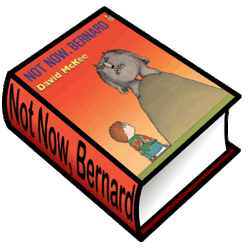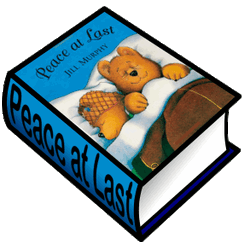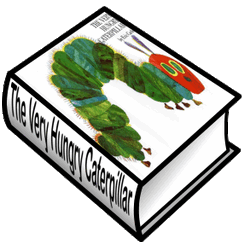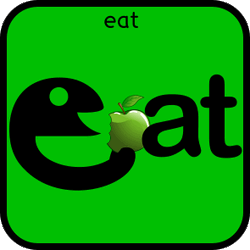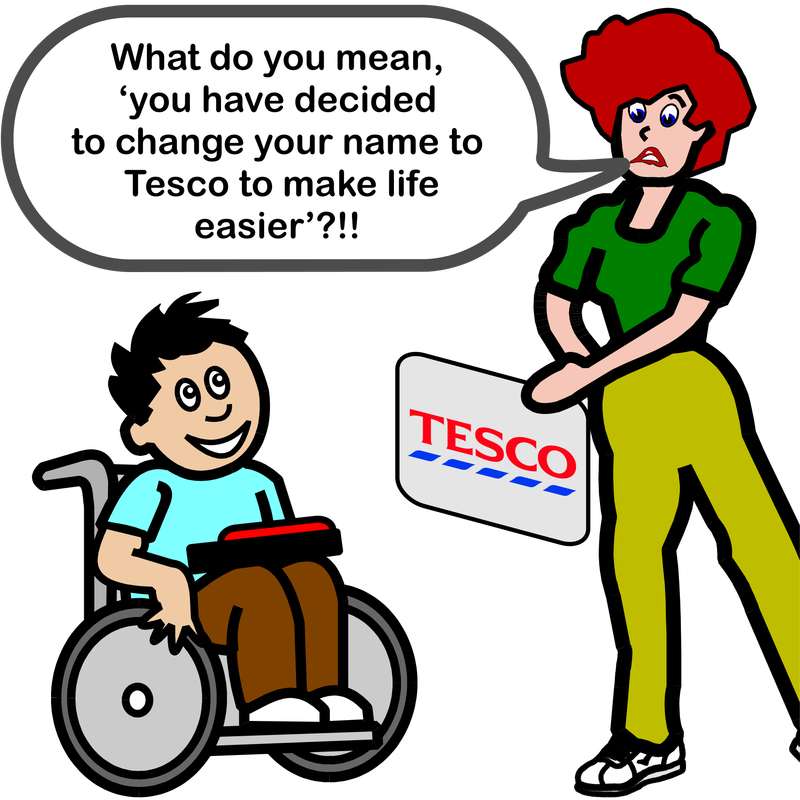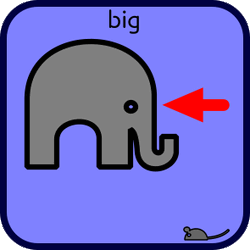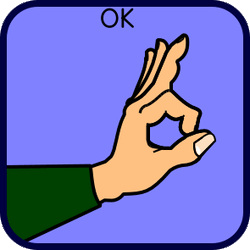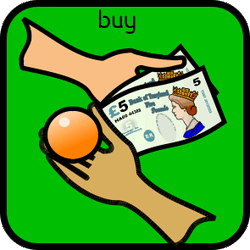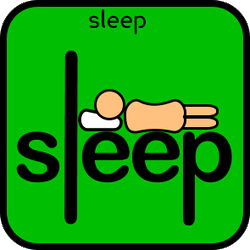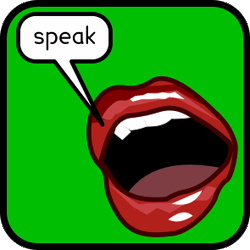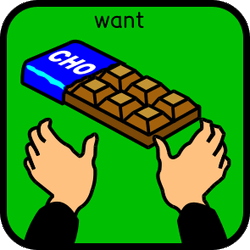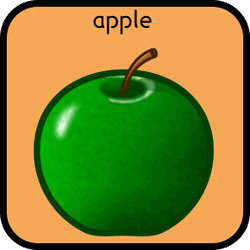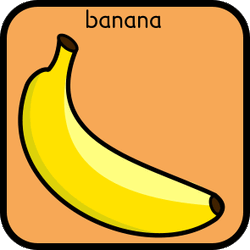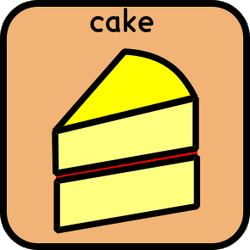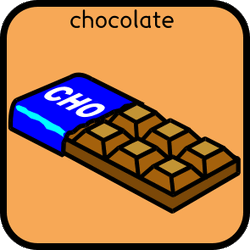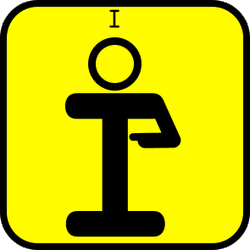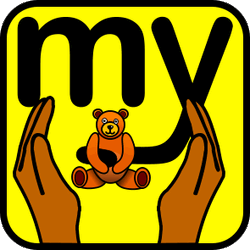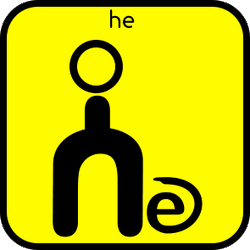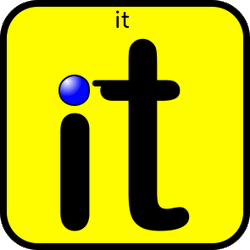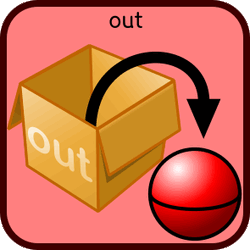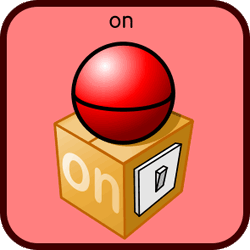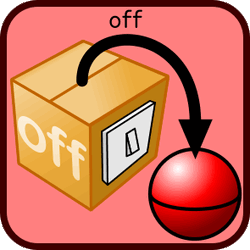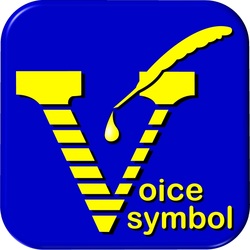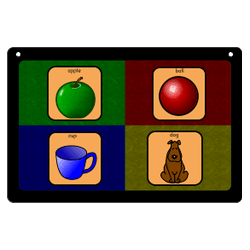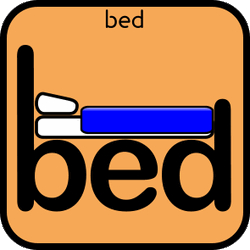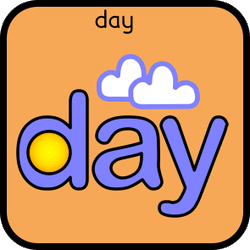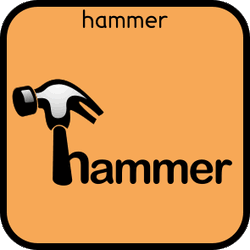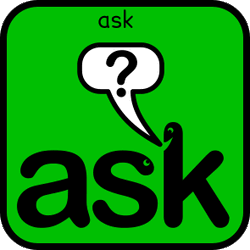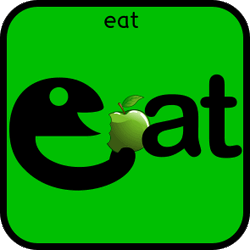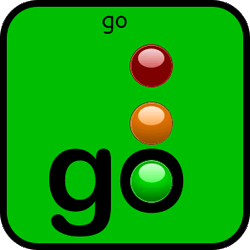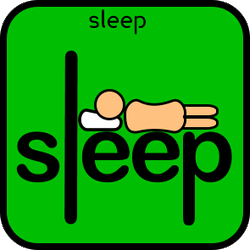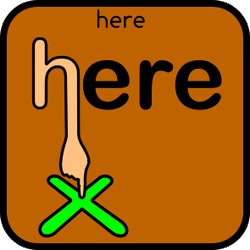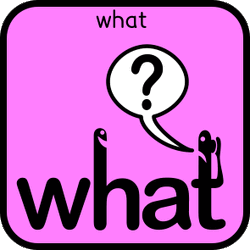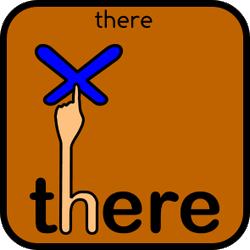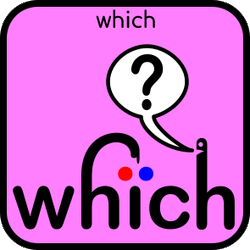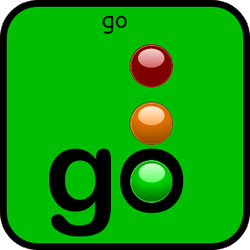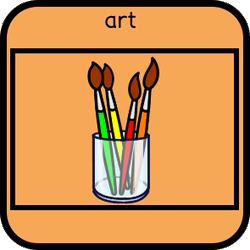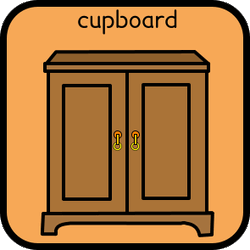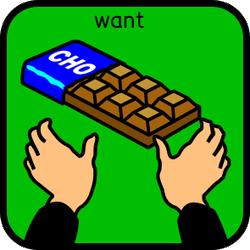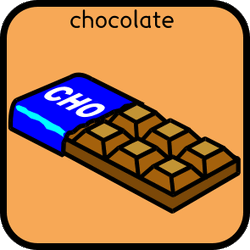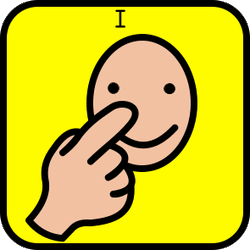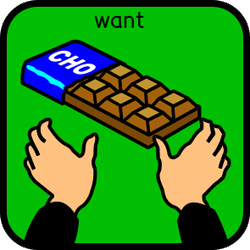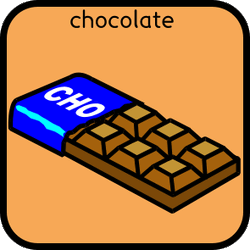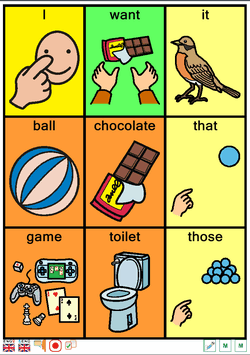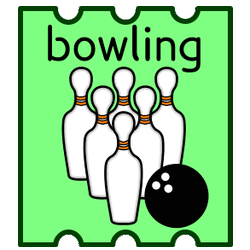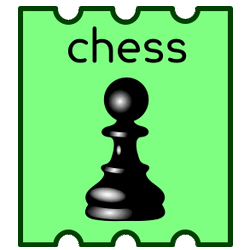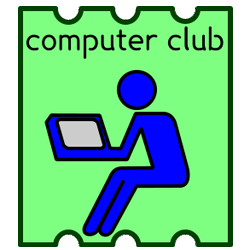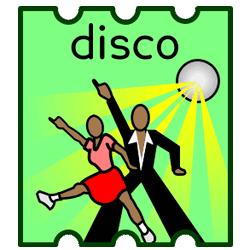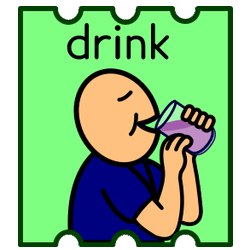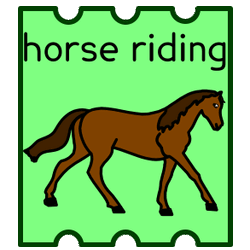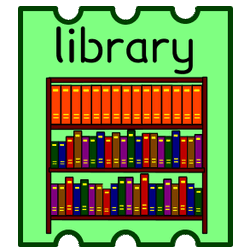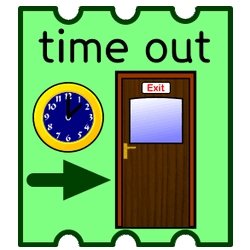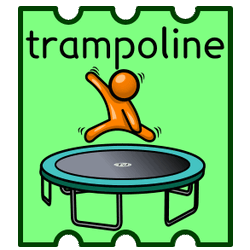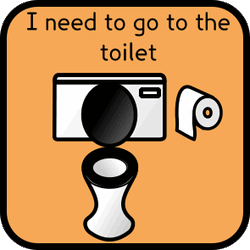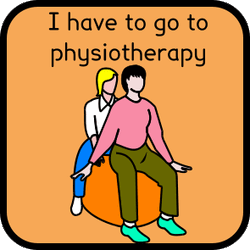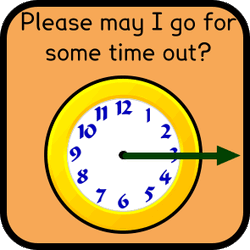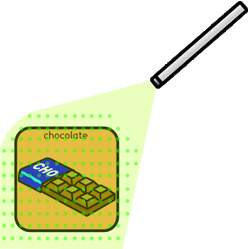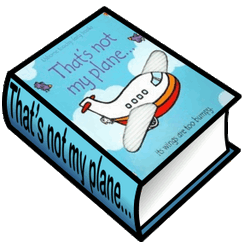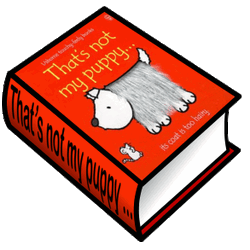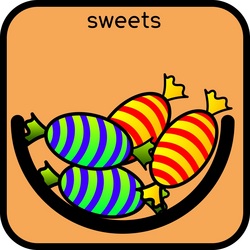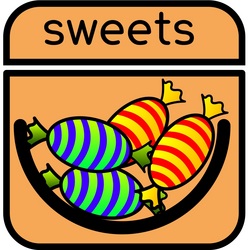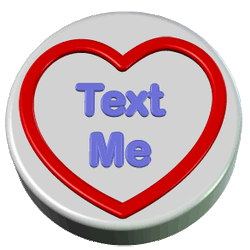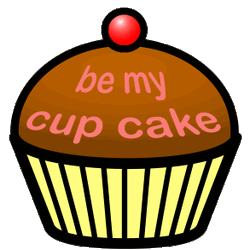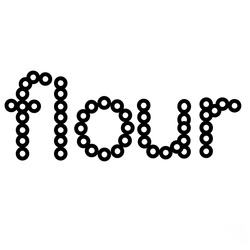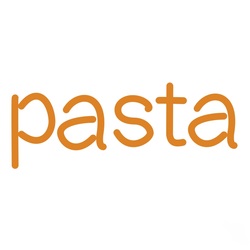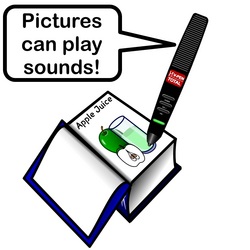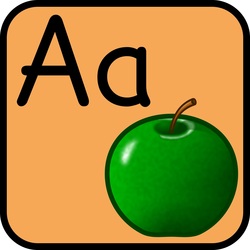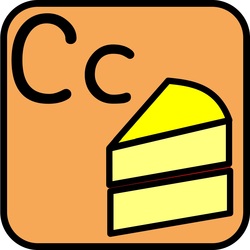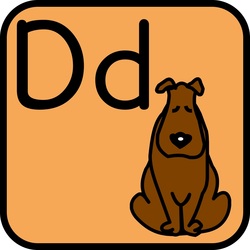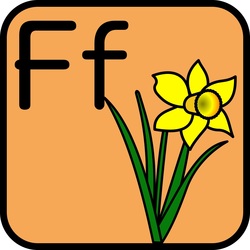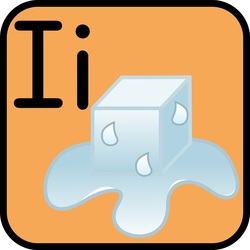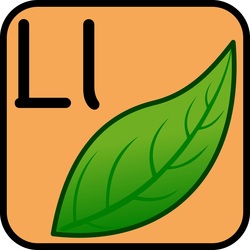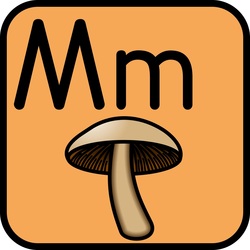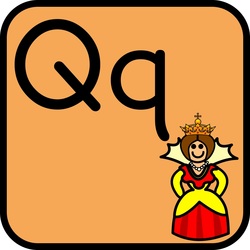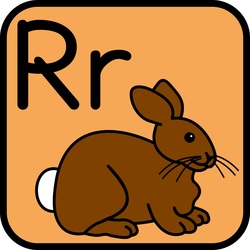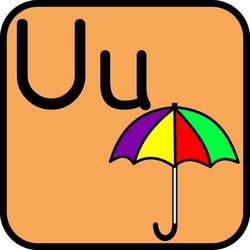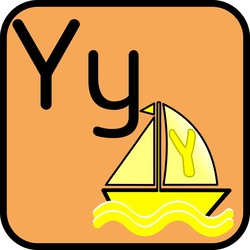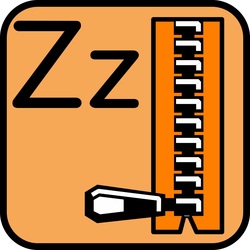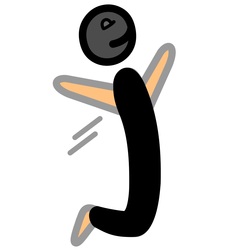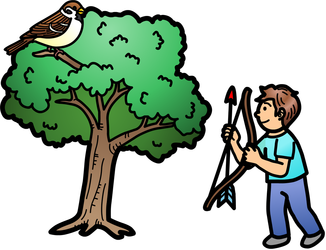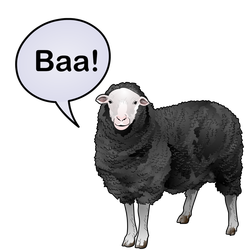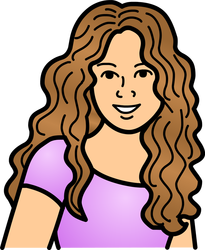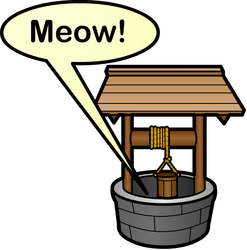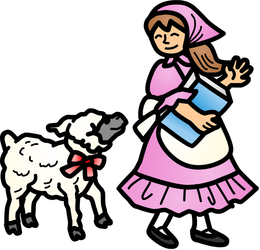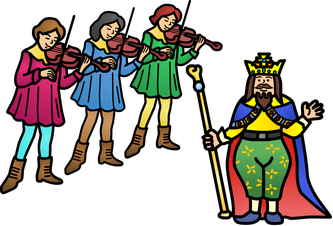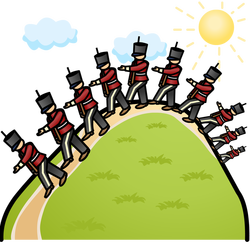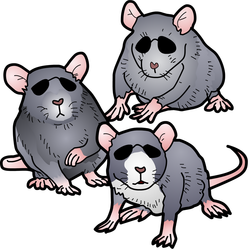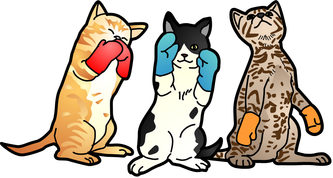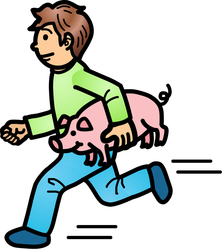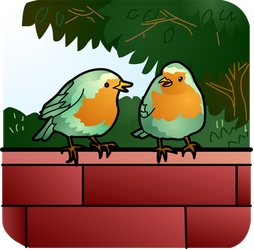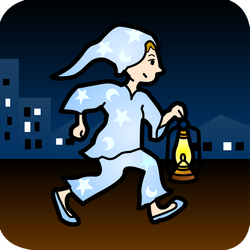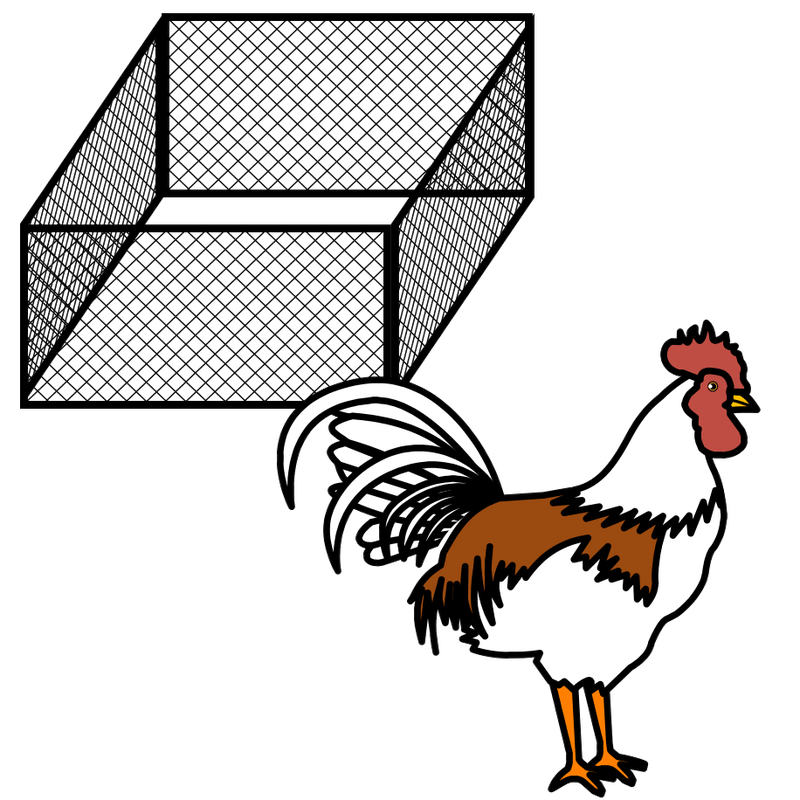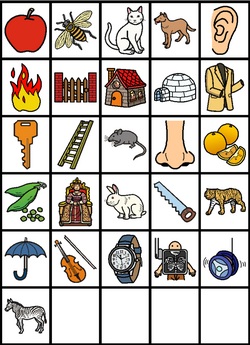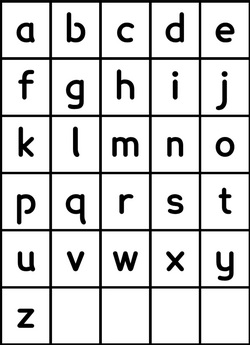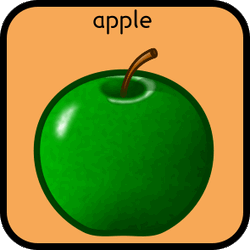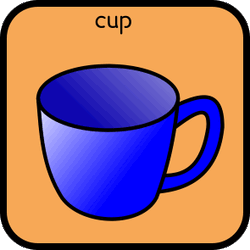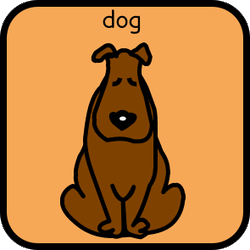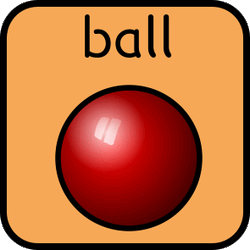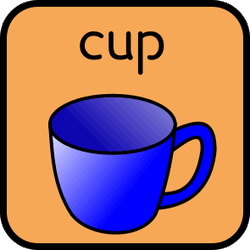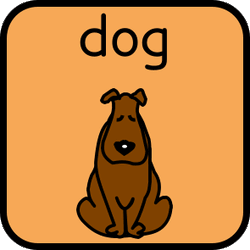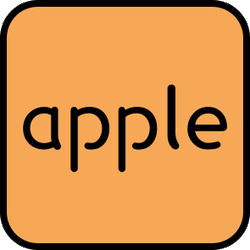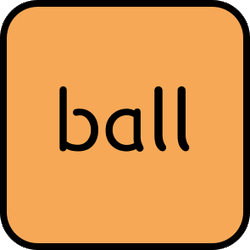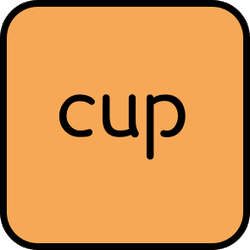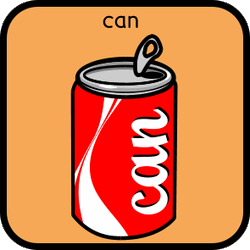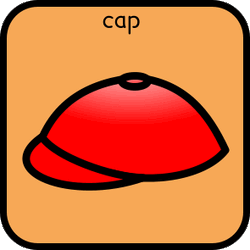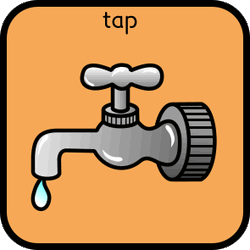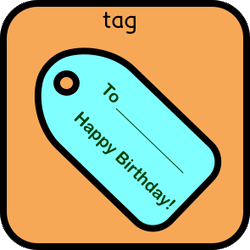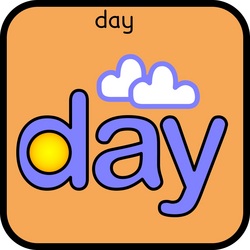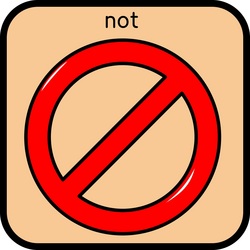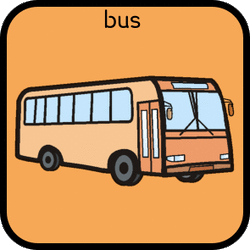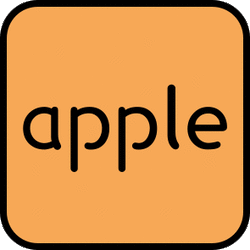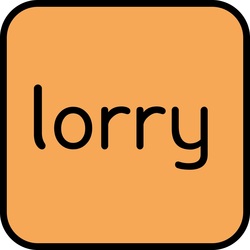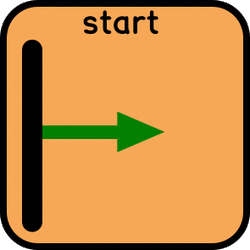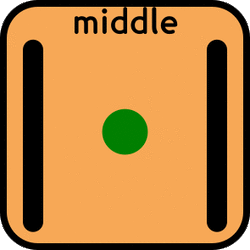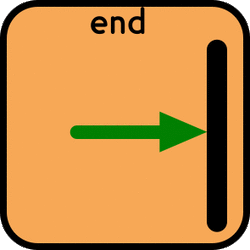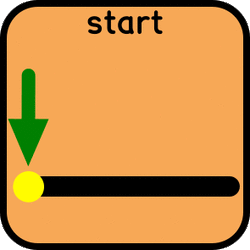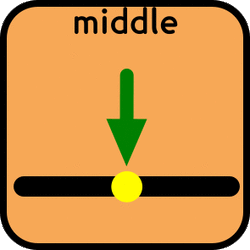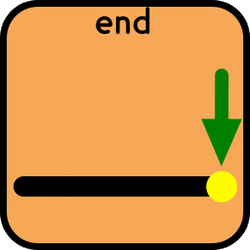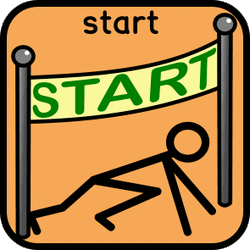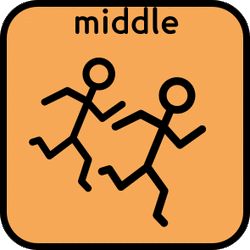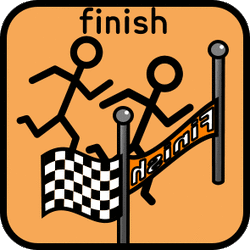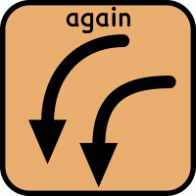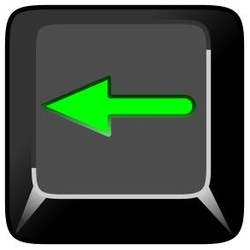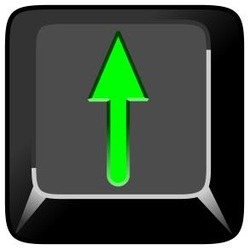101 ideas for ...
Literacy & AAC
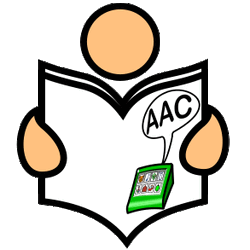
There is a growing awareness of the importance of literacy in AAC supported by an ever increasing amount of presentations, reference materials and publications (see idea 101).
“For persons who are unable to use their speech to help them in their literacy ascent, their AAC system can make a unique contribution to both the instructional scaffolding that supports their learning and the language foundation upon which the scaffolding depends.” Shirley McNaughton (Blissymbolics 2006)
Literacy is important in virtually all aspects of our daily lives. It is fundamental in education, at work, in accessing the internet, in communicating with friends (e-mailing and texting for example), in ordering food off a menu ...
Literacy is an important tool for AAC too. Without it, it is impossible to access the many thousands of fringe words in a language. Without it, the Learner is limited to those fringe words that are provided by the system in use. While fringe words, by definition, may only be required infrequently, never-the-less, when you want to say ‘triceratops’ it is nice to be able to do so without playing twenty questions with the listener.
“Currently, the majority of individuals who require AAC do not have functional literacy skills.” Janice Light (The AAC – RERC Webcast Series 2010)
While there are Learners whose cognitive condition makes it unlikely that they will ever go on to develop emergent literacy skills, it is not our role to play God and simply decide that we will not bother. If we never make any attempt then, by definition, a person has no chance of gaining such skills. How do you win the lottery? You purchase a ticket! Sure, it’s a remote chance but, if you never purchase the ticket, you definitely will not win.
That is not to say that we begin by trying to teach Learners experiencing (for example) Profound and Multiple Learning Difficulties the letters of the alphabet! There are experiences which we can provide, as we are developing AAC skills, that will ‘pave the way’ for emergent literacy. Some of these experiences are outlined below.
While the list is not intended to be comprehensive and it is not expected that you will want to use all the ideas, TalkSense always likes to be thorough. So, if you feel that there is anything Talksense has missed out, or there is something we have gotten wrong, or you have another idea, or ...
Let Talksense know!
“For persons who are unable to use their speech to help them in their literacy ascent, their AAC system can make a unique contribution to both the instructional scaffolding that supports their learning and the language foundation upon which the scaffolding depends.” Shirley McNaughton (Blissymbolics 2006)
Literacy is important in virtually all aspects of our daily lives. It is fundamental in education, at work, in accessing the internet, in communicating with friends (e-mailing and texting for example), in ordering food off a menu ...
Literacy is an important tool for AAC too. Without it, it is impossible to access the many thousands of fringe words in a language. Without it, the Learner is limited to those fringe words that are provided by the system in use. While fringe words, by definition, may only be required infrequently, never-the-less, when you want to say ‘triceratops’ it is nice to be able to do so without playing twenty questions with the listener.
“Currently, the majority of individuals who require AAC do not have functional literacy skills.” Janice Light (The AAC – RERC Webcast Series 2010)
While there are Learners whose cognitive condition makes it unlikely that they will ever go on to develop emergent literacy skills, it is not our role to play God and simply decide that we will not bother. If we never make any attempt then, by definition, a person has no chance of gaining such skills. How do you win the lottery? You purchase a ticket! Sure, it’s a remote chance but, if you never purchase the ticket, you definitely will not win.
That is not to say that we begin by trying to teach Learners experiencing (for example) Profound and Multiple Learning Difficulties the letters of the alphabet! There are experiences which we can provide, as we are developing AAC skills, that will ‘pave the way’ for emergent literacy. Some of these experiences are outlined below.
While the list is not intended to be comprehensive and it is not expected that you will want to use all the ideas, TalkSense always likes to be thorough. So, if you feel that there is anything Talksense has missed out, or there is something we have gotten wrong, or you have another idea, or ...
Let Talksense know!
Why Learners fail

Talksense believes that it is NOT individuals who fail to develop communication skills but, rather, (significant) others who fail to teach the individual to communicate. Too often are practices observed in schools (and beyond) that would stifle the best of us had we been in such a situation. It is a similar problem with literacy, individuals do not fail to acquire at least some of the basic literacy skills simply because they are somehow incapable but, rather, because of the attitudes, expectations, behaviours and practices of Significant Others (Parents, Teachers, Therapists, Classroom Assistants, etc); even those who are well-intentioned. There are also the physical, social, and environmental barriers in an environment which may have a direct impact on a Learner's ability to interact independently with print and may affect the way others behave because of these 'expected' difficulties.
The following is a (non-exhaustive) list of potential reasons for non-acquisition of literacy in Learners of AAC:
- the attitudes and expectations of Significant Others;
- the priorities of Significant Others;
- the behaviours of Significant Others;
- the practices of Significant Others (even those that are well intentioned);
- time pressure on Significant Others leaves little time for teaching literacy;
- the quality of Learner experiences with print and other literacy related issues;
- the sparsity of Learner exposure to print in the environment;
- inability to access libraries and libraries lack of appropriate material;
- physical disability inhibits independent interaction with printed materials;
- cognitive condition means that the Learner does not interact with printed materials (unaided) in an manner that is appropriate to the
development of emergent literacy skills;
- illness and other reasons for poor attendance at school means a lack of consistent tuition in literacy;
- lack of Significant Other awareness of what to do when interacting with a Learner who requires AAC;
- a (genuine) belief that the Learners are incapable of developing such a level of skill therefore 'why waste time in the attempt?'
- not (part of) my job... I'm a teacher of ... I'm a therapist dealing with ... it's xxx's responsibility to do that ...
Teach Communication Not Literacy?
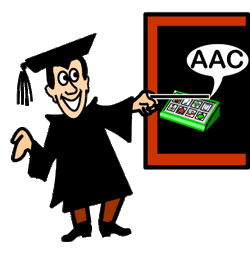
When I began to teach AAC, over 30 years ago now, I believed that literacy, while vitally important, was not my goal. My goal was the development of communication skills and I was really focussed on that specific goal to the exclusion of most others. It wasn't that I believed my pupils/students incapable of learning to be literate, it was more that is was difficult enough a challenge getting them able to communicate let alone being literate at the same time! I believed that they could learn to be literate after they learned to communicate ... indeed, that communication skills were the precursor to most other skills. I was aware that there were other 'powerful' arguments for not teaching literacy to students of AAC:
1. The Learner's cognitive condition precludes the ability to become literate;
2. If we, as teachers, cannot 'play God' and make decisions on what to exclude from a
child's curriculum then we should also be teaching chemistry, physics and Hegellian
Philosophy. Who am I to decide that this particular learner will not go on to be a
professor of philosophy? Surely, by not teaching such studies, I am potentially depriving
the individual of that future?
3. Time given to AAC development is often limited. If literacy and AAC are combined in some way, 'management' might claim that the
time spent teaching literacy is time spent on AAC and therefore, allocate less time directly to the development of AAC skills.
4. Other teachers had already tried and were failing to teach literacy to pupils. If a specialist teacher was incapable of developing
literacy skills in the pupils especially as they were immerse in a culture of literacy, then who am I to think I can do better?
5. Time is short. It's a difficult enough task without making it more difficult.
6. If Learner's are finding it difficult to work with symbols then, by definition, they will find it even more difficult to work with the alphabet:
an even more abstract symbol set.
7. Surely language comes before literacy? A child does not first learn to read and write and then begin to speak; they begin speaking
before they become literate.
8. No time to prepare extra resources for literacy on top of all the work I have to do to prepare communication materials.
9. Physical difficulties meant that Learners could not independently interact with print. Who is going to make books available to Learners
as they get older? Time is short... duties are heavy ...
10. No resources for literacy teaching.
11. I wasn't trained as a teacher of literacy. Not my job.
As I said, I used to believe that my goal was communication and not literacy. Furthermore, I used to preach to others that it was not their job either. I offered the above rationales to support this contention. However, I have come to realise, in a Wittgensteinian reversal of logic, that I was wrong (I confess) and that my approach should, as a matter of course, include literacy awareness.
" A confession has to be part of your new life" Ludwig Wittgenstein
Why did I change my viewpoint? Another quote from Wittgenstein will clarify the situation:
"A man will be imprisoned in a room with a door that's unlocked and opens inwards; as long as it does not occur to him to pull rather than push."
I was missing the obvious! Once I began to consider it in a new way, it became clear that I was in the wrong. I missed the fact that I could prepare the way for literacy development by making very simple changes to my approach. I realised that it wasn't necessary (or realistic) to stop doing what I was doing and start teaching 'A,B,C...' but that what I was already doing was preparing the ground for literacy development. Once I started to realise that it was my job to teach literacy (it is everyone's job) then I began to see lots of opportuities to do so. These 'opportunites' did not detract from my principal goal of developing communication skills and did not cause me huge amounts of extra work. Indeed the 'extra' work I did, and the 'extra' resources I prepared, served a communication function also and served me well in teaching AAC!
1. The Learner's cognitive condition precludes the ability to become literate;
2. If we, as teachers, cannot 'play God' and make decisions on what to exclude from a
child's curriculum then we should also be teaching chemistry, physics and Hegellian
Philosophy. Who am I to decide that this particular learner will not go on to be a
professor of philosophy? Surely, by not teaching such studies, I am potentially depriving
the individual of that future?
3. Time given to AAC development is often limited. If literacy and AAC are combined in some way, 'management' might claim that the
time spent teaching literacy is time spent on AAC and therefore, allocate less time directly to the development of AAC skills.
4. Other teachers had already tried and were failing to teach literacy to pupils. If a specialist teacher was incapable of developing
literacy skills in the pupils especially as they were immerse in a culture of literacy, then who am I to think I can do better?
5. Time is short. It's a difficult enough task without making it more difficult.
6. If Learner's are finding it difficult to work with symbols then, by definition, they will find it even more difficult to work with the alphabet:
an even more abstract symbol set.
7. Surely language comes before literacy? A child does not first learn to read and write and then begin to speak; they begin speaking
before they become literate.
8. No time to prepare extra resources for literacy on top of all the work I have to do to prepare communication materials.
9. Physical difficulties meant that Learners could not independently interact with print. Who is going to make books available to Learners
as they get older? Time is short... duties are heavy ...
10. No resources for literacy teaching.
11. I wasn't trained as a teacher of literacy. Not my job.
As I said, I used to believe that my goal was communication and not literacy. Furthermore, I used to preach to others that it was not their job either. I offered the above rationales to support this contention. However, I have come to realise, in a Wittgensteinian reversal of logic, that I was wrong (I confess) and that my approach should, as a matter of course, include literacy awareness.
" A confession has to be part of your new life" Ludwig Wittgenstein
Why did I change my viewpoint? Another quote from Wittgenstein will clarify the situation:
"A man will be imprisoned in a room with a door that's unlocked and opens inwards; as long as it does not occur to him to pull rather than push."
I was missing the obvious! Once I began to consider it in a new way, it became clear that I was in the wrong. I missed the fact that I could prepare the way for literacy development by making very simple changes to my approach. I realised that it wasn't necessary (or realistic) to stop doing what I was doing and start teaching 'A,B,C...' but that what I was already doing was preparing the ground for literacy development. Once I started to realise that it was my job to teach literacy (it is everyone's job) then I began to see lots of opportuities to do so. These 'opportunites' did not detract from my principal goal of developing communication skills and did not cause me huge amounts of extra work. Indeed the 'extra' work I did, and the 'extra' resources I prepared, served a communication function also and served me well in teaching AAC!
PAGE UNDER DEVELOPMENT

Sorry, but this page is still under development.
You can, of course, take look at what is below but it will not be complete while this symbol remains in place!
101 ideas ....

There now follows 101 suggestions, ideas, pointers, .... for developing literacy at one and the same time as the development of communication. If you have any other suggestions, comments, ctiticisms (steady!), or just wish to talk with Talksense about someone or some way to approach a situation, please get in touch using the form at the bottom of this web page.
The ideas are grouped into categories to make them easier to locate:
1. Basics;
2. Phonological Awareness;
3.
4.
5.
6.
Basics
Idea # 1: Immerse the Learner in print

Simple ideas are the best! This one should be is pretty obvious to all ...
In order to be good at doing something, you have to start to do it. If a child never interacts with print then s/he will never become literate. Don't be afraid of engaging all children in the world of print. Each child will benefit from the experience in their own way.
Learners (people who use AAC) need to interact repeatedly with print from as early an age as possible.
Learners need to interact with almost any source of printed material. These ‘sources’ need to be motivating (interesting) for the Learner. For example, it is no use a 'facilitator' reading the Encyclopaedia Britannica to a Learner from beginning to end unless the Learner finds it particularly motivational. What is motivational to an adult may not be motivational to a child.
Opportunities to interact with simple, bright and colourful, motivating, age-appropriate reading materials (books, comics, magazines ...) on a regular basis, from as early age as possible is, therefore, extremely important. Interacting means not just listening, but being actively involved:
- being able to choose the texts;
- being able to see and follow the text as it is read,
- being assisted to understand the story line (pictures, sensory stories, object cues ...);
- being able to comment on the text;
- being able to' instruct' the reader;
- being able to join in at appropriate moments;
- having repeated access to the same text;
- making sounds as appropriate during the reading of a text;
- having opportunities to rhyme words in a text;
- having fun!
Idea # 2: As you teach AAC - teach Literacy,
As you teach Literacy - teach AAC!
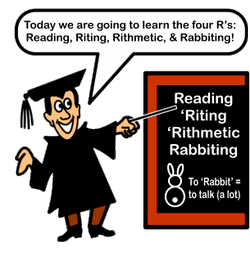
The cartoon depicts a teacher informing his class of the 'four R's': included is the new 'R' ... Rabbiting, which is a British colloquial term for talking a lot. The point being made is that the two areas of study 'literacy' and 'AAC' are not mutually exclusive but, rather, as you teach one you are almost certainly going to touch on the other even if you do not put any effort into it. It follows, therefore. if you put a little effort into ensuring that the one is included with the other you (and, more importantly, the Learenrs) will reap great benefits.
The Learner who is literate will find accesssing fringe vocabulary an easier process than the Learner who is not. Most AAC systems provide ready access to core vocabulary, it's the fringe words that are harder (if not impossible) to reach. As most AAC systems offer some form of vocabulary prediction system through spelling ... all words are obtainable within a few key strokes.
Adding literacy into AAC does not require hours of extra work, it just means that as you prepare for one you need to pay a little attention to the other. Resources for AAC can become resources for literacy and resources for literacy can become resources for AAC. It does NOT double the work load: It is simply working smarter not harder!
Idea # 3: Core Vocabulary Beginnings
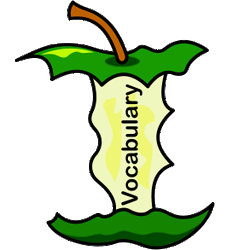
There are words in any language that are used more frequently than others . The list of such words is very similar whether we are talking about spoken or written language. The first 500 words on the list are generally independent of age, sex, occupation, time of day or year, and even topic of conversation! The biggest collection of English vocabulary in the world is the Oxford English Corpus. It may surprise you to know that, in this collection of over two billion words, just TEN (root) words make up 25% of the total and 100 (root) words 50%. Words such as 'I','you','it', 'do', 'have' appear in almost every sentence and, once we list the top 100 words, it is almost impossible to compose a sentence that does not include at least one of them. It is therefore important for language learning and for literacy that these words feature prominently in all that we do. We should not be simply focusing on a list of nouns because, believe it or not, there are actually very few nouns in the top 100 most frequently used words! For a comprehensive listing of core vocabularies in English go here.
That is not to say we should ignore Fringe (the opposite of Core) Vocabulary. Many children's books contain a lot of such words (monster, cat, bear, hunt, caterpillar ...). We cannot ignore them! However, look at the Core Vocabulary contained in the following sentence, 'We are going on a bear hunt' ... the first five words are Core, the last two are Fringe. Once the child finishes with that particular book, how many times is s/he likely to encounter the words 'bear' or 'hunt'? Pick up another child's book and look for them in it ... you are unlikely to find them. Thus, while we cannot ignore them: 'We are going on a ...' has little meaning without the concluding Fringe words (we could use, 'We are going to look for an animal' to keep it all in Core), we should not focus exclusively on (Fringe) nouns at the beginning, even though it is very tempting to do so because they are usually easier to teach. The opposite is also true: we should not focus on Core and ignore the fringe - rather, a healthy balance between the two is advocated.
Idea # 4: Engineer the environment for AAC and Literacy
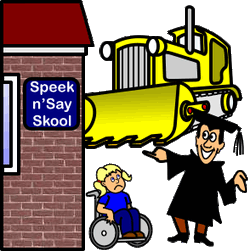
In order to support both the development of AAC and Literacy, it is advisable to 'Engineer the Educational Environment'. Environmental Engineering is a grand way of saying that the environment should be organised in ways that will both promote and support (not inhibit) the skills we are seeking. It doesn't necessarily mean that you have to knock down walls and rebuild the structure as the teacher in the cartoon is suggesting! However, it may mean re-organizing the way a particular room's furniture is arranged.
There are many ways in which the environment can be engineered to support the development of both AAC and literacy, some of which are covered in the ideas that follow. I would like to say 'all of which are covered in the ideas that follow' but that would assume I have covered every idea conceivable!
Ideas (covered at some point below) include:
|
In accordance with TalkSense's principles, I have just organised a little Environmental Engineering for the school. Shouldn't disrupt things too much!
|
- Labelling the environment;
- Symbol and Text Displays; - Exit the Room Requests; - Accessible and inclusive Libraries; - Canteen Communication |
Idea # 5: Choose books with repeated story lines
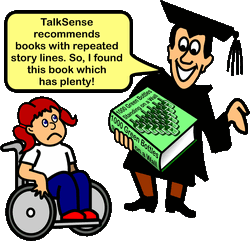
Books with repeated story lines are typically good to use with Learners who are developing emergent literacy skills. The Reader can provide the Learner with a means to say the repeated line (V-Pen and symbol, BIGmack, SGD, other AAC system) and then encourage the Learner to use the system to say the line at the appropriate time. It may be that the Reader pauses, looks expectantly at the Learner, then at the AAC system in order to prompt for the line until the Learner is doing it for him/herself.
Generally, the rule is that, such ‘prompts’ should go from the least intrusive to the most intrusive: therefore, physically taking the Learner’s hand and facilitating him/her to access the AAC system should be among the very last strategies adopted.
There are lots and lots of books with repeated story line. Spend some time browsing in your local children's book store! Take a look at the 'that's not my ...' series by Fiona Watt
(Usborne touchy-feely books)
Not now Bernard Oh no! But he was still hungry We're going on a bear hunt
I can't stand this he ate through We're gonna catch a big one
I can't stand this he ate through We're gonna catch a big one
Children's Books with repeated story lines. Many are available through Amazon (search for the title). Lots are available in varying languages (including Chinese)
|
Aardema, V.
Aliki Aliki Alborough, J. Alborough, J. Alborough, J. Alborough, J. Allen, P. Allen, R.V. Allen, R.V. Archambault, J & Martin, Jr. B. Asch, F. Asch, F. Asch, F. Asch, F. Asch, F. Asch, F. Asch, F. Asch, F. Asch, F. Asch, F. Asch, F. Asch, F. Asch, F. Asch, F. Asch, F. Asch, F. Astley, J. Aylesworth, J. Aylesworth, J. Baer, G. Baker, A. Baker, K. Barrett, J. Barton, B. Becker, J. Bennett, J. Blackall, S. Blackstone, S. Blake, Q. Boniface, W. Boynton, S. Boynton, S. Boynton, S. Boynton, S. Brandenberg, F. Brown, M.W. Brown, M.W. Brown, M.W. Brown, R. Burningham, J. Burningham, J. Butler, D. Campbell, R. Campbell, R. Campbell, R. Campbell, R. Carle, E. Carle, E. Carle, E. Carle, E. Carle, E. Carle, E. Carle, E. Carle, E. Carle, E. Carle, E. Carle, E. Carlson, N. Carlson, N. Carlstrom, N.W. Cartwright, S. Christelow, E. Colandro, L. Colandro, L. Colandro, L. Colandro, L. Colandro, L. Colandro, L. Colandro, L. Colandro, L. Colandro, L. Cooney, B. Cowley, J. Cowley, J. Cowley, J. Coxe, M. Croser, J. & Vassiliou, S. Dale, P. Day, D. Delany, A. De Regniers, B.S. De Regniers, B.S. Dijs, C. Droyd, A. Dodd, L. Dodd, L. Doyle, C. Dugan, B. Dunbar, J. Eastman, P.D. Emberley, B. Emberley, E. Ernst, L.C. Falconer, E. Falwell, C. Faulkner, M. Flack, M. Fox, M. Fox, M. Fox, M. Fox, M. Framst, L. Framst, L. Freymann, S. Gag, W. Galdone, P. Galdone, P. Galdone, P. Galdone, P. Galdone, P. Gale, L. Gelman, R.G. Gilman, P. Ginsburg, M. Golden Books Golden Books Gordon, J. R. Grabien, D. Gravett, E, Greeley, V. Grindley, S. Grindley, S. Guarino, D. Guy, G. F. Hamsa, B. Hawkins, C. Hayes, S. Hennesy, B.G. Henkes, Kevin Hill, E. Hoberman, M. Hogrogian, N. Holzwarth, W. & Erlbruch, W. Hopgood, T. Hutchins, P. Hutchins, P. Hutchins, P. Hutchins, P. Hutchins, P. Hutchins, P. Hutchins, P. Ivimey, J. Jindrich, J. Johnson, T. Jonas, A. Joosse, B. Jovanovich, H. Kahn, J. Kalan, R. Kalan, R. Kellogg, S. Kent, J. King, B. King-DeBaun, P. King-DeBaun, P. Knowles, T. Koontz, R. Kovalski, M. Kraus, R. Kraus, R. Kraus, R. Kraus, R. Kraus, R., & Aruego, J. Krauss, Ruth Krauss, Ruth Langstaff, J. Langstaff, J. Lawston, L. Lewis, K. Lewis, K. Lindbergh, R. Lindbergh, R. Livingston, M. Lobel, A. Lobel, A. Locker, T. Lockwood, P. & Vulliamy, C. Long, M. Maxner, J. MacDonald, E. Marshall, J. Martin, B. Martin, B. Martin, B. Martin, B. Martin, B. Martin, B. Masurel, C. & Henry, M.H. Mayer, M. Mayer, M. Mayer, M. Mayer, M. Mayer, M. Maxner, J. McBratney, S. McGilvray, R McGuire, L. McKee, D. McKissack, F. & P. McKissack P. and Clovis,M McNair, P., & Shioleno, C. Melville, H. Metzger, S. Miller, S.S. Miranda, A. Mosel, A. Most, B. Most, B. Munsch, R Munsch, R. Munsch, R. Munsch, R., & Martchenko, M. Murphy, J. Myers, T. Neitzel, S. Nelson, J. Numeroff, L.J. Parr, T. Patricelli, L. Patricelli, L. Peek, M. Peppe, R. Pereira, L. & Solomon, M. Perkins, A. Pienkowski, J. Pienkowski, J. Pienkowski, J. Pienkowski, J. Pizer, A. Pomerantz, C. Pryor, A. Quackenbush, R. Raffi Raffi Raschaka, C. Rathmann, P. Reader's Digest Rice, Eve Rice, Eve Roach, V.A. Roach, V.A. Roach, V.A. Roach, V.A. Roach, V.A. Roach, V.A. Roach, V.A. Roach, V.A. Robart, R. Roberts, J.M. Roffey, M. Rogers, P. Rosen, M. & Oxenbury, H. Ross, T. Saltzberg, B. Sawicki, N. J. Scieszka, J. Sendak, M. Sendak, M. Serffozo, M. Seuss, Dr. Seuss, Dr. Seuss, Dr. Shannon, G. Shannon, G. Shaw, C.B. Shiefman, V. Sloat, T. Slobodkina, E. Stead, P. Stevens, H. Stevens, J. Suteev, V., Dewey, A., Aruego, J., & Ginsburg, M. Swanson, S.M. Taback, S. Tafuri, N. Tyler, J. & Hawthorn, P. Van Laan, N. Van Laan, N. Van Laan, N. Viorst, J. Vipont, E. Voce, L. Waber, B. Waddell, M. Waddell, M. Waddell, M., & Firth, B. Wadsworth, O. Watanabe S. Watt, F. West, C. West, C. West, C. West, C. West, C. West, C. West, C. Westcott, N. White Carlstrom, N. Wilburn, K. Williams, L. Williams, S. Wilson, K. & Chapman, J. Wing, N. Winters, K. Wolff, F. & Kozielski, D. Wolkstein, D. Wood, A. Wood, A. Wood, A. Wood, J. Wylie, J. and D. Wylie, J. and D. Yolen, J. Zimmerman, Andrea Zimmermann, H. W. |
Why Mosquitos Buzz in People's Ears
Go Tell Aunt Rhody My five senses. Hug Yes Tall Where's My Teddy? Bertie and the bear I Love Ladybugs The Dinosaur Land A Beautiful Feast for a Big King Cat Goodbye House Happy Birthday, Moon Here Comes The Cat Just Like Daddy Monkey face. Moonbear's Bargain Moonbear's Canoe Moonbear's Dream Moonbear's Friend Moonbear's Pet Moonbear's Shadow Moonbear's Skyfire Mooncake Moondance Moongame Popcorn When one cat woke up Naughty Little Monkeys Old Black Fly Thump, Thump, Rat-a-Tat-Tat Two tiny mice Who is the beast? Animals Should Definitely Not Act Like People Dinosaurs, dinosaurs Seven little rabbits. Teeny Tiny Knock, Knock Bear on a Bike Mr. Magnolia Five Little Ghosts Blue Hat, Green Hat Doggies Moo Baa La La La Yellow Hat, Red Hat Aunt Nina, good night Goodnight Moon Home for a bunny The Important Book A Dark, Dark Tale Mr. Gumpy's Outing Mr. Gumpy's Motor Car A Happy Tale Dear Santa Dear Zoo It's mine Oh Dear 1, 2, 3 to the Zoo Do You Want To Be My Friend? Have You Seen My Cat? Rooster's Off to See the World The Bad Tempered Ladybird The mixed-up chameleon The secret birthday message The Very Busy Spider The Very Hungry Caterpillar The Very Quiet Cricket Today is Monday I Like Me How to Lose All Your Friends Jesse Bear, What Will You Wear? Who's Making That Mess? Five Little Monkeys Jumping on the Bed There Was an Old Lady Who Swallowed a Bat There Was an Old Lady Who Swallowed a Bell There Was an Old Lady Who Swallowed a Chick There Was an Old Lady Who Swallowed a Clover There Was an Old Lady Who Swallowed a Rose There Was an Old Lady Who Swallowed a Shell There Was an Old Lady Who Swallowed Some Books There Was an Old Lady Who Swallowed Some Leaves There Was an Old Lady Who Swallowed Some Snow Miss Rumphius Mrs. Wishy-Washy The Tiny Woman's Coat Who Will Be My Mother Whose Footprints? Stuck in the Mud Ten in the Bed King of the Woods Gunnywolf Going for a Walk How Joe the Bear and Sam The Mouse Got Together Are You My Mommy? Goodnight iPad Hairy Maclary from Donaldson's Dairy Hairy Maclary Scatter cat You Can't Catch Me Let's Go Shopping Four Fierce Kittens Are You My Mother? Drummer Hoff Klippity klop Up to Ten and Down Again The house that Jack built Shape Capers Jack and the Beanstalk Ask Mr. Bear Hattie and the Fox Shoes From Grandpa Time For Bed Whoever You Are Kelly's Garden On My Walk Knock, Knock Millions of cats Henny Penny The Gingerbread Man The Teeny, Tiny Woman The Three Billy Goats Gruff The Three Little Pigs The Animals of Farmer Jones I Went to the Zoo Jillian Jiggs The Chick and the Duckling The Little Red Hen The Three Little Pigs Two Bad Babies A Dark, Dark Tale Wolf Won't Bite Where's My Share? Don't Rock the Boat! Knock, Knock! Who's There? Is Your Mama A Llama? Black Crow, Black Crow Dirty Larry Old Mother Hubbard This is the Bear and the Picnic Lunch Jake Baked the Cake Kitten's First Full Moon Where's Spot? A House is a House for Me One fine day The Story of the Little Mole . Wow! Said the Owl 1 Hunter Little Pink Pig Rosie's Walk Ten Red Apples The Doorbell Rang Titch We're Going on a Picnic! Three Blind Mice But that wasn't the best part Yonder Color dance Mama, do you love me? Mike's Kite You Can't Catch Me Jump, Frog, Jump! Stop, Thief! Pinkerton behave! The Fat Cat Sitting on the Farm Storytime Storytime, Just For Fun! No, Barnaby This Old Man The Wheels on the Bus Come Out and Play Leo the Late Bloomer Noel the Coward Where are You Going, Little Mouse? Whose mouse are you? Big and Little The Carrot Seed Oh, A-Hunting We Will Go Ol' Dan Tucker Can You Hop? Chugga Chugga Choo Choo Tugga Tugga Tugboat The Day the Goose Got Loose There's a Cow in the Road! Dilly Dilly Piccalilli A treeful of pigs The Rose in My Garden Catskill Eagle Cat Boy! How I Became a Pirate Nicholas the Cricket Mike's Kite The Three Little Pigs Brown Bear, Brown Bear, what do you see? Chicka Chicka Boom Boom Fire! Fire! Said Mrs. McGuire Good Night, Mr. Beetle Polar Bear, Polar Bear, what do you hear? The Braggin' Dragon Good Night! Baby Sister Says No I Was So Mad Just For You Me, Too What Do You Do With a Kangaroo? Nicholas the Cricket Guess How Much I Love You Don't Climb Out of the Window Tonight Brush Your Teeth Please Not Now Bernard Constance Stumbles Who is coming? Quick Tech Readable, Repeatable Stories and Activities Catskill Eagle Five Little Sharks Swimming in the Sea Three Stories You Can Read to Your Dog To Market, To Market Tikki Tikki Tembo If the Dinosaurs Came Back The cow that went OINK. Love You Forever Mud Puddle Mortimer Moira’s birthday. Peace at Last Good Babies: A Tale of Trolls, Humans, a Witch and a Switch The Jacket I Wear in the Snow Peanut Butter and Jelly If You Give a Mouse a Cookie We Belong Together: A Book About Adoption and Families Quiet Loud Yummy Yucky Mary Wore Her Red Dress The House That Jack Built Oh! A Bubble… Hand, Hand, Fingers, Thumb Eggs for Tea Little Monsters Pet Food Phone Book It's A Perfect Day Flap your wings and try The Baby Blue Cat Who Said No She'll Be Comin' Round the Mountain Five Little Ducks The Wheels on the Bus Yo! Yes? Good Night, Gorilla Brush Your Teeth Please Goodnight, Goodnight Grammy's House A dream in a wishing well At the Carnival At the zoo Chasing butterflies I can spell dinosaur I Love Ladybugs Ten Times Three dogs at my door The Cake That Mack Ate King of the Wood I spy at the zoo What's Wrong with Tom? We're Going on a Bear Hunt Super Dooper Jezebel Peekaboo Kisses The Little Red House The True Story of the Three Little Pigs! Pierre Chicken Soup With Rice Who Said Red? My Many Coloured Days Green Eggs and Ham The Cat in the Hat Dance Away The Piney Woods Peddler It Looked Like Spilt Milk Sunday Potatoes, Monday Potatoes The Thing That Bothered Farmer Brown Caps For Sale A Sick Day for Amos McGee The Fat Mouse The House That Jack Built The chick and the duckling The House in the Night Joseph Had a Little Overcoat Have You Seen My Duckling? Who's Making That Mess? A Mouse in my House Possum Come A-Knocking The Big Fat Worm Alexander and the Terrible, Horrible, No Good, Very Bad Day The Elephant and the Bad Boy Over in the meadow: A traditional counting rhyme. Bearsie Bear and the Suprise Sleepover Party Owl Babies Sailor Bear Let's Go Home Little Bear Over in the Meadow How Do I Put It On? That's not my series (Usborne Touchy Feely Books) “Buzz, Buzz, Buzz” Went Bumblebee Have You Seen the Crocodile? Hello, Great Big Bullfrog! I Bought My Love a Tabby Cat I Don't Care! Said the Bear "Not Me", Said the Monkey "Pardon?" said the giraffe I Know an Old Lady Who Swallowed a Fly Jesse Bear, What Will You Wear? The Gingerbread Boy The Little Old Lady Who Was Not Afraid of Anything I Went Walking Bear Snores On Hippity Hop, Frog on Top On My Walk On Halloween Night Step By Step King Bidgood's in the Bathtub Silly Sally The Napping House Moo, Moo, Brown Cow A Big Fish Story A More or Less Fish Story Owl Moon Trashy Town Henny Penny |
The above list may be comprehensive but is NOT exhaustive. If you know of any other children's books with repeated story lines please let Talksense know and we will add them to the list.
Idea # 6: Choose books with large print
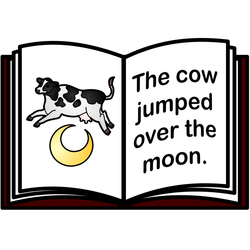
Studies have shown books with larger bolder print (20 point font or larger) encourage more Learner interaction with the the printed word (see, for example Ezell & Justice (2000); Justice & Ezell (2000)). As promoting interaction with print is what we desire, it is advisable to look for books with larger print and fewer words per page. There will be a lot of variation in the print size in the books that are available in any classroom and or home. As such, not every available book will hold the same ability in this area.
Having fewer words per page (an average of five or less is recommended: see Justice, L.M., & Kaderavek, J. 2002) also assists Learners to focus more easily on the salient features of letters and words and, as such, helps promote word recognition.
If the same word appears frequently throughout a text Learners are more likely to begin to recognise it then words that only appear once. As such (and as has already been suggested), stories with either repeated story lines or stories that use the same word or words on each page may be preferable.
It is also advisable (as can be seen below) to let the Learner choose the book that s/he would like to read together with a Significant Other. It should be interesting to see what style of book (big pictures, big print, lift the flap, etc) your Learners will choose.
Idea # 7: Choose stories with embedded text
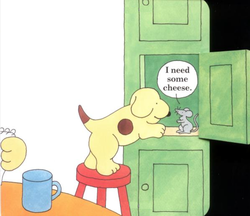
Research has shown that young children's eyes will fixate more on text that is embedded within images than the narrative text even if the narrative text is large and emboldened (see, for example, Justice & Lankford (2002)). Embedded text has also been shown to promote more spontaneous utterances from Learners (see Ezell & Justice (2000)).
Embedded text is text that forms part of the picture or pictures on the page rather than text above, below or to one side of the image. For example, in the image from Eric Hill's 'Spot bakes a cake' (Hill, 1994, Frederick Warne Publishers Ltd), the mouse is saying, "I need some cheese". There are many children's books with examples of embedded text within images and it is worthwhile in keeping an eye out for them while browsing in book stores on on line.
Examples of such books for adults are not as easy to find and staff may need to create their own materials. However, there lots of comic books out there that do exactly this and many of these are read by adults (the super hero ones for example). It should be possible to enlarge selected images from purchased comic books for use with a particular Learner in an educational environment.
Idea # 8: Let the Learner choose the texts
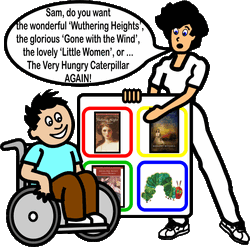
Typically, when children choose stories for an adult to read to them, they do not choose a different story every time but, and quite often to the annoyance of some adults, they might select the same story over and over again until they can almost predict every word as it is spoken. According to Erickson and Koppenhaver (2006), typically developing children hear their favourite story between 200 and 400 times and, as they do, they begin to interact with it more and more until they are in command. The non-speaking child, especially those with additional cognitive deficits, often cannot insist on the same book and, therefore, when Significant Others (quite naturally) choose a different book each time to read, they are unwittingly depriving the child of a very important source of learning.
Therefore, it is important that the reader allow the Learner to choose the text (the choice should always include previously read items). A repeated experience of the same material over and over is essential for the progress of some Learners. Being able to predict coming words and seeing the actual text means that a child can start to equate a particular piece of text to a particular word sound. It helps enormously, in this matter, if the adult finger-points to the words as s/he is reading.
An idea is to turn the front cover pictures of the book choices into symbols. These symbols can be used to allow the learner to make a choice of books at a later stage. Such symbols can be almost as large as the book itself to begin but, after successful use, they can be gradually reduced in size to allow them to be placed within the grid on a communication board (communication book, dynamic display, ...) such that the Learner can request a book without actually being in the presence of books. If colour coding is used then some Learners might find it easier to indicate a particular choice.
Therefore, it is important that the reader allow the Learner to choose the text (the choice should always include previously read items). A repeated experience of the same material over and over is essential for the progress of some Learners. Being able to predict coming words and seeing the actual text means that a child can start to equate a particular piece of text to a particular word sound. It helps enormously, in this matter, if the adult finger-points to the words as s/he is reading.
An idea is to turn the front cover pictures of the book choices into symbols. These symbols can be used to allow the learner to make a choice of books at a later stage. Such symbols can be almost as large as the book itself to begin but, after successful use, they can be gradually reduced in size to allow them to be placed within the grid on a communication board (communication book, dynamic display, ...) such that the Learner can request a book without actually being in the presence of books. If colour coding is used then some Learners might find it easier to indicate a particular choice.
Idea # 9: Talk about the items in the text as you read
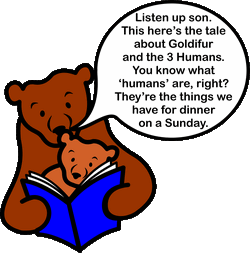
It is good practice, while reading to a Learner, to talk about and around the text and relate it to the Learner’s own experiences and knowledge. For example, 'Fringe' vocabulary words often pop up in children’s stories (adventure, dragon, bear, hunt, caterpillar, etc). It should be remembered that many Learners will have limited experiences of the real world and may not really be cognisant of such ‘fringe’ words. If we can illustrate these items and make them accessible to the Learner then we assist the understanding of the text, the print, as well as making the story a more enjoyable experience.
Here is a Chinese 'fringe' vocabulary word:
毛蟲
If you are not literate in Mandarin Chinese, you will not recognise it.
If however, I relate it to a picture ( below), it’s meaning becomes apparent. However, if I have never seen a caterpillar before, it is still not as comprehensive an experience as if I saw a caterpillar crawling on a leaf in my garden or, if I do not have a garden, in the park. There are Learners who do not know that milk comes from a cow or that chips (French fries) come from potatoes. I have experience of Learners who did not know the colour of burnt toast: because, as it was always prepared for them, if it was burnt, it was thrown away and a new piece of bread was toasted to perfection!
Bringing stories to life is a lot of fun for both the reader and the Learner. It can encompass many aspects of a school curriculum not just the development of literacy skills! Of course, you do not always have to illustrate every ‘fringe’ item of vocabulary with real objects: I have never actually seen a dragon but I know something about them! Seeing them in pictures in books and watching them in films helped develop my concept enormously.
In order to become literate, it is important that a person has a growing awareness of ‘language’ not just a set of ‘functional communication skills’. An awareness of language necessarily means some understanding of the meanings of words (semantics), how words can change their structure to take on a particular aspect of meaning (morphology), and how the words are put together (syntax). Interacting with the printed page is a first step on this road.
Idea # 10: Assist the Learner to follow the words as you read.

It is important that stories should not just be read: the Learner must be assisted to follow the text so that s/he can begin to associate aparticular sound with a particular letter combination and to understand that the funny little squiggles on the page are actually the things that tell the story.
There are several ways of assisting a Learner to follow text as you read. The most obvious one is to point to each word as you progress through the story. Occasionally, you can pause and (pretend) that you are having a little difficulty with a word and sound it out aloud! The Learner can see and hear how the word is constructed and how you are doing what you are doing: it's not magic, it's just knowing how those squiggles fit together to make sounds... well that and, perhaps, a little bit of magic!
How else could you assist a Learner to follow the text as you read? Here are just a few ideas:
- Prop up the book so that the Learner can clearly see it and your hands are free.
- Highlight each word with a laser pen. Your hand does not get in the way.
- Wear a glove puppet and let the puppet do the pointing to the words.
- Create a cut out creature or other favourite object (for example - rocketship) with a clear 'pointy bit' and let the creature point to the
words as you read.
- Other? If you have other ideas for this area, please contact me and let me know so that they can be added for all to share.
Idea # 11: Make reading time a quality experience for the Learner
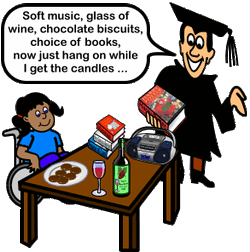
In the cartoon, the teacher is going a little over the top in attempting to make the reading experience 'special' for the Learner. He has provided soft music background, a glass of wine (non-alcoholic, of course!), chocolate biscuits, and a choice of reading material and is still trying to add to the quality of the experience. He has the right idea but moving down the wrong road!
In order that a Learner will come to love literacy lessons, it is up to Significant Others to provide a quality experience. It should be:
- Cosy, Comfortable, with increasing Learner Control;
- Friendly and Fun;
- Safe as well as Something to look forward to;
- Exciting and with reader Enthusiasm;
- Variable (not quite the same each time);
- Motivating.
Perhaps a 'special' area can be set up which is used for literacy development. We need to ask how can we make the area and the Learner's time in the area special: one to which the Learner looks forward each day. Some of the other ideas on this page relate directly to this point and may provide inspiration for the quality of experience.
For parents, it can be a time when parent and child can get close and cuddle up cosily to read together, with the parent providing access to AAC as well as focusing on the development of literacy skills.
Idea # 12: Repeat the same story with slight variety.
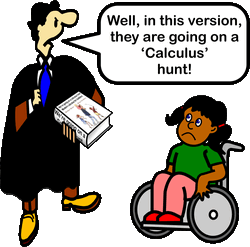
Research has shown that we typically require thousands of repetitions in order to master a motor task. Each repetition will likely vary slightly from others. Earlier (see above), it was noted that, in normal circumstances, children will demand to read the same book over and over again (maybe hundreds of times) as they increasingly feel confident about participating and then controlling the course of the reading. If we vary the text slightly each time it is read then, it keeps the story fresh and interesting and, allows the child to see that reading is a lot of fun. How would we vary a story? We might:
- act out parts of the story together;
- use different character voices;
- introduce props (sensory stories);
- introduce symbols;
- get others involved when possible;
- allow the Learners to make decisons about some aspect of the story;
- encourage the Learner to interact and control the way the story is told.
Idea # 13: Allow the Learner to choose the Reading Location

We need to give Learners more choice and more control (see item on control lower down this page). They can not only pick the story they want read and exert some control over the direction of the story (see below) but they should also be allowed to choose where they want to listen to and share in the story with the Significant Other.
Children (and adults) enjoy reading in different places: in a chair, on the floor, out in the garden, sat on cushions, ... Therefore, we should offer Learners a choice of where they would like to read as it provides the Learner with more control and can help to heighten the pleasure derived from the reading experience.
To avoid a learner saying 'Disney Land' as in the cartoon (!) a set of option symbols might be presented from which to pick: options which the Staff Member/ Significant Other knows s/he can deliver!
Idea # 14: Allow the Learner to determine the direction of some stories
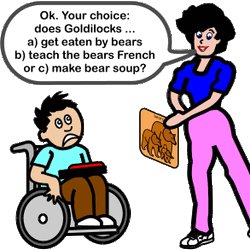
By using simple choice communication cards which can either be selected by pointing or attached to BIGmacks or equivalents, the Learner can be encouraged to interact with the story line and effect it in some way which does not significantly alter the story's flow. For example, if the story includes a meal, the learner could decide what the characters have to eat or drink. In most stories there will be some aspect that the Learner can control and for which symbols can provide a aspect of control and of choice.
- what the character eats;
- what the character drinks;
- what the character says;
- where the character puts something;
- when the character does something;
- why something happens...
Each time the story is read the Learner can choose a slightly different version.
Idea # 15: Give Learner a means to interact with the Reader & the text
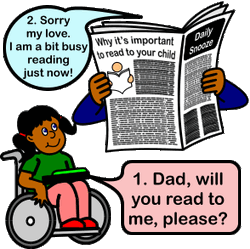
It is important that the Learner be provided with a simple means of control such that the Reader is not the one in charge of every aspect of the interaction with the text. This can be as simple as using an AAC system to allow the Learner to make a selection from a 2, 3, or 4 location grid to:
- give commands... “Read that again”, “Act it out”, “Let me see”, "Faster", "Turn page"
- ask questions... “What is that?”, "Why?", "What happens next?", "Who?"
- make comments... “Oh no!”, “that’s cool!” ...
Such interactive communication can also be provided through the use of low tech systems such as the BIGmack or equivalent. The V-Pen and Voice Symbol are also a very effective tools for this task. The Learner may even be provided with a system to choose the person to do the reading!
Idea # 16: Pause for thought

"The right word may be effective, but no word was ever as effective
as a rightly timed pause."
Mark Twain
Pausing occasionally and allowing a Learner the time and space to interact can heighten his/her enjoyment of reading (Justice, L.M., & Kaderavek, J. 2002). It can also promote the development of augmentative communication skills as the Learner attempts to comment on the story so far or to make his/her wishes and thoughts known.
as a rightly timed pause."
Mark Twain
Pausing occasionally and allowing a Learner the time and space to interact can heighten his/her enjoyment of reading (Justice, L.M., & Kaderavek, J. 2002). It can also promote the development of augmentative communication skills as the Learner attempts to comment on the story so far or to make his/her wishes and thoughts known.
Idea # 17: Don't be too controlling

When reading books with children, adults tend to maintain a high level of control (Kaderavek, J. & Sulzby, E. 1998). This can reduce a Learner's enjoyment of the story reading process to such an extent that they are not actively engaged or even dislike the activity. Thus it is important for the adult to give an amount of control over the process to the Learner and ensure that both participants adult and child / Significant Other and Learner play equal roles in the interaction (Rabidoux & MacDonald 2000). Story reading should always be a positive and pleasurable time for the Learner and one in which s/he can exert an equal amount of control over events. Sharing the process will make it more pleasurable for both parties.
"We need to decrease our use of both verbal and non-verbal control strategies. Storytime should be a pleasurable, positive experience for the child, one in which the child is able to exert some control." Kaderavek, J. & Sulzby, E. (2002)
"We need to decrease our use of both verbal and non-verbal control strategies. Storytime should be a pleasurable, positive experience for the child, one in which the child is able to exert some control." Kaderavek, J. & Sulzby, E. (2002)
Idea # 18: Encourage the Learner to predict what will happen next.
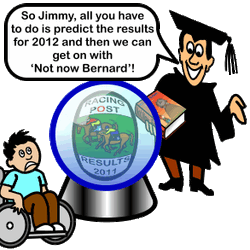
Oh dear, that caterpillar has gone and eaten so much food! What do you think is going to happen to him? Do you think he'll go to sleep? Or do you think he'll get a tummy ache? Or do you think he will carry on eating more food? You think he'll eat more food?! Well, let's turn the page and find out ...
If we are providing options to a User of AAC, it would be good to also provide a way of the Learner answering those options indpendently without having to list each in turn and wait for the 'nod'. A set of option cards could be provided from which the Learner could choose, for example. Such cards could be used again and again. The symbols could be used in a number of ways. They could be:
- used directly to allow the Learner to point (or eye point);
- placed on top of BIGmacks to provide voice output;
- produced with Voice Symbol so that they speak when accessed with the V-Pen;
- used on a SGD to provide voice output ...
Idea # 19: Literacy Include Our Needs
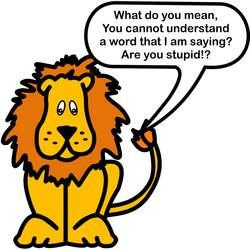
"If a lion could talk, we could not understand him."
Ludwig Wittgenstein (Philosophical Investigations, first published in 1953,page 223)
What?! That's crazy! If a lion could speak English then surely we would be able to understand what he was saying. Even if it could only speak lionese, if we had a translator then we would comprehend his message: wouldn't we? Wittgenstein was not specifically talking about lions of course, he could just as easily be talking about dinosaurs or any animal and many humans.
So what did Wittgenstein mean and how does it relate to emergent literacy? Wittgenstein is rather difficult to understand but I take him to mean that if a lion could speak, the language games he would use would be very unfamiliar to us because a lion's experience of the world and a human's experience are alien entities. In order to understand a lion we would have to approach the lion from a lion's perspective. Had we walked a mile in the lion's (metaphorical shoes) then we might begin something resembling a dialogue.
How does this apply to Learners experiencing severe communication difficulties? Well if we approach using just our language and our likes, there might be an issue because Learners with such difficulties may, by definition, have significant problems with language and certainly may not like the same things. We therefore cannot just expect such a Learner to comprehend all that we are saying via the medium of speech alone: we have to approach at the 'lion's level of experience and understanding'. In other words, we have to approach the Learner from the current experience and level of the Learner. That is, we need to be inclusive!
"If children don’t learn the way we teach,
We must strive to teach the way they learn."
Ignacio Estrada
As not everyone enjoys every aspect of the reading experience in the same way. you should tailor your reading activities with the Learner to the Learner's needs, abilities and likes:
"Limit your use of questions with children who do not appear to enjoy being asked questions.
If a child appears more interested in the pictures versus listening to the story,
or if the language demands of the story appear too difficult for the child,
modify the interaction to match the child's interests and skills."
Kaderavek, J. & Sulzby, E. (2002)
Ludwig Wittgenstein (Philosophical Investigations, first published in 1953,page 223)
What?! That's crazy! If a lion could speak English then surely we would be able to understand what he was saying. Even if it could only speak lionese, if we had a translator then we would comprehend his message: wouldn't we? Wittgenstein was not specifically talking about lions of course, he could just as easily be talking about dinosaurs or any animal and many humans.
So what did Wittgenstein mean and how does it relate to emergent literacy? Wittgenstein is rather difficult to understand but I take him to mean that if a lion could speak, the language games he would use would be very unfamiliar to us because a lion's experience of the world and a human's experience are alien entities. In order to understand a lion we would have to approach the lion from a lion's perspective. Had we walked a mile in the lion's (metaphorical shoes) then we might begin something resembling a dialogue.
How does this apply to Learners experiencing severe communication difficulties? Well if we approach using just our language and our likes, there might be an issue because Learners with such difficulties may, by definition, have significant problems with language and certainly may not like the same things. We therefore cannot just expect such a Learner to comprehend all that we are saying via the medium of speech alone: we have to approach at the 'lion's level of experience and understanding'. In other words, we have to approach the Learner from the current experience and level of the Learner. That is, we need to be inclusive!
"If children don’t learn the way we teach,
We must strive to teach the way they learn."
Ignacio Estrada
As not everyone enjoys every aspect of the reading experience in the same way. you should tailor your reading activities with the Learner to the Learner's needs, abilities and likes:
"Limit your use of questions with children who do not appear to enjoy being asked questions.
If a child appears more interested in the pictures versus listening to the story,
or if the language demands of the story appear too difficult for the child,
modify the interaction to match the child's interests and skills."
Kaderavek, J. & Sulzby, E. (2002)
Idea # 20: Guess What!
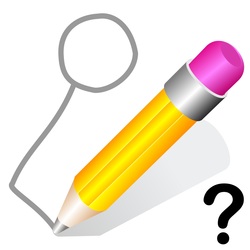
For those of you who do not know about the genius of Rolf Harris, he used to do a piece of painting on his TV show and, almost as soon as had placed a few brush strokes on the large canvas, he would say 'Can you guess what it is yet?" (which has become something of a catchphrase for him down the years). Guessing, making predictions and anticipating are all important tools in becoming literate. Therefore, we need to assist our Learners to develop these skills and be comfortable in so doing. It would be counter-productive, for example, if we encouraged a Learner to guess and then said something akin to 'Oh, don't be stupid!'
Guessing does not have to involve text initially; in their work on learning to read, Dorothy Jeffree and Margaret Skeffington (1980, Let Me Read, Human Horizons Series, Chapter 2) suggest that drawing simple pictures, and asking Learners to guess what they will be, is a good way of promoting emergent literacy skills. They note that the child with spech difficulties may find making a guess explicit problematic but suggest practical alternatives:
" What about the child who has speech difficulties so that his speech is unintelligible? There is no reason why he shold not play this game - in fact it may help him considerably. But you will have devise a different version for him. As well as the cards which you are going to draw on, you will need a collection of small objects or coloured pictures. When you draw a cat, for instance, he must find a model cat, or point to the coloured picture of a cat, to win." (Jeffree and Skeffinton, 1980, page 39)
In guessing at basic shapes the individual is learning to make sense of linear forms on paper and in developing the concept that lines on paper can represent some 'thing' from the real world. Do not draw abstract concepts or things that are not part of the Learner's everyday experience... you want the Learner to succeed, so it is important to make the task as easy as possible(at least in the beginning).
If the Learner is capable of holding a pencil and putting lines on paper then reverse the process: Let the Learner draw the image and you do the guessing. In this way the Learner is beginning to understand that symbols represent things and can be used in their place, especially when it would be difficult to have the real thing or it is not present.
Idea # 21: Assist the Learner to recognise his/her own name
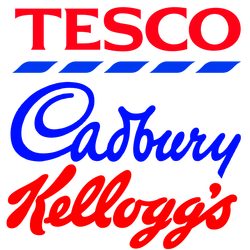
"Evidence also suggests that preschool name-writing ability is predictive of later reading
ability, providing further demonstration that name-writing skills offer an important window
into children’s emergent literacy achievements."
Cabell, S.Q., Justice, L.M., Zucker, T.A., & McGinty, A.S. (2009). Page 55
While many of the Learners with whom you are working may never be physically able to write their own name (although they might be able to do it via a computer system), they certainly should be assisted to recognise their own name. At first, this means we need to devise ways and means of enabling them to recognise their name as a logographic whole rather than by analysis and knowledge of individual letters and sounds. Once that is established, we can use their name as a means of teaching letter sound correspondence and other aspects of emergent literacy.
ability, providing further demonstration that name-writing skills offer an important window
into children’s emergent literacy achievements."
Cabell, S.Q., Justice, L.M., Zucker, T.A., & McGinty, A.S. (2009). Page 55
While many of the Learners with whom you are working may never be physically able to write their own name (although they might be able to do it via a computer system), they certainly should be assisted to recognise their own name. At first, this means we need to devise ways and means of enabling them to recognise their name as a logographic whole rather than by analysis and knowledge of individual letters and sounds. Once that is established, we can use their name as a means of teaching letter sound correspondence and other aspects of emergent literacy.
|
One idea for approaching this is to create a set of logos that involve print with which the Learner should already be familiar such as 'Tesco', 'Cadbury', 'Kellog's', etc. Ideally, These should be places or items or events with which the Learner comes into contact almost every day. Into this mix we can add another logo ... the Learner's name. If we have four or five such logos printed on card we can assist the Learner to pick out the one that 'says his/her name'. We can make this easier at first because we can print it in a different colour to the other logos and incorporate the Learner's picture as a part of his/her logo, etc. As the Learner become more successful at this task we can gradually fade the prompts and cues such that the Learner is being given slightly more demanding tasks over time but we are scaffolding the learning experience to assist. When the Learner can pick his or her own name from a set of five all in the same colour, font, and font size then we can use this ability as a platform for further learning. For example, 'with what letter does your name begin?'
Research seems to show that children experiencing a language impairment are not working at a phonological level when recognising or writing their names: |
"It appears that young children are not encoding sounds while writing their names. Rather, they view their names as logograms, unconnected to oral language. Therefore, it is not surprising that in this study, name writing representations did not seem to reflect phonological awareness, but rather children’s print-related skills. Children seem to employ a very different strategy when writing their names than when inventing spellings, which requires at least a rudimentary grasp of the alphabetic principle. The present findings stand in contrast to the assertion that name-writing ability is significantly associated with phonological awareness."
Cabell, S.Q., Justice, L.M., Zucker, T.A., & McGinty, A.S. (2009). Page 59
Cabell, S.Q., Justice, L.M., Zucker, T.A., & McGinty, A.S. (2009). Page 59
This being the case, we should not expect the development of phonological skills as a result of the above idea, rather a recognition of their own name as a logo. However, as already suggested, this skill can be used as a foundation for building other new skills brick by brick. The research did suggest however that there was some correlation between name writing and alphabet knowledge:
"we interpreted our findings to suggest a bidirectional developmental interrelationship between name-writing ability and alphabet knowledge such that children’s knowledge of letters aids in their name writing, and children’s active encoding of letters in the act of writing likely enhances their alphabet knowledge." Cabell, S.Q., Justice, L.M., Zucker, T.A., & McGinty, A.S. (2009). Page 59
However, the Talksense idea above relates only to name recognition and not to the ability to write one's own name. For some (if not many) of the Learner's with whom we work, the ability to write their name, at least by hand, may be problematic for physical if not for cognitive reasons. As such, we have to be careful in assuming alphabet knowledge at this stage. Rather, we should use the skill as a basis for further development. Even when a Learner is able to write some of his/her own name by hand or an alternative methodology such as a computer, it is likely that his/her developmental level will be behind that of a non-language impaired (Typical Language TL) peer:
"The purpose of Study 2 was to compare the name-writing representations of 4-year-old children with language impairment (LI) to those of their TL peers. Results found that the children with TL were significantly more advanced in their name-writing abilities relative to the children with LI" Cabell, S.Q., Justice, L.M., Zucker, T.A., & McGinty, A.S. (2009). Page 61
"we interpreted our findings to suggest a bidirectional developmental interrelationship between name-writing ability and alphabet knowledge such that children’s knowledge of letters aids in their name writing, and children’s active encoding of letters in the act of writing likely enhances their alphabet knowledge." Cabell, S.Q., Justice, L.M., Zucker, T.A., & McGinty, A.S. (2009). Page 59
However, the Talksense idea above relates only to name recognition and not to the ability to write one's own name. For some (if not many) of the Learner's with whom we work, the ability to write their name, at least by hand, may be problematic for physical if not for cognitive reasons. As such, we have to be careful in assuming alphabet knowledge at this stage. Rather, we should use the skill as a basis for further development. Even when a Learner is able to write some of his/her own name by hand or an alternative methodology such as a computer, it is likely that his/her developmental level will be behind that of a non-language impaired (Typical Language TL) peer:
"The purpose of Study 2 was to compare the name-writing representations of 4-year-old children with language impairment (LI) to those of their TL peers. Results found that the children with TL were significantly more advanced in their name-writing abilities relative to the children with LI" Cabell, S.Q., Justice, L.M., Zucker, T.A., & McGinty, A.S. (2009). Page 61
Idea # 22: Bring 'other' word groups to life... give them meaning
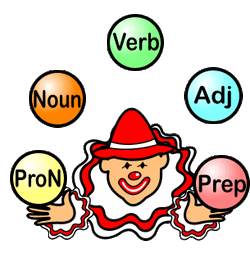
While you are reading a story, you can ask the Learner questions about the text.
For example, you might ask if they think that the character is GOOD or BAD, or whether that was a SILLY or SMART thing to do. In this way, we can introduce 'describing words'.
How would we introduce verbs?
What is he doing?
What is she going to do next?
What has it done?
What you do if you were that person?
Prepositions:
Where is it?
Now I can't remember did he put it under the table or in the drawer?
Where shall I put the book? On the shelf? great!
It is a good idea to have Core Vocabulary illustrated as a set of Colour Coded Communication Cards to assist the teaching in this area. These cards can be used time and time again. Please see ideas immeadiately following this for further information.
Idea # 23: Produce your own Colour Coded Communication Cards for Literacy Development
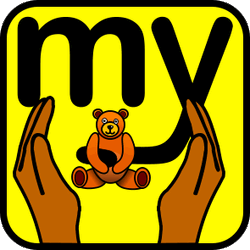
It's not diifcut to produce you own symbol cards if you have a software tool such as BoardMaker or Voice Symbol or similar.
1. Decide on the size of symbol cards required.
2. Produce a grid in the software with cells approximately the size you require
3. Fill grid with symbols
4. Save grid
5. Print grid
6. Laminate
7. Cut into individual cards.
The same thing can be done easily with a new piece of software called Voice Symbol. It's advantage is that the paper symbols, thus produced, can speak! When the symbols are touched with a tool called a Voice Pen, the pen reads the cards! It's child's play to do and child's play to use.
NOTE: Colour Coding is detailed in an idea below.
Idea # 24: Produce a second set and cut it up!

There is an additional benefit to producing such symbol cards as a resource with Voice Symbol or Voice Ink. The code (the V-Pen reads the code off the card to produce the sound) covers the entire surface of the symbol including the text. Touching anywhere causes the pen to speak - there is no need for a Learner to be accurate within the card itself. This means that you can cut the text label away from the symbol portion and create a set of resources for symbol/word matching! If the Learner is able to move the pieces so much the better but, if not, the Learner can touch a text label with the pen, listen to the sound and then touch the appropriate symbol section.
Indeed, if the text where to be cut into individual letters, each letter would say the original word when accessed ... that might have an interesting use for spelling that we can explore later! In the illustration below the parts have been mounted using velcro onto a rubber edged carpet (See Idea # 16 below) BUT the text is a little small as there is plenty of room for it to be made larger and clearer (see idea # 18)
When that process is complete, the teacher can show/present the Learner with each text label in a randomised order and ask him/her to decide to which symbol it should be matched. The Learner now has no sound cues and has to work on visual information only. The Learner has to read the word! On completion, the Learner can check his/her own work with the V-Pen to see if s/he has got all the answers correct! We cannot know, from such the small set of labels and symbols, whether the Learner is simply memorising the whole word shape or is actually attempting to figure out the initial letters of the words. However, as word shape relies on visual memory and this will likely become overloaded when more symbols and labels are added, it should be possible to find out!
Idea # 25: Colour Code your Communication Cards

Back in 1929, Edith Fitzgerald wrote a book entitled 'Straight Language For Deaf' which, as its name implies, is a manual on a method for teaching language and grammar to those people who have little or no hearing. Although Edith divides sentences up into parts of speech, and has a key system for doing this, at no point in the book does she talk about a colour encoding system (Fitzgerald's original key was based on a set of six symbols with each standing for a particular part of speech). However, such a colour encoding system has been attributed to her and it has become known as the Fitzgerald Colour (colour) coding system. It is a means to classify different parts of speech and to make them easily distinguishable from one another. Though there appears to be no one set colour standard for every part of speech in the system, some colours are consistently used:
adjectives blue
pronouns yellow
nouns orange
verbs green
beyond that there appears to be a variety of colours used in what generally is referred to as a 'modified Fitzgerald key':
adverbials brown
conjunctions white
determiners grey
expletives red
interrogatives purple
negations red
prepositions pink
It should be stressed that you will find all manner of variations on the 'Fitzgerald key' in use although I would recommend a 'standard' as detailed above.
Of course, there may be classes within classes: for example, there are modal and auxiliary verbs as well as lexical verbs. All are colour coded green but a variation in the tone of green used can be made to great effect. Also where nouns are grouped according to categories, each category could have an alternating shade of orange such that neighbouring categories are distinguishable.
Idea # 26: Symbols should have Clear Text Labels

The Learner’s AAC system should contain text. As a rule:
- The symbols should have clear text labels.
- The font, font colour and background colour should all support clarity for the Learner.
- Ideally, there should be a means of reviewing a sentence created from individual
word choices. For example, there should be window which contains the both the
symbol and text as it is built.
Generally speaking, text labels should be above symbols (not below them) as this will maintain a Learner's view of the text as s/he accesses a symbol with a pen or by pointing. The text should be visible to the Learner when the system is in use (therefore font, font size, font colour and background colour are all important as discussed in the symbol section of this website) such that there is every chance that the Learner will begin to associated the symbol with both the written word and the sound.
In the first image above, the text is almost invisible because it is so small. In the second symbol, the text is clearer but it is difficult to tell if it says 'tap' or 'top'. In the last two images, at the bottom, the word tap is more prominent. Decide for yourself which is clearest of the four. The symbol is the same size in each of the four images. The font used, in each case, is the Lexia font which is a free download from the internet. It has been specifically designed to assist disrimination between letters so that it is harder to confuse a 'b' with a 'd', for example.
Idea # 27: Create Communication Carpets as a tool for class use

Such question cards could be individually made, laminated a stored. Each would have a sticky Velcro tab on the rear such that they could be quickly mounted on a Velcro friendly board. Small, rectangular floor mats are ideal for the job because they:
- are Velcro friendly;
- can be purchased locally (bigger supermarkets generally stock them);
- are not expensive;
- usually come with some form of rubber edging that can be punched with a
hole punch to allow mounting to a wall or door if needed;
- can be rolled up and put away when not needed;
- can easily display four quite large symbols and many smaller symbols;
- come in a variety of sizes to suit all symbol purposes;
- are fairly easy to keep clean and maintain;
- non-toxic and safe;
- will work just as well on the floor, on a table top, or wall-mounted;
- are just brilliant for wall displays around the school because the display can be prepared elsewhere, rolled up and then taken to
the site and hung!
|
I recently saw a mat in a store that was divided into four sections with each section being a different colour as a sort of pattern. I didn’t like it at all as a floor mat but I thought that it would make an ideal colour coding carpet for those that need such a thing! It pays to keep your eyes open!
If a sufficiently large carpet/rug was obtained and hung on a wall a whole communication system could be displayed as individual (laminated) symbols which could be readily removed to use as support materials for AAC and Literacy Learning (see illustration below) |
Idea # 28: Create a Word Wall
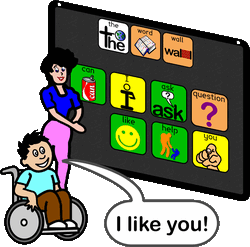
A Word Wall is a place to display new words to be learnt. The words chosen for the wall are the important core words that the Learner needs to know but are difficult to sound out or difficult for the pupils to learn. New words can be added to the wall each day or each week (depending on the cognitive capacity of the Learner). How many words? Again. it will depend on the cognitive capacity of the Learner: there is no one set 'right' number.
A word wall would therefore not display such vocabulary as bat, cat, and mat but may contain such items as 'every', 'the', 'question', 'would', or 'another'.
A word wall might also be used to teach a particular phoneme blend or other phoneme/letter pattern which a Learner needs to recognise to become fully literate: for example, the use of 'ed', 'ing', etc at the end of certain words as a marker of tense or aspect.
Literacy Symbols together with Communication Carpets (see above and below) make an ideal word wall.
A Word Wall should be USEFUL:
Used... It's not simply a pretty display ... it's a tool for use containing a set of (easy to remove) resources.
Stimulating ... Interesting and motivating for the Learner;
Everyday vocabulary ... Not full of extreme fringe words unlikely to be often encountered. 'Monster' and dinosaur are fringe words!
Friendly ... The Learner should not associate it with Fear or Failure;
Unclear... Unclear in this sense refers to more 'difficult' words for the Learner but, nevertheless, are going to be used;
Large... Easy for the Learner to see: Learners Look at Large Letters! (Therefore not unclear!)
Idea # 29: Literacy Symbols
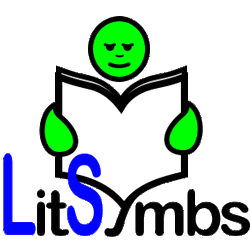
I have been toying with the idea of a set of symbols for literacy development for some time and have gone as far as designing quite a few: I call them Lit-Syms. A few have already featured on this page.
Lit-Syms differ to standard symbols in that the symbol is the word and the word is the symbol! As the Learner looks at the symbol, s/he looks at the word ... it cannot be ignored by the Learner. The idea is that the word itself illustrates its meaning in some way. After a while of using such symbols, the 'symbolic' aspect (as opposed to the text aspect) can be faded, leaving just the word. Lit-Syms would typically be used with Users of AAC to introduce them to literacy by teaching the word with the symbol. Not all words would be illustrated in this way, just Core Vocabulary in the main and any others that were necessary. can all words be illustrated in this way? I believe that they can although some words, that are not 'picture producers' (try illustrating 'could' for example), will take a lot of creativity.
I am not sure if this is a good idea or just another of my crazy schemes! I'd be interested in feedback. Use the form at the bottom of this page for such comments and feedback on the idea. Actually, after a little research on my part, what I thought was original, turned out just to be a reworking of an old technique devised in the late 1960s (by Arnold Miller and his wife: see below) called 'symbol accentuation'. It goes to show, there is probably nothing new under the sun!!
Lots of companies make claims that they have symbols that support literacy. That could be said of any comprehensive symbol set, if what the symbols are doing is simply accompanying text which, in the vast majority of cases, is exactly what 'literacy support' appears to mean. However, acquiring Literacy skills requires much more than providing a set of symbols... it is akin the claims made for weight loss devices which alway say something like 'maximum weight loss is achieved when use as a part of a calorie controlled diet'! Sure, symbols can help in the process of acquiring literacy but you cannot expect to throw a whole bunch of symbols at the issue and job done! For best results ... 'use as a part of a structured teaching approach'!! Almost any symbol set will suffice for use with the ideas providing it has symbols for the words that you want to teach (not all symbol sets are that comprehensive). Ensure that the set has symbols for Core Vocabulary (the top 400 or so spoken words in any language). How does it illustrate 'is' as opposed to 'was'? Does it illustrate 'have', 'the', 'a', etc. and the basic concepts as listed in such works as the Boehm Test Of Basic Concepts (Boehm A.E., 1971) or the Bracken Basic Concept Scale (Bracken, B. 2006) or equivalent? How are the differences between I, me, my, and mine depicted? I would expect these and other questions to be answered by any symbol set claiming to support literacy.
There are some approaches which can truly claim to be literacy support symbols. The first of these was called 'symbol accentuation' and was developed by Professor Arnold Miller (Miller A. 1968, Symbol Accentuation - A new approach to reading, Doubleday Multimedia, Santa Ana, California)(Miller, A. & Miller, E.E. (1968) Symbol Accentuation: The perceptual transfer of meaning from spoken to written words. American Journal of Mental Deficiency, 73, 1, 200-208). This approach changes the nature of the printed word in some way so that it possessed some pictorial quality and, thus, made the printed word more 'iconic' and more 'readable'.. In the UK, this approach was promoted by Margaret Skeffington and Dorothy Jeffree (Jefree D., & Skeffington M. 1980, Let me read, Souvenir Press, London). Jones (Jones P.R. 1983. Symbol Accentuation: A controlled comparison of its effectiveness for teaching. initial word recognition to mentally handicapped pupils. BPS Division of Educational and Child Psychology Occasional Papers, &(1), 24-30) has shown that such an approach allows words to be more easily taught than by simply placing them below key pictures as seems to be the modern approach.
See also:
Beers, K. (2003). When Kids Can't Read What Teachers Can Do. Portsmouth, NH: Heinemann
Danner, F. W., & Taylor, A.M. (1973). Integrated pictures and relational imagery training in children's learning, Journal of Experimental Child Psychology, Volume 16, Issue 1, August 1973, Pages 47-54
Devereux, K., & Van Oosterom, J. (1984), Learning With Rebuses, National Council for Special Education, pages 34 and 35
Kajder, S. (2006). Bringing the Outside In: Visual Ways to Engage Reluctant Readers. Stenhouse Publishers.
Sheehy, K. (2002). "The Effective Use of Symbols in Teaching Word Recognition to Children with Severe Learning Difficulties". International Journal of Disability, Development and Education 49: 47-59
Sheehy, K. (2002). Overcoming failure to begin word recognition using a local feature strategy: The handle technique and children with severe learning difficulties. Learn: The Journal of the Irish Learning Support Association, 24 pp. 78–87.
Worral, N. & Singh, Y. (1983) Teaching TMR children to read using integrated picture cueing, American Journal of Mental Deficiency, Volume 87, No. 4.
As a picture paints a thousand words, below are some examples of the Lit-Syms I have already designed.
Idea # 30: Draw the Learner's attention to text in the environment
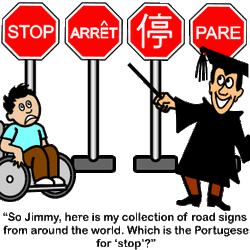
We are surrounded by print. At midnight, even as I sit in an apartment in Taiwan and type, I can see
(a mixture of Chinese and English) print around me. I can see the words: 'Dell' on my laptop, 'hot' and 'water' in Chinese on the Japanese equivalent of a kettle, 'Kleenex' on a box of tissues. If I was to venture out into the street, there would be even more print and, should I go into an all night shop ...
The world is full of road signs, street names, advertisements, container labels, ... all of which contain the printed word. Learners are immersed in this every day. So why do they not learn to read?
I am immersed in Chinese characters every day as I walk to the office from the aprtment, when I enter a shop, when I sit in a taxi ... but I couldn't hope to read the characters without some help. I guess the stop sign meant stop but it was a guess, nothing more; I did not really know. I started to ask about spefic signs and about components of words (radicals) and, with the help of my Taiwanese colleagues began to learn more and more of them. On day I was walking to the office and I saw a sign on the wall: it read, "Please do not park your car here". It was completely in Chinese and I read it and understood what it meant instantly. I thought 'wow'! However, I couldn't read the next sign that I saw so my excitement was short lived! Learners need help to Learn from their environment; they need structure and they need patience. Make positive use of SOME of the text in the environment.
water hot
So it's a great idea to point out / draw the Learner's attention to and play 'games' with text in the environment. That is not text that the Learner will see rarely (like on a trip to the zoo) but text that s/he is likely to encounter at least weekly, if not daily or even more frequently. Here are just a few ideas for working with different types of such text just for starters:
- select only the environmental text/print with which the Learner comes into contact on a regular basis;
- make a point of drawing the Learner's attention to it and tell him/her what it says;
- eventually ask the Learner to tell you what it says;
- make a copy of the sign's (print in the environment)text on a 'flash card';
- present the card at the point where the Learner sees the print in the environment: show how it is the same;
- get the Learner to 'read' the card in context;
- gradually introduce the card earlier and earlier until the Learner is reading the card completely out of context.
- with the Learner create a map of a commonly travelled route;
- put into the correct position all the print encountered on the route with which the learner interacts;
- make flash card copies of the print in the environment;
- get the Learner to identify where the text is encountered;
- when you next go to the supermarket give the Learner a label off a container (packet, can);
- ask the Learner to tell you when s/he can see the same thing on the supermarket shelves;
- start simply in just one row of the supermarket;
- build to the whole store;
- lots of praise for success!
- as above and following on from above
- change the label to a symbol with text
- pair the label with the symbol
- as above, get the Learner to locate the item
- reduce the symbol, increase the text size;
- remove the symbol;
- select only the environmental text/print with which the Learner comes into contact on a regular basis;
- make a point of drawing the Learner's attention to it and tell him/her what it says;
- eventually ask the Learner to tell you what it says;
- make a copy of the sign's (print in the environment)text on a 'flash card';
- present the card at the point where the Learner sees the print in the environment: show how it is the same;
- get the Learner to 'read' the card in context;
- gradually introduce the card earlier and earlier until the Learner is reading the card completely out of context.
- with the Learner create a map of a commonly travelled route;
- put into the correct position all the print encountered on the route with which the learner interacts;
- make flash card copies of the print in the environment;
- get the Learner to identify where the text is encountered;
- when you next go to the supermarket give the Learner a label off a container (packet, can);
- ask the Learner to tell you when s/he can see the same thing on the supermarket shelves;
- start simply in just one row of the supermarket;
- build to the whole store;
- lots of praise for success!
- as above and following on from above
- change the label to a symbol with text
- pair the label with the symbol
- as above, get the Learner to locate the item
- reduce the symbol, increase the text size;
- remove the symbol;
Idea # 31: Send the Learner on a Text Trail

Supermarkets are great places to send a Learner looking for a particular piece of text. The text can be attached to the top of a BIGmack, or simllar, for example, which, when accessed, speaks to remind the Learner of the word/item for which they are looking.
It doesn't have to be a supermarket of course, it can be any environment that contains text labels although a library may be a little over the top a place to begin!
To begin with, the Learner can have cues. the cues can get progressively more difficult as the success builds. For example, the Learner might start with:
- a label from a packet as a cue, and then
- move on to just the text title from the label, and then
- move to a symbol card with product name, followed by
- changing to a cue card with a print of the product name, and finally
- moving to no spoken (BIGmack/other) prompt. having to locate the product just by text alone.
Idea # 32: Text Treasue Trails

I think everyone enjoys a good treasure trail. The reward at the end does not have to be much at all as long as the 'journey' is enjoyable. Clues can be a series of text and symbol cards perhaps indicating:
- location (room)
- item (furniture)
- adjective (colour, size, shape, ...)
- preposition (position)
for example: you might lay out symbols in a strip informing the Learner to 'Go artroom and look in the cupboard' as below.
Idea # 33: Label the environment with text and symbols

If the environments that the Learner normally inhabits (home and school) and labelled (in a similar, if not the same, manner) then this will assist the Learner in associating items (in their environment) with the symbol and the text. Labels should be :
- consistent;
- clear;
- conspicuous;
- comprehensive;
- compatible (with the Learner).
We 'experience' the world as we move through it. Our brains try to make sense of all the sensory data coming from our eyes, ears, hands, etc. We begin to make associations between one peice of sensory data and another; we may learn, for example, when we see the post box furhter up the road, that it is immediately outside of the Post Office even though, at that point, we cannot actually see the post office. The Post Box comes to represent the Post Office and we would be completley surprised if, on reaching the post box, the Post Office had disappeared and been replaced by a supermarket overnight. All children 'learn' such things. A child (who is experiencing a profound intellectual impairment) is able to move around the room and does not walk into the walls. Why not? The child must have learned at some point that walls are hard and it is not possible to pass through them. The same child when given a cup raises it to his lips and manipulates it so as to drink; sometimes, even if it is empty. How does the child 'know' to do this? We might argue that this skill is innate, that our brains are hard-wired with a Chomskyesque C-A-D (Cup Acquisition Device)! However, the vast majority of us (if not all of us) would recognise that this is a skill that had been learned by the individual through countless experiences of cups and thousands of repetitions of the drinking behaviour. The child has learned that the sight of the cup is representative of the concept of drinking and may even go through the process if there is no drink in the cup.
If the environment is engineered so as to make use of this experiential learning, even the child experiencing a profound intellectual impairment may benefit. Labelling the environment is one form of environmental engineering that can assist a Learner to understand that text and symbols relate to particular concepts. Many parents label the environment to help there children to learn to read. Words are printed out and attached to objects around the house so a child can come to undertand that the word stands for the thing, as well as, how the word is spelt. Similary, symbols used consistently across the environment can perform the same function. However, if multiple symbols sets are being used (in a school for example), this is more difficult to achieve, as having twenty symbols on a door is not quite as clear as having one! This is an argument supporting the use of a single symbol set in an establishment where there are likely to be many Learners requiring symbol use. Labelling the environment not only helps the Learners but also assists the staff who also have to learn the meaning of the symbols in use.
These individuals, in contrast, must begin the AAC acquisition process by establishing the relationship between AAC symbols
and their real-world referents, relying, perhaps almost exclusively, on contextual clues in the communicative environment to
extract meaning through the visual modality (ROMSKI M. & SEVCIK R. 1993)
When labelling the environment specific conventions must be followed to provide consistency for the Learners. For example, doors should be labelled on the exterior with the room or cupboard contents and, on the interior, with the symbol for 'door'. I have witnessed a set of toilet doors, which were all identical, with some showing the symbol for 'toilet' and others showing the symbol for 'door' all on the exterior: this is not good practice. If a room is used for a variety of subjects, then it would be very confusing to have the symbols for every activity displayed; rather, it would be better to have a system where staff could easily and quickly add a symbol to a door and then remove it when the session has finished.
While labelling the environment with text and symbols is a good strategy, it is only a small beginning. Labelling in such a way only teaches nouns and, as we have seen in other sections of this website, 'core vocabulary' is notable by its sparse popoulation of noun forms. It is difficult to see how the labelling of the environment going to assist the teaching of the text and or symbols for adjectives, adverbs, prepositions, pronouns, and verbs? Thus, we need to ensure that other strategies are also in place to teach a wider range of vocabulary.
Idea # 34: Package it ... bottle it

A nice idea for the home and for school is to put items into packages and bottles which themselves have very clear labels. The Learner can then be tasked to 'go and get the XXX' where XXX is a particular item in a particular package or bottle that you keep in a specific place in the environment that easy for the Learner to access. You may ask, why you would want to go to the trouble of doing that when may items come ready packaged with nice clear labels anyway (Cornflakes, for example). The reason is the existing commercial packing and labelling is out of your control: you cannot adjust it for learning, you cannot remove the colour scheme that the Learner may be using to cue him/her instead of reading the text. You cannot control whether there is a picture on the package or not and you cannot make the task progressively more demanding over time if you simply rely on existing commercail packaging. Also, using this method, you can put things into packages that normally don't come (or not not typically kept) in such things and thus extend the range of choice for task for the Learner.
The packages can start life with lots of recognition support which, over time, should be faded to leave only the text cue. For example, eventually, cans of soup can have their labels removed and replaced with ones that fade the cues leading to a label that just says the make of soup. Indeed, some soup tins, notably the very cheap supermarket own low cost brands, have just simple text labels without any picture cues.
Idea # 35: Create displays supporting both Communication & Literacy!

I am often amazed and saddened as I visit schools around the world to see display after display that contains no text labels and/or no symbol labels. It would appear that many hours, days, and weeks have gone into the works of art that are some displays and yet, not one part of it is labelled with a symbol or a piece of text. The rule should be that all displays are labelled with both text and symbols and since the introduction of the V-Pen system each of the symbols could be made to speak!
In special cases, the display itself can speak! If the images are created with Voice Symbol or Voice Ink then they will appaer as normal pieces of printed material that can be cut out and pasted to a display board. However, when the display is accessed with the V-Pen (which could be on a chain by the display, it will come alive: symbols can speak and text can be read word by word or sentence by sentence!
Idea # 36: Canteen Communication
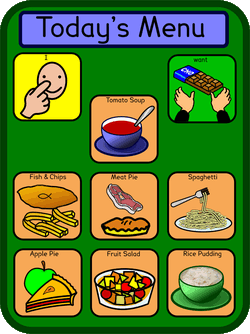
As a part of labelling the environment and to provide choice and control, a fully accessible menu should be available in every educational establishment. As menu's tend to repeat themselves, any symbol or photographic cards produced for such a display can be used over and over.
Menus obviously come in, at least, two forms: wall menus and table menus. Both can be produced with text and symbols for use in an educational establishment. Wall menus can be produced with interchangeable symbols whereas table menus may have to hold the complete menu and be reused when that same menu comes round again.
The Learner can be encouraged to select his/her meal from the displayed menu. To make it simpler, items from different courses of the meal can be removed and shown to the Learner so that a choice can be made.
Each time the menu option are used, the Learner's attention should be drawn to the text as well as the symbol. Staff should explore the letter sound correspondence with the Learner: F for fish, ch for chips etc.
Talking menus can be produced with the use of symbols on BIGmacks or via Voice Symbol.
Idea # 37: Find the Best Ever Stimulating Thing (B.E.S.T.)

What's a BEST? It's a Best Ever Stimulating Thing. Everybody has one: it's just sometimes and for some people it's really hard to discover. A BEST is not the same for everyone; it's personal. For some, it can be a type of food (chocolate is popular!) and for others it is some form of music. For a special few, it is something that, on the face of it, seems valueless; a piece of rag (comfort cloth) that they hold or wave, a chain that they twirl, a piece of card that they flick. A BEST can be any P.O.L.E. (Person, Object, Location, Event) and so we are searching for the BEST POLE!
Person - A loved one. Most likely a family member
Object - A cherished thing. A desirable thing.
Location - A special place. A place where a person feels at ease.
Event - A special happening: for example, a walk in the garden or
interacting with a favourite person
How do you discover a BEST POLE? Take NOTEs!
- Nothing should be overlooked. Nothing is insignificant. What may appear of little value to you ...
- Observe the Learner;
- Talk to Significant Others;
- Experiment and see what works.
Their might be several BEST POLEs and, then again, there may be only one (that you can find). Good hunting!
Idea # 38: Teach Language not just Nouns
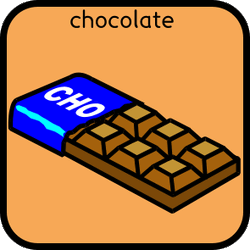
Reading is not just about semantics but also about syntax therefore the Learner’s AAC system should contain a range of words (not just nouns) such that there is the opportunity to build simple sentences from separate parts of speech.
This can be as simple as introducing a symbols for a Learner’s B.E.S.T. (we will assume ‘chocolate’) such that the Learner can be shown how to ask for ‘chocolate’ using his/her system. This process might be ‘modelled’ by another member of staff in plain view of the Learner: staff member walks up, takes the V-Pen, and points it at the (single) symbol of chocolate causing the Pen to say the word ‘chocolate’. The teacher then ‘rewards’ the member of staff by presenting him or her with a small piece of chocolate. It is hoped that the Learner will be motivated to copy the modelled behaviour and ‘request’ a piece of chocolate him/herself. Of course, when the Learner request chocolate, it is important that he be given chocolate.
However, we are not a chocolate factory! Thus, limits have to be set.
1. Ascertain the smallest size of chocolate that is still motivational to Learner. It may be as small as a quarter of a chocolate button.
Such sizes will not interfere with a Learner’s appetite at meal times and will not break the bank! It may be that such a small quantity
is not motivational and therefore a whole chocolate button may need to be provided on each request!
2. Second, there has to be a limit on how many pieces of ‘chocolate’ are available. Let’s assume a decision has been made to allow
only five pieces of chocolate during any one session/period. The facilitator should make a point of performing most of the following
actions in plain view of the Learner:
- Prepare (in advance) a chocolate button bag with only five pieces of chocolate reward inside.
The Learner should not see this part!
- Tip the prepared bag of chocolate rewards onto a plate. Make a point of counting them aloud:
one, two, three, four, five... only five pieces left!
- Each time the Learner requests some chocolate offer a piece from the plate.
The Learner can see the number going down.
- The Learner can make five requests after which, all the chocolate is gone.
The facilitator should make a point of saying, “All gone!”
- If the Learner requests another piece of chocolate, present the empty plate and the empty bag.
Say “Sorry, the chocolate is all gone. I will go to the shop and get some more for ... (the next session interval)”.
- Of course, during the next session, the bag of buttons still only has five pieces!
In this way, the Learner learns there are limits to a particular requesting behaviour and that limit is NOT the facilitator’s fault but, simply, that there were only five pieces of chocolate to begin with! This should help curb any tantrum that may be caused by knowing that there is more chocolate at the facilitator’s disposal but which is simply being refused, on request.
1. Ascertain the smallest size of chocolate that is still motivational to Learner. It may be as small as a quarter of a chocolate button.
Such sizes will not interfere with a Learner’s appetite at meal times and will not break the bank! It may be that such a small quantity
is not motivational and therefore a whole chocolate button may need to be provided on each request!
2. Second, there has to be a limit on how many pieces of ‘chocolate’ are available. Let’s assume a decision has been made to allow
only five pieces of chocolate during any one session/period. The facilitator should make a point of performing most of the following
actions in plain view of the Learner:
- Prepare (in advance) a chocolate button bag with only five pieces of chocolate reward inside.
The Learner should not see this part!
- Tip the prepared bag of chocolate rewards onto a plate. Make a point of counting them aloud:
one, two, three, four, five... only five pieces left!
- Each time the Learner requests some chocolate offer a piece from the plate.
The Learner can see the number going down.
- The Learner can make five requests after which, all the chocolate is gone.
The facilitator should make a point of saying, “All gone!”
- If the Learner requests another piece of chocolate, present the empty plate and the empty bag.
Say “Sorry, the chocolate is all gone. I will go to the shop and get some more for ... (the next session interval)”.
- Of course, during the next session, the bag of buttons still only has five pieces!
In this way, the Learner learns there are limits to a particular requesting behaviour and that limit is NOT the facilitator’s fault but, simply, that there were only five pieces of chocolate to begin with! This should help curb any tantrum that may be caused by knowing that there is more chocolate at the facilitator’s disposal but which is simply being refused, on request.
Going Going All Gone!
Once this strategy is established and is working, a new symbol can be introduced:
Again, the same process is adopted: another member of staff can ‘model’ the required behaviour of accessing the TWO symbols in turn and, hopefully, the Learner will follow suit. The staff member can really ham it up on the notion of 'wanting'; holding out his/her arms in a display of need before accessing the symbols to make the request.
What if the Learner just says ‘chocolate’ and ignores the ‘want’ symbol? We can ‘pretend’ that we think the Learner is simply pointing out the fact that there is chocolate available,
“Yes, it is chocolate. Do you WANT (point to ‘want’) some CHOCOLATE (point to ‘chocolate’).
It may require that the assistant member of staff models the correct procedure several times! I am sure s/he will not complain!
What if the Learner gets the items in the wrong order? It’s not the end of the world! Initially, we have succeeded in our attempt to get the Learner to make two selections, so we should be pleased and not negate the Learner's effort by refusing the chocolate. I once had an experience of a young boy using his AAC device to say to a member of staff, “Greenhouse go now” to which the staff member promptly replied: “When you say it properly you can go and not before. It’s ‘I want to go to the greenhouse now please’”! He then proceeded to make the boy say each word item by item, in the correct order, before allowing him his request! It was no wonder that the boy was said to be unmotivated to use his system! In our example, we can ensure that the ’want’ symbol is placed in such a position on the table top that it comes spatially before the ‘chocolate’ symbol physically, in accordance with the Learner’s preferred movement pattern, such that, it will be likely, the words are accessed in the right order. We should also make a mental note that the Learner is perhaps not cognisant of the syntax involved and make an intervention plan to address this issue (The SLT will advise here).
The colour coding used is the Fitzgerald Key (green for verbs and orange for nouns).
The next stage is to introduce a third symbol!
What if the Learner just says ‘chocolate’ and ignores the ‘want’ symbol? We can ‘pretend’ that we think the Learner is simply pointing out the fact that there is chocolate available,
“Yes, it is chocolate. Do you WANT (point to ‘want’) some CHOCOLATE (point to ‘chocolate’).
It may require that the assistant member of staff models the correct procedure several times! I am sure s/he will not complain!
What if the Learner gets the items in the wrong order? It’s not the end of the world! Initially, we have succeeded in our attempt to get the Learner to make two selections, so we should be pleased and not negate the Learner's effort by refusing the chocolate. I once had an experience of a young boy using his AAC device to say to a member of staff, “Greenhouse go now” to which the staff member promptly replied: “When you say it properly you can go and not before. It’s ‘I want to go to the greenhouse now please’”! He then proceeded to make the boy say each word item by item, in the correct order, before allowing him his request! It was no wonder that the boy was said to be unmotivated to use his system! In our example, we can ensure that the ’want’ symbol is placed in such a position on the table top that it comes spatially before the ‘chocolate’ symbol physically, in accordance with the Learner’s preferred movement pattern, such that, it will be likely, the words are accessed in the right order. We should also make a mental note that the Learner is perhaps not cognisant of the syntax involved and make an intervention plan to address this issue (The SLT will advise here).
The colour coding used is the Fitzgerald Key (green for verbs and orange for nouns).
The next stage is to introduce a third symbol!
And a similar process followed. In this manner, we can begin to teach the use of parts of speech to form simple sentences. When succesful, we can introduce other choices. Remember, we should not simply be working with nouns alone (so do not simply keep adding lots more 'noun choices') but we can work towards some form of simple communication board using the taught and learnt symbols. As we introduce more symbols we can display them on the table top in the form of a grid. This gris patern will then be replicated in out eventual design of communication board. The Learner thus progresses in very small steps from a single symbol to a simple communication board.
|
You will note that the symbols on the boards (above and left) are not quite the same as the symbols I have used above! It is not meant to suggest that you work with different sets of symbols when you introduce a board; you most certainly would NOT! I used the Voice Symbol software to create the board left. Voice Symbol creates paper communication boards that can speak when accessed with the V-Pen system. The board will therefore function both a s ano-tech system and a high-tech system! The communication board that is introduced could be even simpler with perhaps just four options: I / want / ball / it. It will depend on the ability level of the Learner and the amount of work that has been covered. When the board is introduced, we would test the Learner's ability to use it to request 'chocolate' as we had done before. It is the same process for the Learner although now s/he has to cope with other 'distarcting' symbols. Again, another member of staff could model the behaviour, if necessary. Simple beginnings but building towards language not just nouns! |
Idea # 39: Create tokens for activities
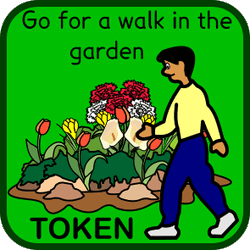
While it is easy to demonstrate how to set limitations on tangible items like pieces of chocolate, it is much more difficult to do the same with 'not-so-tangible' things such as a walk around the school garden. I used to work with a young man whose favourite thing in the world (apart from watching 'Police, camera, Action'!) was to taken for a walk around the school garden. A staff member would push him once around the garden in his chair and then bring him back to class. However, we could not display 5 'walks around the garden' (WATG) on a plate in the classroom! In fact, the young man had to earn the WATG by working well in class. For each period of 'good work' he was awarded one 'Go for a walk in the garden' token. He could save his tokens for use whenever he wanted during school time but he tended, like most young men of his age, to want to use it immediately. Sometimes, thee was not a staff member available to take him for his walk and he had to learn to wait until a staff member became available which was not easy for him. Eventually, he began to understand that the tokens were like money, he could use them whenever he wanted but he typically wanted it as soon as he had earned it!
It may be that such a token system could initially be given freeely to a Learner. There might be 3 such tokens displayed on velcro friendly fabric by the door for example. As each one is used, it has to be posted into a locked box by the exit door from the school into the garden. You must ensure that the Learner understands that you do not have a key to the box and, so, once the three tokens are used, there can be no more 'rewards'. After a period, the number of tokens on display could be reduced until there is only one there in any session. However, the Learner has the chance to earn tokens for periods of good work and behaviour.
Of course, the above will only work if the Learner is capable of understanding that good work will earn him/her a token. If s/he is not really capable of that level of understanding (or you are unsure) then you can try to teach the concept by simply rewarding the Learner for a period of good behaviour or good work with the tokens without any 'contract'. It is then hoped that 'cause and effect' will lead the Learner to understand that s/he gets a token when s/he does this or that. In order for this to work, ALL staff must apply the same approach, consistently, otherwise it is simply confusing for the Learner and can lead to more behaviours that staff find difficult to handle and not fewer.
It should be noted that the period of good work or good behaviour should start small so that the Learner is rewarded for only a little effort. After initial success, this period can be increased slightly (each day/week/month) ... such that behaviours that staff find challenging begin to decrease over time. If you set the standards too high to begin, then the Learner will fail and one, likely outcome might be more of the undesirable behaviour.
It should also be noted that tokens may be presented for use in a session, a half day, a day, or longer. However, many Learners wil not be able to manage longer periods of time and, therefore, initially (at least), token periods should be confined to sessions (or shorter). However, any 'left over' tokens should not be removed from the Learner: the Learner should be able to carry forward such items for future use.
So how does this apply to the development of AAC and language skills? Eventually, the Learner can be encourage to ask for the 'reward' using his AAC system or through the use of increasing syntax cards. Staff can then ask the Learner for 'payment' for the reward.
It may be that such a token system could initially be given freeely to a Learner. There might be 3 such tokens displayed on velcro friendly fabric by the door for example. As each one is used, it has to be posted into a locked box by the exit door from the school into the garden. You must ensure that the Learner understands that you do not have a key to the box and, so, once the three tokens are used, there can be no more 'rewards'. After a period, the number of tokens on display could be reduced until there is only one there in any session. However, the Learner has the chance to earn tokens for periods of good work and behaviour.
Of course, the above will only work if the Learner is capable of understanding that good work will earn him/her a token. If s/he is not really capable of that level of understanding (or you are unsure) then you can try to teach the concept by simply rewarding the Learner for a period of good behaviour or good work with the tokens without any 'contract'. It is then hoped that 'cause and effect' will lead the Learner to understand that s/he gets a token when s/he does this or that. In order for this to work, ALL staff must apply the same approach, consistently, otherwise it is simply confusing for the Learner and can lead to more behaviours that staff find difficult to handle and not fewer.
It should be noted that the period of good work or good behaviour should start small so that the Learner is rewarded for only a little effort. After initial success, this period can be increased slightly (each day/week/month) ... such that behaviours that staff find challenging begin to decrease over time. If you set the standards too high to begin, then the Learner will fail and one, likely outcome might be more of the undesirable behaviour.
It should also be noted that tokens may be presented for use in a session, a half day, a day, or longer. However, many Learners wil not be able to manage longer periods of time and, therefore, initially (at least), token periods should be confined to sessions (or shorter). However, any 'left over' tokens should not be removed from the Learner: the Learner should be able to carry forward such items for future use.
So how does this apply to the development of AAC and language skills? Eventually, the Learner can be encourage to ask for the 'reward' using his AAC system or through the use of increasing syntax cards. Staff can then ask the Learner for 'payment' for the reward.
Idea # 40: Tickets Please!

Textual ticketing should be put to good use in schools and colleges where there are people with emergent literacy requirements. Learners can be given tickets for such things as clubs or after school activities. Also, if a Learner makes a choice of activity in a session, a ticket might be given.
Such tickets will neccessarily be simple containing a symbol for the activity or club and large easy-to read text accompaniment.
Going bowling? Hand out tickets! Going swimming? Hand out tickets! Going horse riding? hand out tickets! Going to the supermarket? Hand out tickets to the bus trip! Have someone collect the tickets on the school minibus.
If you would like the ticket symbols (see below) please use the from below to request them. Theya re free for non-commercial use. If there are other ticket symbols that you require not shown below please say and I will attempt to create them and add them to the set.
Idea # 41: Exit the Room Requests

Some Learners need to leave a room when they become distressed or need the toilet. If a set of symbols is displayed (with a pen) by the door, individuals can be taught to use the system to indicate a particular state to staff: 'I need the toilet', 'I need time out', 'I have to go for physiotherapy now' etc.
In special education people can be coming and going into and from rooms all the time during a session. There are a number of reasons a Learner may need to leave a session before its official end:
- to go for personal care (to the toilet);
- to attend a particular therapy session (PT, OT, or SLT);
- to have a period of time out;
- to run an errand for a staff member (fetch the register for example);
- official rewards for good behaviour or work ( atrip around the garden for example);
- to attend a review;
- to go and see the nurse;
- to spend a period of time in the sensory room;
- other.
In most cases, we can use 'exit the room requests' to provide a means for any Learner to request an egress from the teaching environment. If the symbols are accompanied by clear text labels, then every time a Learner leaves the room s/he will see the text with its accompanying symbol. Using the V-Pen system, the symbols can also be made to talk. Alternatively the symbols can be attached to the tops of BIGmacks which will speak the message when accessed.
It is obviously not wise to allow any particular Learner to leave the session whenever they want with no restrictions. A Learner may just keep asking for time out for example over and over. However, the 'asking' itself may be a big step forward! In order to place a limit on the number of times a particular request can be allowed a token/ticket system can be employed (see above). Each time a Learner asks for time out (for example) s/he has to 'pay' for the time with a token. As the Learner is in charge of the number of tokens they have been allocated for a particular session, they are able to see the token gradually being reduced and will come to understand that periods of absence from class is finite.
Idea # 42: It's a M.A.D. Approach!

In working with Learner’s of AAC, we should adopt a MAD (Model-Assist-Determine) approach:
- Model the required behaviour;
- Assist the Learner if s/he has difficulties in performing the behaviour;
- Determine if the Learner can carry out the behaviour before moving on.
In the examples in idea # 8 above, the assistant modelled the ‘correct’ behaviour for the Learner to see. It was hoped that the Learner would follow the pattern set by the assistant but assistance was provided in the form of (least intrusive) prompting to help the Learner to achieve desired behaviour, if necessary. One method of prompting is to use a laser pen to illuminate the desired symbol. Such laser pens are available from the internet at very reasonable prices.
|
What was not covered earlier, in any depth, was determining if the Learner had grasped the concept. This will be apparent if the Learner ‘performs’ as expected in subsequent sessions (opportunities to ‘practice’ a new skill) such that the behaviour can be assumed to be established. If the Learner’s performance regresses to an earlier stage, then it will be necessary to return to the prior process and model the required behaviour once again. It is important that the Learner be rewarded for ‘correct’ behaviour when appropriate. In our examples, the reward was an integral part of the process but, it was noted that, there came a time when a reward was not provided (no chocolate buttons were left) but the response provided was sufficient (adequate feedback) to replace the reward. |
It is important that staff provide ‘assistance’ for the Learner during the learning process and that, gradually that support is faded until the Learner can do it for him/herself. Opportunities for practice of learned skills (outside of the learning area) are vital. It may be necessary to ‘engineer the environment’ to provide such opportunities. Such ‘engineering’ may involve:
- Suggestions to other staff for practices they can adopt;
- Setting up situations in which the Learner has to use the newly learnt skills;
- Supporting the new skills in other parts of the Learner’s environment.
- Structuring materials so that it provides information to staff not directly involved;.
Idea # 43: Create your own structured reading materials
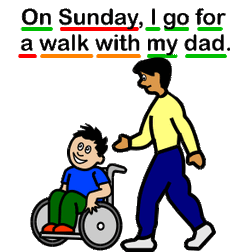
An example of structuring materials may be to create a set of reading/language materials that is personal to the Learner and, as such, is highly motivating. Using a digital camera it is a relatively easy task to create a story book around something that a Learner has done. For example, if the Learner likes to go horse riding or swimming, a number of pictures can be taken leading up to the activity, during the activity and, following the activity, that can be assembled into some form of simple story book which features the Learner. The words accompanying the pictures have to be chosen very carefully. There will be some that the Learner already knows, there will be some on which the Learner is currently working and there will be some that are new to Learner. The words could be colour coded to provide a cue to staff of which words are:
- known;
- working on;
- future learning.
The words might be underlined in the appropriate colour for example using a traffic light system: green for known, orange for working on, and red for future. Such a simple system is easy for other staff to adopt and understand and, they can see instantly the vocabulary the Learner has already mastered and what is currently being undertaken.
Alternatively, the words themselves can be written in the colour but (WARNING) this may make them harder for the Learner to see clearly and, so, this needs to checked carefully before adopting such a strategy.
By using the V-Pen system, the Learner can speak each of the words, the whole sentence, and even have the picture speak or pay an appropriate sound effect or piece of music. Even individual sections of the picture can produce their own sounds!
Idea # 44: Create your own Sensory Stories.
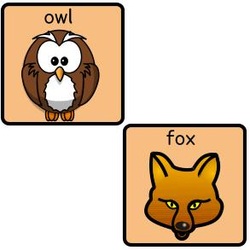
Creating 'Sensory Stories' is a means of making literature more accessible for children with a Severe or a Profound Intellectual Impairment (SPII). For example, see the Bag Books website: http://www.bagbooks.org. In creating such stories lines, staff can offer the 'listerners' choices of events that could happen. For example:
John went walking through the woods alone at night, suddenly there was a noise. What was it? What did he hear? Was it an owl or was it a fox?
at this point, the 'listeners' can vote on which of two or more choices to pick for the story. In this way, the listeners themselves can help to create the story line. Symbols can be used very effectively to display the possible choices of items.
You can create your own Sensory Stories: it's not that difficult.
What you need are:
- a bag, box, case, or other suitable container;
- Voice Ink Software and V-Pen OR PowerPoint OR neither!
- A local cheap shop where you can purchase the necessary objects/things/aids to bring the story to life;
- A bit of imagination
A Sensory Story has a standard story line that has been adapted to make it accessible to a wider range of Learners: Learners who otherwise might not be included in the telling of a tale.
Personally, I like to use PowerPoint to tell a tale. Why? Because it:
- is readily available: nearly all schools have it.
- is easy to use;
- can include pictures and text;
- can include instructions to staff so that session can be run by almost anyone;
- can read the text word by word, sentence by sentence, or page by page;
- can include music, sound effects, and pieces of video.
However, the Voice Ink software is pretty amazing too! It turns any Word document into a sound-enabled document which can be used either on screen or on paper: the paper can speak (when accessed with the V-Pen). It's not magic paper or magic printer or even magic ink ... they are all pretty standard. If it's magic anything, its magic sofware! When printed, stories are created via Voice Ink, have text that can speak... word by word, sentence by sentence, paragraph by paragraph, and page by page. Its not only the text that can speak, the pictures can too (or sing or play music or read a poem or ...). As the story can be be told with the pen, a member of the group can tell it! They can also make the sound effects, play the musical accompaniment and, give instructions to staff at appropriate point to tell them what to do (for example, to tell them to pass around a sensory object from the story bag, box, or case which is pertinent to the story line).
Of course, you can do your own thing without much technology at all. You might need some form a cd player to create special sound effects but even they can be home made ... it just takes more effort each time the story is performed.
The story line can be illustrated:
- Visually with pictures and real life objects;
- Auditorily with sound effects and music and song ...;
- Haptically with real life objects, sensory surfaces, and sensory substances, etc.
- Olfactorily with sensory aromas and sprays;
- Gustatorily with tiny tastes of things;
- Kinesthetically with (assisted) Learner movements of muscles and joints;
- Proprioceptively with awareness of self in space;
and in any other way of which you can think which makes it:
- accessible;
- experiential;
- meaningful;
- enjoyable
for the Learners and the staff. It is important that the Learner is immersed in the experience of the story and participates fully throughout its telling.
If you cannot write your own story line then why not try making old favourites accessible? For example: Aesop's fables, or stories published on the web, or nursery rhymes (there are so many web sites!), or ... Don't forget there are many, out of copyright, children's classics that you can reproduce and pass on to others completely legally.
Search the web for Multi-sensory stories, Sensory stories, Bag books.
Take a look at the 'that's not my ...' series by Fiona Watts (Usborne touchy-feely books) for some haptic inspiration!
John went walking through the woods alone at night, suddenly there was a noise. What was it? What did he hear? Was it an owl or was it a fox?
at this point, the 'listeners' can vote on which of two or more choices to pick for the story. In this way, the listeners themselves can help to create the story line. Symbols can be used very effectively to display the possible choices of items.
You can create your own Sensory Stories: it's not that difficult.
What you need are:
- a bag, box, case, or other suitable container;
- Voice Ink Software and V-Pen OR PowerPoint OR neither!
- A local cheap shop where you can purchase the necessary objects/things/aids to bring the story to life;
- A bit of imagination
A Sensory Story has a standard story line that has been adapted to make it accessible to a wider range of Learners: Learners who otherwise might not be included in the telling of a tale.
Personally, I like to use PowerPoint to tell a tale. Why? Because it:
- is readily available: nearly all schools have it.
- is easy to use;
- can include pictures and text;
- can include instructions to staff so that session can be run by almost anyone;
- can read the text word by word, sentence by sentence, or page by page;
- can include music, sound effects, and pieces of video.
However, the Voice Ink software is pretty amazing too! It turns any Word document into a sound-enabled document which can be used either on screen or on paper: the paper can speak (when accessed with the V-Pen). It's not magic paper or magic printer or even magic ink ... they are all pretty standard. If it's magic anything, its magic sofware! When printed, stories are created via Voice Ink, have text that can speak... word by word, sentence by sentence, paragraph by paragraph, and page by page. Its not only the text that can speak, the pictures can too (or sing or play music or read a poem or ...). As the story can be be told with the pen, a member of the group can tell it! They can also make the sound effects, play the musical accompaniment and, give instructions to staff at appropriate point to tell them what to do (for example, to tell them to pass around a sensory object from the story bag, box, or case which is pertinent to the story line).
Of course, you can do your own thing without much technology at all. You might need some form a cd player to create special sound effects but even they can be home made ... it just takes more effort each time the story is performed.
The story line can be illustrated:
- Visually with pictures and real life objects;
- Auditorily with sound effects and music and song ...;
- Haptically with real life objects, sensory surfaces, and sensory substances, etc.
- Olfactorily with sensory aromas and sprays;
- Gustatorily with tiny tastes of things;
- Kinesthetically with (assisted) Learner movements of muscles and joints;
- Proprioceptively with awareness of self in space;
and in any other way of which you can think which makes it:
- accessible;
- experiential;
- meaningful;
- enjoyable
for the Learners and the staff. It is important that the Learner is immersed in the experience of the story and participates fully throughout its telling.
If you cannot write your own story line then why not try making old favourites accessible? For example: Aesop's fables, or stories published on the web, or nursery rhymes (there are so many web sites!), or ... Don't forget there are many, out of copyright, children's classics that you can reproduce and pass on to others completely legally.
Search the web for Multi-sensory stories, Sensory stories, Bag books.
Take a look at the 'that's not my ...' series by Fiona Watts (Usborne touchy-feely books) for some haptic inspiration!
Idea # 45: Let the Learners Speak!
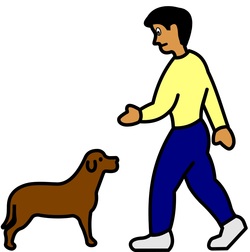
All stories do not have to come from books or even, as suggested above, from your own brain: the Learners themselves may be capable of creating a simple story. While a Learner may not be capable of putting that story onto paper as text, a staff meber can do that for them. I hear you screaming at me.. 'How can a Learner who is yet unable to communicate fluently (with or without an alternative system) and who has only emergent literacy skills dicate a story to a member of staff?!' Of course, for some that would be too much to demand. However, we can 'scaffold' a Learner's efforts and help him/her to create a story. For example we could tell the Learner that we are going to write a story together but s/he is going to decide what happens in the story. "To begin we need to know who or what the story is about. Would you like your story to be about a person, an animal, or a thing?" "A person?" "Is it a man, a woman, a boy, or a girl?" It may be that we can use symbol cards to ascertain a Learner's choice or simply present each option slowly, one-by-one until the Learner provides a positive response that we recognise. "A boy! OK. What shall we call him, he will need a name..." Next, we could discover what the boy is doing, where he is going, what's happens on his journey, etc, etc. The story does not have to be long or complex, it just needs to come from the Learner. Here is such a story 'written' by a young lady (experiencing severe learning difficulties called Clare who could actually speak) working with me while I was teaching at a college in near Manchester a few years ago...
"A boy was going to school one day. A bad dog came up to him. The dog bit the boy on the leg. An ambulance came and took the boy to hospital. The doctor made his leg better. The boy went home."
It is neither a long nor a complex story and it's grammar owes much to me rather than to Clare but the story line is entirely hers. It took a whole session to 'extract' the story from her! Together we wrote the text and chose pictures/symbols to illustrate each part of it. We printed it, laminated it and spiral bound it to form Clare's own special book. She was very proud of it. Clare's task on subsequent days was to retell the story by 'reading the words' and using the picture clues. It took several weeks before she was able to do so (at least somewhere near) ... in early days, the story she told bore no resemblance to the story in the book even though she was looking at the pictures that she had chosen for each page. It took a while for her to recognise and respond to pictures and even longer for her to recognise and respond to a few of the words.
All this was long before the days of the iPad and other such mobile tablet/android technologies. Today it would be possible to put the story so created directly onto an iPad and have the system read both the sentences and the individual words one by one just by touching them. Using the Voice Ink system the printed form could be made to speak using the Voice Pen system. Alternatively, as has been suggested elsewhere on this page, the story could be made into a PowerPoint Presentation. However, even without such technology and just a humble pencil and paper, a Learner's story can be given life!
Idea # 46: Create 'I see' books

An idea is to create sets of materials around a particular theme or topic.
Such books can be created with Voice Symbols as detailed in the idea above. Resources for the books can be created with Voice Symbol as also detailed in the ideas on this page. However, it is also possible to create such books with programs such as 'Communicate In Print' or even using Microsoft Word or some similar word processor. If you do not feel competent enough to work with images in Word then just use it to print out your text story and then simply use scissors and glue to add the images etc. It does not have to be fancy ... it just needs to work for you and the Learner!
For example, one such theme can be the 'I see' theme. In this theme, there are lots of repeated lines in a consistent format such that the Learner can soon begin to predict what is going to come next. An example for I see the sweet shop is provided below:
I go into the shop.
I see a man.
I see some sweets.
I want the sweets.
I ask the man for the sweets.
I go into the kitchen.
I see my mum.
I see a cake.
I want the cake.
I ask my mum for the cake.
I go into the farm.
I see a boy.
I see a pig.
I want the pig.
I ask the boy for the pig.
This story has repeated story lines and uses simple word forms. It can be illustrated by creating a back ground scene and then adding various items within the background. The Learner’s task then is to listen and read along with you until a target word is reached and then locate the target word in the picture. If the V-Pen system is used, touching the part of the picture with the V-Pen will cause the Pen to say the word. Now the Learner has read part of the story for him/herself! However, if another system is used, then produce a set of resource cards to accompany the story which can be selected by the Learner to both initiate and respond while interacting with the the text. We can create a set of resources to go with the story and with the pictures. The symbols match the items in the story. We can cut the cards so produced to separate text (label) from image (symbol). Now we have words, symbols, pictures and story ... and, if V-Symbol is used as the program to do this, all work with the V-Pen. Just imagine the possibilities!
Idea # 47: It's a True Story!
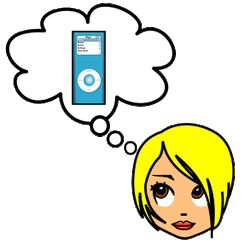
'Emergent literacy' activities are important for all Learners at all levels of ability who are beginning to work with text. Finding such stories that are more suited to adult Learners is defintely a more difficult task. However, it is possible to create your own story lines with such Learners based on true, real life experiences. For example, you might hide a Learner's favourite item in one room. You then travel to different parts of the establishment looking for the item. In each room, you ask the Learner to pick something in that area that s/he can see in/on/under which you can look. Last of all, travel to the 'hiding' area to 'discover' the item. Now, you can create a story based on real life events and real life things using a repeated story line:
Janet wanted her ipod. She could not find it.
She went to the kitchen and looked in the oven. "It is not here" said Janet.
Janet wanted her ipod, She could not find it.
She went into garden and looked under the tree. "It is not here" said Janet.
Janet wanted her ipod, She could not find it.
She went into the bathroom and looked in the cupboard. "It is not here" said Janet.
Janet wanted her ipod, She could not find it.
She went into her bedroom and looked on the bedside cabinet.There it is! I remember where I put it!
Of course, there may be no need to hide the iPod or iPad in the first instance; Janet may always be losing it! Thus, the story can be about a real true life event not initiated by a Significant Other. The story can be as long as you want it to be and can feature specific words (and word groups) on which you want to focus (for example, the prepositions in, on and under). You can add a repeated line so that the Learner can speak and take his/her turn in the story. You can create the story by writing out the lines and drawing the pictures, or by creating it in a word processor succh as Word, or by using some specialist software such as Communicate: In Print (From Widgit). or VoiceInk from Ability-World or SimpleAAC from Ability-World
Janet wanted her ipod. She could not find it.
She went to the kitchen and looked in the oven. "It is not here" said Janet.
Janet wanted her ipod, She could not find it.
She went into garden and looked under the tree. "It is not here" said Janet.
Janet wanted her ipod, She could not find it.
She went into the bathroom and looked in the cupboard. "It is not here" said Janet.
Janet wanted her ipod, She could not find it.
She went into her bedroom and looked on the bedside cabinet.There it is! I remember where I put it!
Of course, there may be no need to hide the iPod or iPad in the first instance; Janet may always be losing it! Thus, the story can be about a real true life event not initiated by a Significant Other. The story can be as long as you want it to be and can feature specific words (and word groups) on which you want to focus (for example, the prepositions in, on and under). You can add a repeated line so that the Learner can speak and take his/her turn in the story. You can create the story by writing out the lines and drawing the pictures, or by creating it in a word processor succh as Word, or by using some specialist software such as Communicate: In Print (From Widgit). or VoiceInk from Ability-World or SimpleAAC from Ability-World
Idea # 48: S.O.S! Select One Symbol
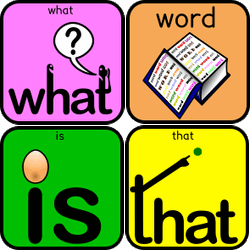
i) Select target words from a story or a part of a story;
ii) Create a 'board' of those words in Voice Symbol or Board Maker;
iii) Print;
iv) laminate;
v) Cut into individual symbol cells
vi) When you reach one of the words in the story, ask the Learner to select, from
a set of symbols, the word from the page.
Note: BoardMaker symbols produced this way will not speak.
Voice Symbol symbols produced in this way will speak when accessed with the V-Pen.
Idea # 49: Get F.I.T... Food Including Text!
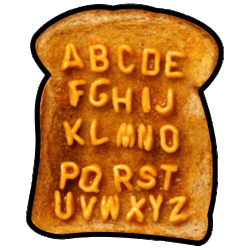
Remember the 'Love Hearts' sweets? the heart shape candies were adorned with simple messages. Kids love them. Well, why not extend the idea to other FIT foods:
- cakes with piped icing or chocolate text;
- toast fingers with words made out of piped (smooth) peanut butter
- alphabet soup, pasta, spaghetti, ...
- chocolate biscuit with lettering applied to top;
- chocolate buttons, each with a white chocolate letter so Learner can make a word to eat!
- just molten chocolate piped onto grease proof paper into the form of a word.
Present for Mother's Day?
- letter shaped cutters with pastry or biscuit dough;
- roll dough into a sausage shape and form into letters and letters into words;
- Paint food colouring words onto pastry;
- piped instant mash potatoes;
- use (clean) fingers to write words into soft foods before baking;
The Learner has to choose the word or words to go on the food s/he is making/preparing.
The Learner has to recognise the word(s) and the letters in the word(s)
The Learner is to have a lot of fun!
Perhaps this section should be called 'get FAT'! (Food And Text)
Idea # 50: Create an active environment

There is an old French proverb which translates as 'All things come to those who wait'. A child may soon learn that if s/he waits long enough someone will eventually do it for them. Many environments have time constraints and this can add to the pressure that staff feel to 'get the job done' by any means even if it means doing the job on behalf of the Learner rather than continually waiting and encouraging the Learner to do it for himself. Such constraints and such activities can lead a Learner towards a passive state. 'Learned Helplessness' or 'Learner Passivity' is a continuing cause for concerned.
We need to work against passivity. Sometimes, children "cruise throught the day as a passive passenger, never needing to pay attention to the road, or even helping with navigation of where they are heading (Guided tour VS following a map)". (Caroline Musselwhite 2009)
If a person does not have the need to communicate he is unlikely to be helped by any intervention with any communication strategy. (Silverman F. 1980)
These learners either showed no interest in their environments or were able to participate in the environment without engaging in communicative behaviour. This condition has been referred to as learned helplessness (Reichle J. 1991)
It is likely that poor system use may be at least partly explained in terms of the augmentative communication training practices adopted in the schools. Information gathered during the course of this investigation indicated that many of the children were receiving fairly limited exposure to sign and symbol use at school, and that relatively few attempts were being made by teachers and speech and language therapists to foster generalisation of augmentative systems use outside of formal training sessions. (Udwin O. & Yule W. 1991 page 147)
In some cases it will be difficult to find things or activities that are interesting for the individual. When this is the case then measures must be taken to improve the situation: in such instances teaching should begin by creating interest and awareness. (Von Tetzchner S. & MartinsenH. 1992)
Participation is the only prerequisite to communication. Without participation, there is no one to talk to, nothing to talk about, and no reason to communicate. (Beukelman D. & Mirenda P. 1992 page 177)
The goal of any communication system is to increase an individuals ability to communicate more effectively and efficiently. Typically those who rely on augmentative communication systems communicate at slower rates and with restrictive vocabulary sets. The response by their speaking communication partners is to dominate the conversation by initiating, setting the topic, asking yes/no questions, not pausing long enough to allow the augmentative communicator to respond and closing the conversation. The augmentative communicator then may assume a very passive role in the conversation with reduced social experiences and reduced motivation to use the communication system. (Morris K. & Newman K. 1993 page 85)
Passivity is commonplace amongst people with a severe communication impairment. In a study by Sweeney (SWEENEY L. 1991) 42 out of 50 users of AAC showed some level of learned helplessness when interacting with one or more significant others. The more severe the communication impairment the greater the degree of helplessness. It would appear that, the development of an individual’s ability to communicate also effects an improvement in an individual’s desire to act independently. The factors that are involved in creating an atmosphere that is supportive of communication are also the factors that tend to demand more interactive skills of an individual. The relationship is reciprocal: greater communicative ability may lead to greater independence and greater independence may lead to greater communicative ability. However, prevention is better than cure: the role of communication in the avoidance of personal passivity should be stressed:
Without an effective means of communication during childhood development of autonomy, exploratory/experiential opportunity, and relative strength of self-image/esteem will be compromised (Sweeney L. 1993)
Therefore it is crucially important that we develop an 'active environment'. What is an active environment? An active environment is one in which:
- Learner passivity is recognised as a condition unintentionally caused by Significant Others as a side-effect of interactions.
- Staff are not time pressured to perform tasks which Learners are physically and cognitively able to do for themselves.
- Staff have been trained to understand when to take a 'back seat' and when to intervene.
- Learners have control over the environment and their learning.
- Open question forms are used (in preference to the closed form).
- Learners are encouraged to make their own choices.
- The development of language is seen by all as extremely important.
- 'Fly swatting' is an unsupported practice (see this website's section on switching)
- Leaners are engaged cognitively and not simply just asked to make a few 'choices' each day (which are actually flyswatting activities).
Passivity is not a good state for any Learner to acquire but can easily happen as a natural result because of a 'caring' attitude of Significant Others:
All children are dependent upon adult caretakers for fulfilment of their physical and emotional needs. In the process of becoming autonomous, children explore and test their world and begin signalling their growing independence to caretakers through physical actions and spoken messages. If provided with an adequate climate for growth, an increasingly solid foundation for independence in adult life will be formed. However, for children with severe communication and/or physical limitations this process of self growth may be overlooked or suppressed. Because many children experiencing the aforementioned challenges are not able to signal their readiness for exploration or independence in traditional ways, parents and other caretakers (e.g. professional service providers, educators, etc.) are inclined to continue to act as direct or indirect agents for fulfilling the child’s needs. When later provided with adequate means to express, query, or explore, (e.g. assistive technology) the child may persist in a more passive state due to learned helplessness or learned dependency (Sweeney L. 1993)
For children who grow up with motor disorders, the difficulties they experience in moving and speaking and the influence from their environment both contribute to the development of a passive style. These children often place great demands on their parents. Training, feeding and washing take up a lot of time, and there are few activities that the children and their parents can take part in together. Even when the children are small, their parents consider them to be happiest when they are passive. ‘She's as quiet as an angel' and, ‘She is so good', are typical remarks made by mothers about their small children with cerebral palsy(Von Tetzchner S., & Martinsen H.) (See also Shere B. & Kastenbaum R.1966)
A suggestion is to identify a situation in which a person is presently inactive and selectively modify it so that the person is gradually empowered. The situation chosen must be non-life threatening. Do not hold back food or drink, for example, until a person is forced to ask for it. Our concern is for empowerment through communication skills although other skills come into play. Take the situation in the cartoon. What should be modified? How would staff tackle this situation in order to empower Shani?
Staff could COPE with this situation in a number of ways:
C Choose and Customise or Create Communication vocabulary. Check Concepts
O Oversee, Organise, Order, & Orchestrate the Ongoing tuition of Optimum Vocabulary
P Practice makes Perfect
E Engineer the Experience with Expectation of Efficacy.
Evaluate. Encore. Enlarge to other areas of the day.
What does COPE mean in reality in this situation?
1. There is an expectation that Shani will request her own drink each time
2. To do this she must have access to a means of communication which will empower her. The communication could be a menu of drinks from which she can select. However, choosing from a menu is NOT enough because if everything on the menu provided is appropriate how is the Learner challenged cognitively? Whatever the Learner appears to point to is provided: job done? NO! How can we make a cognitively engaging menu???
3. Shani needs to understand the concepts on the menu? How can we be sure that she does? There needs to be a period of teaching concepts and checking concepts alongside and, in addition to, the activity.
3. How can we check that Shani has cognitively engaged with the drinks choice and not just 'flyswatted'? There are a numbe rof ways to do this: for example, a staff member could be prompted to ask her on completion of her drink what she chose to drink today. If Shani is able to use the same method to inform the staff member (who should not know what she had to drink) then it is a sign of cognitive engagement (repeated ability to do so would start to confirm cognitive engagement)
4. Repeat the process at all drink choosing times.
5. Successful? Then enlarge to cover other areas of Shani's day.
What about the time to do all these things? Time is always an issue: I often hear, ‘There isn't the time to do what you are asking'. Well, actually, yes there is! It is a question of priorities. What are we there to do? If we are not pursuing greater independence for the Learner then we are wasting out time. All things come under the ultimate goal of greater independence. Also we do not have to do things when time is at it's most pressing: at some times during the day events appear to be more demanding than at others - the children have to be ready for school at 9 o' clock. This is not a good time to work on dressing skills. However, when the children return from school and change into their evening wear ... Further, there is no rule which states that every aspect of an item must be taught at the same time. For example, getting dressed can be broken down into much smaller units (Task analysis - see for example, AINSCOW M. and TWEDDLE D. 1979) such as choosing clothes, laying out clothes, putting on socks. If the learner is only tasked (initially) with putting on his or her own socks then there is a chance of getting to school on time.
CASE STUDY: A school has put back morning assemblies into the afternoon. God may be worshipped at any time of the day. Their reasoning for this move was to allow more time (when the Learner s were more active) in the morning for the pupils and students to do more for themselves without having to worry about being in the school hall for assembly at 8.45
For more ideas on creating active environments, o to the C.A.N. (Creative Active eNvironment) page on this site by clicking here.
Idea # 51: Control Yourself!

...learners with disabilities are taught to be compliant, to follow the instructions of others. Compliance training is not considered complete until it generalizes across persons and directives, so that any stranger can give the learner any instruction and get compliance. (Sigafoos J. & Reichle J. 1991)
Learned helplessness occurs when it is unclear to the learner that he or she is unable to exert control over the environment. Guess, Benson, & Siegel-Causey (1985) suggest that learners who exhibit helplessness see no relationship between their actions and environmental outcomes. (Reichle J.. 1991 p. 141)
The primary intervention strategy used to remedy learned helplessness involves the establishment of the learner's contingent control over some aspect or aspects of the environment. (Reichle J. 1991 p. 141)
The provision of positive control experiences early in life will be a primary factor in helplessness immunization. Vocabulary selection for and design features of AAC systems can significantly change the level of personal power and control available to the augmented communicator. (Sweeney L. 1993)
Allowing and creating situations in which an individual can take control is an important tool to be used against the threat of passivity. The augmented communicator requires a vocabulary which permits directions to be given, allows for flexibility in approach and may be reasonably rapidly presented.
CASE STUDY: While teaching some of the lexical verbs to students at a college the therapist and the tutor gave control of the situation to each of the students in turn. First they had to pick a particular verb and speak it out loud. Then they had to say 'GO'. The therapist and the tutor had to act out the verb until the student said 'STOP'. 'Kiss' was a popular verb with everyone concerned!
CASE STUDY: A tutor had told staff that should a student ask for or demand something then, in order the student experience control and understand communication has consequences, the staff should act on the demand. A short time later on entering a classroom the same tutor found a student with tears rolling down his face because he was laughing so much. He was saying 'Can I have a glass of water please?' over and over again and the staff were obeying his commands. He had about six glasses of water in front of him. When the tutor asked the staff what they were doing they said they were simply doing what he had told them! However, if a three-year-old had a glass of coke in front of him and then asked for another most parents would say 'When you drink that one'. Why should this student be any different? Everyone saw the funny side of the situation. Best of all the student never forgot how to generate 'Can I have a glass of water?' from its component elements. He had experienced real control though communication.
Creating regular opportunities for individuals to make decisions or to take control (using their AAC systems) is important because they provide an element of choice, a situation in which new vocabulary may be taught, and the necessary experience which is so vital if passivity is to be kept at bay. For example:
While shopping 'What shall we buy next?' 'Where shall we go next?'
'You get the coffee this week. Remind me or I'll forget.'
Meals 'What shall we have for tea today?' 'What time shall we eat?'
Problem solving 'You tell me what to do and I'll do it.'
Television 'It's your turn to decide what we are going to watch tonight.'
Leisure 'What shall we do this evening?', 'Where shall we go?'
SGDs 'You take control over cleaning and charging. You must tell me when they need doing.'
Pets 'You have to feed the rabbit from now on. He is your pet.'
Reading 'What shall we read today?' 'Where shall we read today?'
Remember, giving control:
- without the appropriate vocabulary is a futile exercise;
- and then taking it away again is a waste of everybody's time. If you ask someone what they want
to eat and they say 'cake with cold baked beans on top' - give it to them. They deserve it for being
able to say it! Don't say, ‘Oh no you can't have that.';
- but not seeing it through does not help a person to achieve responsibility. If you remember to buy
the coffee (as in the first example) without the Learner's prompt then the process is invalidated.
Don't be silly... I can't let him control feeding the rabbit, the poor creature will starve!
No, it won't, you won't let it. You are not simply giving responsibility without any checks: that would be foolhardy indeed. We can prompt by saying, 'Have you done your chores today?'. Set a time in which the Learner has complete freedom to carry out the responsibility unprompted. If the task is not performed in that period then start with the smallest and most indirect prompt. Allowing a certain amount of time between each prompt, FINALLY reach 'I think you have forgotten to feed the rabbit. Please go and do it.'
Learned helplessness occurs when it is unclear to the learner that he or she is unable to exert control over the environment. Guess, Benson, & Siegel-Causey (1985) suggest that learners who exhibit helplessness see no relationship between their actions and environmental outcomes. (Reichle J.. 1991 p. 141)
The primary intervention strategy used to remedy learned helplessness involves the establishment of the learner's contingent control over some aspect or aspects of the environment. (Reichle J. 1991 p. 141)
The provision of positive control experiences early in life will be a primary factor in helplessness immunization. Vocabulary selection for and design features of AAC systems can significantly change the level of personal power and control available to the augmented communicator. (Sweeney L. 1993)
Allowing and creating situations in which an individual can take control is an important tool to be used against the threat of passivity. The augmented communicator requires a vocabulary which permits directions to be given, allows for flexibility in approach and may be reasonably rapidly presented.
CASE STUDY: While teaching some of the lexical verbs to students at a college the therapist and the tutor gave control of the situation to each of the students in turn. First they had to pick a particular verb and speak it out loud. Then they had to say 'GO'. The therapist and the tutor had to act out the verb until the student said 'STOP'. 'Kiss' was a popular verb with everyone concerned!
CASE STUDY: A tutor had told staff that should a student ask for or demand something then, in order the student experience control and understand communication has consequences, the staff should act on the demand. A short time later on entering a classroom the same tutor found a student with tears rolling down his face because he was laughing so much. He was saying 'Can I have a glass of water please?' over and over again and the staff were obeying his commands. He had about six glasses of water in front of him. When the tutor asked the staff what they were doing they said they were simply doing what he had told them! However, if a three-year-old had a glass of coke in front of him and then asked for another most parents would say 'When you drink that one'. Why should this student be any different? Everyone saw the funny side of the situation. Best of all the student never forgot how to generate 'Can I have a glass of water?' from its component elements. He had experienced real control though communication.
Creating regular opportunities for individuals to make decisions or to take control (using their AAC systems) is important because they provide an element of choice, a situation in which new vocabulary may be taught, and the necessary experience which is so vital if passivity is to be kept at bay. For example:
While shopping 'What shall we buy next?' 'Where shall we go next?'
'You get the coffee this week. Remind me or I'll forget.'
Meals 'What shall we have for tea today?' 'What time shall we eat?'
Problem solving 'You tell me what to do and I'll do it.'
Television 'It's your turn to decide what we are going to watch tonight.'
Leisure 'What shall we do this evening?', 'Where shall we go?'
SGDs 'You take control over cleaning and charging. You must tell me when they need doing.'
Pets 'You have to feed the rabbit from now on. He is your pet.'
Reading 'What shall we read today?' 'Where shall we read today?'
Remember, giving control:
- without the appropriate vocabulary is a futile exercise;
- and then taking it away again is a waste of everybody's time. If you ask someone what they want
to eat and they say 'cake with cold baked beans on top' - give it to them. They deserve it for being
able to say it! Don't say, ‘Oh no you can't have that.';
- but not seeing it through does not help a person to achieve responsibility. If you remember to buy
the coffee (as in the first example) without the Learner's prompt then the process is invalidated.
Don't be silly... I can't let him control feeding the rabbit, the poor creature will starve!
No, it won't, you won't let it. You are not simply giving responsibility without any checks: that would be foolhardy indeed. We can prompt by saying, 'Have you done your chores today?'. Set a time in which the Learner has complete freedom to carry out the responsibility unprompted. If the task is not performed in that period then start with the smallest and most indirect prompt. Allowing a certain amount of time between each prompt, FINALLY reach 'I think you have forgotten to feed the rabbit. Please go and do it.'
Idea # 52: Make it a chore!
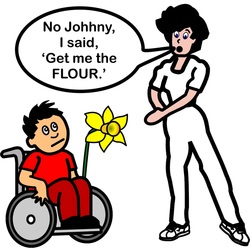
The way to empower anyone experiencing any form of disability is NOT to treat them as special. That is, we should not excuse them from things simply because of the disability. That does not mean that we attempt to send little Johnny in his wheelchair up the stairs but rather, that, if we expect it of Johnny's sister then we should also expect it of Johnny. If Jonny's sister (Jane) has to do chores then Johnny should have to do chores. Yes, Johnny is a person who requires a wheelchair for mobility and has a great deal of difficulty coordinatin his movements and cannot speak and is not yet literate unlike Jane. Pity poor johnny. No! Don't pity poor Johnny! That road leads to passivity and learned helplessness and a life of exclusion. Don't pity Johnny; empower him! Begin by treating him no different from his sibling: if Jane has to do it then why not Johnny? Sure it may be on a different level but he still can involved.
In terms of acquiring literacy skills, johnny can be tasked to help around the house in little chores which involve literacy at a level appropriate to Johnny's present skills. For example, Johnny could be tasked to her in teh kitchen when a parent is cooking. Johnny can be placed in charge of the ingredients. The ingredients are kept in identical containers (Tupperware etc) and have been given a label that Johnny can immeadiately recognise OR can be taught to recognise. When mum or dad asks for the flour, johnny has to attempt to indicate the correct container (He may be capable of more). Initially the flour can have both the symbol and the word. However, as time progresses, the symbol should be faded and the word be allowed to take centre stage.
Initially, the word can be written on the label in such a way that it suggests flour (or rice, or pasta, or whatever). For example the words could be written so that they appear to be composed of the substance in question. Again, this can be faded over time leaving just the traditional orthographic form.
In terms of acquiring literacy skills, johnny can be tasked to help around the house in little chores which involve literacy at a level appropriate to Johnny's present skills. For example, Johnny could be tasked to her in teh kitchen when a parent is cooking. Johnny can be placed in charge of the ingredients. The ingredients are kept in identical containers (Tupperware etc) and have been given a label that Johnny can immeadiately recognise OR can be taught to recognise. When mum or dad asks for the flour, johnny has to attempt to indicate the correct container (He may be capable of more). Initially the flour can have both the symbol and the word. However, as time progresses, the symbol should be faded and the word be allowed to take centre stage.
Initially, the word can be written on the label in such a way that it suggests flour (or rice, or pasta, or whatever). For example the words could be written so that they appear to be composed of the substance in question. Again, this can be faded over time leaving just the traditional orthographic form.
this is but one idea of many. You could task your son or daughter with the responsibility of taking out the trash as well as feeding the fish for example.
Hey come on, s/he can't physically do either of those things!
Maybe not physically but that is not what I said: I said 'the responsibility for' so perhaps Johnny has to select a BIGmack that's permanently mounted to the wall with the word TRASH on it in order to remind you to take out the trash. Next to the big mack is another with the word FISH on it to remind you to feed the fish.
S/he'll just learn the positions and not the words
Sure s/he will. So what are you going to do about that? Swap them around from time to time and see what happens! Also what about having a third BIGmack that has a bogus word thrown into the mix at some point?
Three BIGmacks? Who do you think I am? A millionaire?
Not at all. You can do the same with large paper prints of the text. All you require is some means of enabling Johnny to draw your attantion to the fact that he has something to tell/show you. If Johnny has a commuication aid (and if not, why not?) such a message can be stored:
"Mum/dad please come to the chore wall for a moment" and then Johnny can point out (hand, eye, or any alternative) which chore is required to be undertaken. Start simple and get increasingly trickier!
What if Johnny simply forgets to do it?
What if any child forgets to do his or her chores? What do you do? Well do what you would do with Johnny's sister or brother who are able to do chores 'unassisted'. Why should Johnny be treated any differently? I started by saying "The way to empower anyone experiencing any form of disability is NOT to treat them as special. That is, we should not excuse them from things simply because of the disability. I'll finish by saying that too!
Hey come on, s/he can't physically do either of those things!
Maybe not physically but that is not what I said: I said 'the responsibility for' so perhaps Johnny has to select a BIGmack that's permanently mounted to the wall with the word TRASH on it in order to remind you to take out the trash. Next to the big mack is another with the word FISH on it to remind you to feed the fish.
S/he'll just learn the positions and not the words
Sure s/he will. So what are you going to do about that? Swap them around from time to time and see what happens! Also what about having a third BIGmack that has a bogus word thrown into the mix at some point?
Three BIGmacks? Who do you think I am? A millionaire?
Not at all. You can do the same with large paper prints of the text. All you require is some means of enabling Johnny to draw your attantion to the fact that he has something to tell/show you. If Johnny has a commuication aid (and if not, why not?) such a message can be stored:
"Mum/dad please come to the chore wall for a moment" and then Johnny can point out (hand, eye, or any alternative) which chore is required to be undertaken. Start simple and get increasingly trickier!
What if Johnny simply forgets to do it?
What if any child forgets to do his or her chores? What do you do? Well do what you would do with Johnny's sister or brother who are able to do chores 'unassisted'. Why should Johnny be treated any differently? I started by saying "The way to empower anyone experiencing any form of disability is NOT to treat them as special. That is, we should not excuse them from things simply because of the disability. I'll finish by saying that too!
Idea # 53: Convert the Learner's AAC device to text!

What? Are you crazy? I can't do that! S/he will not be able to cope
Yes s/he will. It depends how you do it. Suppose little Jane is fairly competent with a specific page in her DigiSpeaker (where DigiSpeaker is the 'name' of any AAC system with dynamic pages). Let's change just one of the buttons on that page from a symbol and text to text alone. Make it the one she uses the most. One that Jane finds very motivating because it enbles her to do her favourite thing (BEST - Best Ever Stimulating Thing). Do you think that she will suddenly stop using that button simply because it's lost its symbol? Of course not. After a period (that could be several days), do the same with the next most popular button on the DigiSpeaker. While it may take many moons to convert the whole system, it's hardly a chore as you are doing just one every few days (or even longer) and, at the end of the process, Jane is communicating by text alone.
The illustration shows that the GAMES category has had its symbol removed and replaced with the text for games. You know that Jane is always going to the games category and asking for a particular game so why not replace both the category label and the symbol for the particular game with text?
Surely Jane is just remembering the location.
Maybe, but as time progresses and the screen begin to be more heavily embedded with text, it will become increasingly more difficult to rely on location alone. Also, if Jane can remember the locations of every word on every page of her DIgiSpeaker, what does that tell us about Jane's cognitive ability? Surely, such a child is capable of this task!
Idea # 54: Pelmanistic Pairings
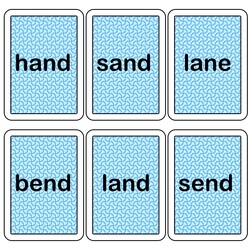
There is a traditional game in which you lay out a series of cards and the players have to locate matching pairs. Each player is allowed to turn over two cards at a time, if they match, s/he can keep them, if they don't match, s/he must turn that back over such that the other players have to try and remember which card is where. The game is called 'Pelmanism'. It is possible to create a variety of Pelmanism by making your own literacy cards; on one side there is a symbol without any text and, on the other side. the word for the symbol. The cards are placed out, word up, and the players have to find matching pairs. If they were literate, the players could simply read the words that are showing, however, they may learn that if they seek out matching words then they locate matching symbols! In order to seek out matching words they have to attend to the text. The text used can be made so that it may only differ by a single character/letter: for example, sand, hand, hard, card, care, hare ... in this way , the game can be made more diffcult for those that have slighter greater skills. When two cards are chosen, they are turned over ... if the symbols are a match, the Learner gets to keep the cards. The Learner with the most cards at the end is the winner.
Idea # 55: Find useful websites to use to support literacy learning
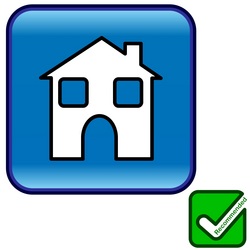
Here are some that are recommended by TalkSense:
http://www.starfall.com/
http://www.letters-and-sounds.com/
Topmarks
If you know of a great website for literacy with sounds and games (not just printable resources) let me know and I'll add it to the list!
In development
Making Books (more) Accesssible
Image below from 'We're going on a Bear Hunt' by Michael Rosen and Helen Oxenbury: Walker Books Ltd; New Ed edition (16 Sep 1993)
Idea # 56: Use Voice Symbol to Create a Library of Accessible Books
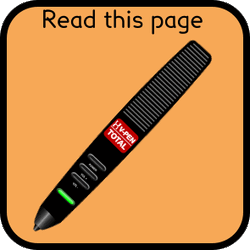
Using the Voice Symbol program (see the V-Pen pages on this website) it is possible to create a paper symbol that can itself speak when accessed with the V-Pen. The technology is extremely sophisticated but , in use, the system is as simple as pen and paper and nearly eeryone knows how to use those!
- Using the voice symbol program create a sheet of V-Pen symbols.
- The symbols can be any size but should be of a sufficient size to enable Learner access.
- Record a page of text into each symbol until book is complete.
- Save the file using the name of the book as the file name.
- Print the symbol sheet
- Laminate
- Cut the symbol sheet into individual symbols.
- Attach each symbol to its appropriate page in the book.
- Teach the Learner to touch the symbol that can be found on every page with the V-Pen.
- The V-Pen will read the story. It will never grow tired. It will read it over and over again!
- Build a library of Pen accessible books!
Idea # 57: Spend, Scan, Symbolise, Stick, Speak!
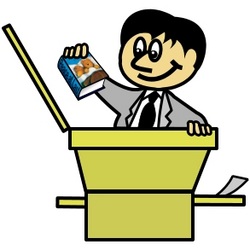
Spend - Purchase a children's book
Scan - Scan the images from each page into the computer
Symbolise - Use Microsoft Word to copy the text from each page and
add the scanned image. As each page is competed in word
to look approximatey the same as the book, it can be imported into
VoiceInk and printed. The printout should be approximately the
same size as the page from the book.
Stick - Stick the print out over the top of the page!
If you don't wish to do that then create a 'copy' of the book.
For each copy you create, you must have purchased one original:
Remember Copyright!
Speak - Use the Voice Pen in conjunction with your 'new' book and it will speak.
If you use Voice Ink software it can even speak each individual word!
Note: While in the Voice Ink software, you can add sound efffects to the images.
Once a book has been reproduced in this way, it can be added to your library of talking tooks which can then be loaned together with the pen system to individual after individual.
Idea # 58: Page fluffing

The pages in almost any book may be ‘fluffed’ to assist an individual to flip them more easily. Fluffing can be done by sticking some thick felt pads to the back of each page such that the pages cannot completely close together. The problem with this approach is that, by definition, it makes one edge of the book much wider than the spine and therefore a little more difficult to store.
Fluffers can either be permanent or removable. Permanent ones can easily be made from:
- the thick weather proofing foam for doors and windows that can be purchased from
almost any D-I-Y store.
- sponge of the corrrect thickness,
- thick felt pads: the kind that are used to attach to the bottom of furniture legs to
prevent damage of floor surfaces
.- 'lollipop sticks' (or something similar) glued to each page of the book such that they
stick out from the book and can be easily accessed by the Learner. The sticks should
be 'staggered' so that one is not directly above another (see below)
- if paper clips are used in conjunction with the sticks they can be used with a weak magnet
attached to a head stick or other prosthesis.
Removable fluffers can easily be made from:
- clothes pegs (clothes Pins);
- bag sealer clips;
- paper clips used to grip page extenders;
Idea # 59: Stick it!

Using old (or new!) lollipop (popsicle) sticks to act as enhanced page turners can ease the process of turning pages in books and communication folders. The sticks can easily be colour encoded (if necessary) to make the process of selecting the correct page/area simpler.
Sticks can be permanently attached to pages (double sided adhesive tape?) or temporarily attached using paper clips.
Sticks can be permanently attached to pages (double sided adhesive tape?) or temporarily attached using paper clips.
Idea # 60: Create an Inclusive Library
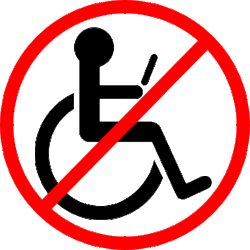
www.nicurriculum.org.uk/docs/.../inclusive_literacy_notes.doc
http://www.inclusivelibraries.com/
The image left suggests that many libraries are not inclusive places for all Learners. The red portion of the symbol needs removing such that the library becomes an accessible place for all Learners no matter what level of ability.
Creating an Inclusive Library ensures that the environment, the materials, and the staff are adequately prepared for even the most physically or cognitvely challenging of individuals. No-one is excluded.
What is an Inclusive Library?
It is a library that:
- is accessible to all Learners irrespective of their visual, commmunicative, physical or cognitive ability;
- has a special needs equiment provision to assist those who may need them to access it's provision;
- provides a range of specially prepared materials that are accessible to those with special needs;
- has staff trained in assisting people with special needs to find and use the materials for which they are searching;
- can loan equipment for access as well as literacy enhancing materials;
- provides information for Significant Others to be able to support Learners with very special needs.
Idea # 61: Utilise life quilts and or life boxes for Learners experiencing profound intellectual impairments
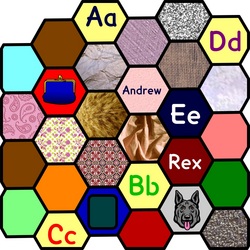
Life quilts (Grove, N. 1996) or life history boxes are a possible alternative to personal story books. Yes, a life quilt is actually a real quilt comprised from sewing pieces of material together. The materials used can be anything that has meaning for the Learner from different periods of their life (for example: bits of clothes, curtains, cushions, duvets covers) from early childhood through to the present day. Objects can also be sewn into/onto the quilt the quilt: indeed, it can utilise anything that the Learner will recognise and may enable them to recall an event or a particular period. Obviously, to work properly, it is better if such an item is started early in the Learner's life (unless the materials have not been thrown away and are still available). The Learner can then be encouraged to interact with the quilt as it continually develops with new additions continually adding new levels of interest. There is no reason why some sections of the quilt could not be letters of the alphabet or even important words such as the Learner's name or a favourite pets name and image (pets may come and go). The quilt can also be used as a bed cover!
Things such as old fabric purses can be sewn onto the quilt. Not only do they remind the Learner of a prior time when that was their purse but they can contain other items of interest. Sections of the quilt can have pockets. Into the pockets can be put cuttings from comics (laminated so that they will last, or photographs, or anything which is evocative or a previous time. Even small teddy bears etc could be sewn onto it such that it becomes a living, on-going, three dimensional object of reference for an entire life.
Additionally or as an alternative, a 'life-box' can be used to collect important objects from each period of a Learner's life. Such as drinking vessels, a teddy or doll or other favoured toy, old footwear, birthday cards, as well as (laminated!) photographs. Using these items it is not only possible to tell a story of the Learner's life but they can also be used to illustrate other stories because they are 'known' to have meaning for the Learner. At least, if such items do not have meaning then it will be very unlikely that other items will be any more successful.
Idea # 62: PowerPoint Promotes both AAC and Literacy
and can be accessed via switch!

PowerPoint is one of the most verstaile programs in the special need's teacher's armoury! The great thing is that most schools will already have it and therefore there is no need for additional expense. PowerPoint can be projected and so it can easily be used on whiteboards with groups or run on a computer for a single Learner. As any image can be dropped into PowerPoint, presentations can be tailor-made for the individual to increase motivation.
PowerPoint can be accessed via:
- a mouse or mouse alternative;
- a touch screen;
- single switch scanning;
- dual switch scanning.
Using switches to access PowerPoint is a little more tricky and time-consuming but it is possible.
The next few ideas cover just some of the uses of PowerPoint for developing AAC and literacy.
If you believe there are important ideas that are missing from this section, why not contact me and let me know.
Idea # 63: Create you own PowerPoint Stories
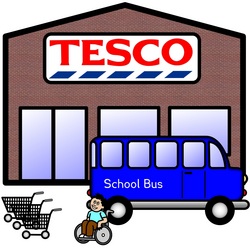
One idea for PowerPoint is to create your own stories with the Learner by going out and about and taking pictures with a digital camera.
- A journey around my school;
- A trip to the supermarket;
- A walk in the woods;
- A walk in the school garden;
- ...
The resulting images can easily be dropped into a set of PowerPoint slides and a simple story created within text boxes on each of the slides. The Learner can then re-live the story over and over again and learn the accompanying vocabulary. There are several ways to make PowerPoint read out the text that you have created. Probably the simplest is to use PowerTalk (see below)
- A journey around my school;
- A trip to the supermarket;
- A walk in the woods;
- A walk in the school garden;
- ...
The resulting images can easily be dropped into a set of PowerPoint slides and a simple story created within text boxes on each of the slides. The Learner can then re-live the story over and over again and learn the accompanying vocabulary. There are several ways to make PowerPoint read out the text that you have created. Probably the simplest is to use PowerTalk (see below)
Idea # 64: Use PowerTalk to read your PowerPoint Stories

There is at least one additional pieces of software that will READ text on PowerPoint screens available freely from the web. It is called PowerTalk and is available from
HERE.
As each slide is accessed the text on the screen will be read out aloud.
Notes for using PowerTalk are available
HERE.
Idea # 65: Make images speak in PowerPoint
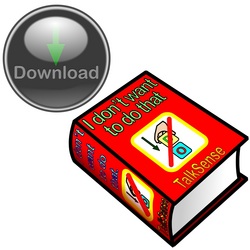
It is possible to make individual images and individual words speak within PowerPoint. It is not that difficult to do.
The book illustrated below was created using PowerPoint. In the Poweroint version (which you can download for free by clicking on the image left) clicking on the symbols causes them to speak. Clicking on the words causes them to speak. Clicking on a blank area of the page causes PowerPoint to read the whole sentence. Clicking on the hands moves either backwards and forwards through the book.
Please note that the images below do NOT speak and are merely a guide to the 'I don't want to do that book'. The book can be downloaded and used for free for non-commercial purposes by clicking on the image to the left above. If you have any trouble with the downloaded book, please contact me.
To add a sound to a picture or a word in PowerPoint:
- Click on the object/image/text to which you wish to add a sound.
- Locate the Action Settings window. It is in the INSERT menu in PowerPoint 2007. An action can be added to a shape or object.
- If ACTION is unavailable (greyed out) then it is not possible to add a sound to the item selected. In this instance you must:
- Place a shape over the top of the object and add the action to the shape.
- Do not worry that the shape obscures the object.
- The added shape can be a square even if the object is round so long as it covers/masks the original.
- The added shape can then be made completely transparent such that the object can be seen again:
- Right click on the shape.
- Select Format then Fill options.
- Adjust the transparency to 100%.
- Set the line colour to No Line. The outline of the shape will still be visible in edit mode with which to to work.
- In the Action Settings window there is a feature called Play Sound. In this, it is possible to navigate and select a sound
- The sound should be a .wav as PowerPoint is designed to work with this format. You can convert other sound formats to wavs.
- The sound can be added as a mouse click or a mouse over to the selected object or shape.
- There are a few ways to create a sound file for a word or a sentence if you do not have one:
- you can record it yourself.
- you can use a TTS system to create the sound and record it;
- you can search to see if the sound is available from the internet for download.
- When PowerPoint is run, clicking on the shape/object will cause it to play the sound file.
It is best to play around with text and shapes in a test version to gain confidence before attempting to work on a full PowerPoint presentation.
- Click on the object/image/text to which you wish to add a sound.
- Locate the Action Settings window. It is in the INSERT menu in PowerPoint 2007. An action can be added to a shape or object.
- If ACTION is unavailable (greyed out) then it is not possible to add a sound to the item selected. In this instance you must:
- Place a shape over the top of the object and add the action to the shape.
- Do not worry that the shape obscures the object.
- The added shape can be a square even if the object is round so long as it covers/masks the original.
- The added shape can then be made completely transparent such that the object can be seen again:
- Right click on the shape.
- Select Format then Fill options.
- Adjust the transparency to 100%.
- Set the line colour to No Line. The outline of the shape will still be visible in edit mode with which to to work.
- In the Action Settings window there is a feature called Play Sound. In this, it is possible to navigate and select a sound
- The sound should be a .wav as PowerPoint is designed to work with this format. You can convert other sound formats to wavs.
- The sound can be added as a mouse click or a mouse over to the selected object or shape.
- There are a few ways to create a sound file for a word or a sentence if you do not have one:
- you can record it yourself.
- you can use a TTS system to create the sound and record it;
- you can search to see if the sound is available from the internet for download.
- When PowerPoint is run, clicking on the shape/object will cause it to play the sound file.
It is best to play around with text and shapes in a test version to gain confidence before attempting to work on a full PowerPoint presentation.
Idea # 66: Switch accessible books with the BookWorm
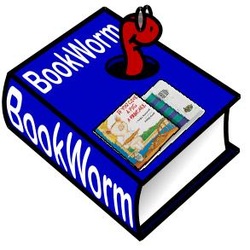
The Bookworm device is available from AbleNet (and AbleNet distributors). The initial version has currently been discontinued but there might be some still available from distributors (look/ask for bargains on this model!). A new version of the bookworm will be available in late 2011/ early 2012.
The bookworm device allows:
- a children's book to be inserted;
- the device to be programmed such that the book can read out page by page;
- the page readings to be accessed by a switch.
Using the Bookworm, a Learner who has never read before can read a story to a group even if they are using a switch. The only (small) drawback is that someone will have to turn the pages of the book (if Learner is using a switch to access the Bookworm). However, another child from the group can be tasked to assist in this matter such that Learners are collaborating.
For Learners who are abe to turn the pages of a book by themselves, the Bookworm is a fabulous way of bringing books to life and giving children independence. It also frees up a ittle time for busy staff!
Idea # 67: Accessible books with the Reading Time Communicator
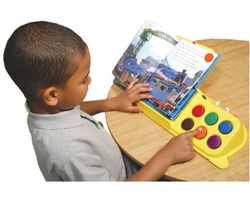
The 'Reading Time Communicator' is a system available from Enabling Devices.
It permits a Learner tolListen to his/her favorite stories indepently! Enabling Devices have developed a fun and exciting way to promote early reading skills by:
- clipping a book onto the communicator and ...
- recording each page of text using the six built-in mini-gumball switches. Then ...
- placing a coloured sticker to each book page to correspond to the colored switches.
- If the book has more than six pages you continue the story on the next level.
To hear the story, the Learner activates the switch that matches the sticker on the page.
At Approximately $200, the RTC is a great way to make books accessible to all.
It permits a Learner tolListen to his/her favorite stories indepently! Enabling Devices have developed a fun and exciting way to promote early reading skills by:
- clipping a book onto the communicator and ...
- recording each page of text using the six built-in mini-gumball switches. Then ...
- placing a coloured sticker to each book page to correspond to the colored switches.
- If the book has more than six pages you continue the story on the next level.
To hear the story, the Learner activates the switch that matches the sticker on the page.
At Approximately $200, the RTC is a great way to make books accessible to all.
Idea # 68: Pen accessible books with Voice Ink

VoiceInk™ software provides a quick and easy way to turn any Microsoft Word document, PowerPoint File, Webpage, .rtf or .txt file into sound enabled paper or to put your creation onto an iPad..
There are three easy steps to creating your own sound enabled paper:
·
- Create or Select a (Word) file; ·
- Import it into VoiceInk;
- Print the file from VoiceInk OR export your file to an iPad (no V-Pen is necessary with the iPad)
If this page were to be printed using the patented VoiceInk (VI) technology, every word could be spoken out, right from the page, using the V-Pen system. Furthermore, any drawing, picture or photograph that is printed can also have a sound file attached after importing into Voice Ink.
Thus, any part of the printed page can be brought to life. When a VI file is printed with a standard colour laser printer, the paper is able to speak, play music, sing songs, provide sound effects, ...
In other words, with VoiceInk you can:
- Create sound enabled learning support materials;
- Read books;
- Produce paper based communication systems (although Voice Symbol is the better tool for this);
- Establish hot-spotted images on paper;
- Make talking labels;
- Generate talking and singing anniversary cards.
- Link from the paper directly to a web site (to define or illustrate a particular word for example).
- Create resources that can be transferred and used with an iPad.
Indeed, there are potentially thousands of uses for the VI technology. However, if you want to create an AAC system, you would probably be
better served using the alternative Voice Symbol™ system.
Although you can import a scanned image into VI, VI will treat it as a single image and will not recognised any scanned text. The text must be typed into Word and then images added such that the Word document is either an original or a copy of the desired book. It is to be stressed that the copy is to make the book accessible only and therefore a book must have been purchased for each copy made. Once such Word documents are imported into VI, the sound files are automatically added to text. If you wish to add a sound file to an image then, this must be done manually within VI.
Note: It is possible to buy some pen accessible books (complete with pens) that have been pre-printed. However, you will be limited to the range produced by the publishers. The beauty of VI is that you are able to do it yourself. Voice Ink is available from Ability World in the UK. There are also agents in America, Australia, New Zealand, and Hong Kong. Please contact TalkSense if you require further details.
Idea # 69: Create your own books together with the Learner (1)

The Learner should be fully involved in the creation of motivating materials that can be utilised for the Learning of Literacy. To do this, you might ask the Learner to draw a picture, or find an image in a magazine (of anything that s/he likes or wants to use), or choose a symbol, or point out an object that s/he finds particularly motivational.
Whatever the Learner selects is the first thing that is pasted into your book together. If the Learner can do it him/herself then great; if not, assist him/her to do it. The next stage is to ask the Learner for a single word to go with the image that has been selected and pasted. Hopefully, it will be name of the item depicted or, at least, something to do with it but it is not inconceivable that some Learners may select a word that has no connection whatsoever to the image!
Two things arise:
- the Learner who cannot speak may use any means at his/her disposal or at your disposal (together);
- if the word selected is unconnected it does not matter! It is the Learner's book and not yours.
Print the word in large clear lower case letters. Cut out and laminate and attach self adhesive Velcro hook strip to rear. Get the Learner to attach it under the image in the book on page one. Make two copies of the word in this way. Point out how the word is made of the individual letters and find ways of making the word from its components with which the Learner can play: for example, make the word out of scrabble tiles (or similar) and assist the Learner to create it anew several times. Challenge the Learner to create the word him/herself. If physical condition prevents the learner from manipulating the letters then let the Learner control your actions and be sure to do just as the Learner 'instructs' even if the result id not the word in question. The tiles can be shuffled and placed far apart. The Learner then can indicate by looking which is the letter to be used. Do NOT make comment until the final letter is in place and then ask if the word so made spells 'dog'. To begin the example word in the book can be on display as a model from which the Learner can copy. Later, the Learner can try the task without this assistance. Notice if the Learner looks to the book for guidance by him/herself (it is a good strategy and demonstrates logical thinking!) rather than simply telling the Learner to use the book as a guide.
Ask the Learner to pick another image and another word and another image and repeat the exercise. We can now ask the Learner to discriminate between the two words by placing them on the table top and asking the Learner to indicate a named word. Hopefully, the Learner will be able to do this. If not return to the exercises above and continue to reinforce the knowledge of the selected vocabulary items until success is forthcoming.
Continue until you have four pages and four words. Repeat the above process for each of these words. Print out the words separately from those now in the book. Place the four words on the table top in front of the Learner. Ask the Learner to locate/indicate which of the words says 'xxxx' (the very first word selected. Can the Learner do this? Hopefully the answer is yes. However, if the Learner gets it incorrect, it really does not matter, it only require more work and more reinforcement of the shape and construction of the word using the above methodologies and/or any other suitable ideas that you may have. One idea would be to reduce the options back to just two and try again. Of course, there is a 50% chance of being right in this scenario but if the Learner can do it on more than one occasion then we can add a further distractor to the mix. When the Learner gets it correct there should be lots of praise. If the Learner gets it wrong then there should be NO criticisms or exasperation!
Continue until you have four pages and four words. Repeat the above process for each of these words. Print out the words separately from those now in the book. Place the four words on the table top in front of the Learner. Ask the Learner to locate/indicate which of the words says 'xxxx' (the very first word selected. Can the Learner do this? Hopefully the answer is yes. However, if the Learner gets it incorrect, it really does not matter, it only require more work and more reinforcement of the shape and construction of the word using the above methodologies and/or any other suitable ideas that you may have. One idea would be to reduce the options back to just two and try again. Of course, there is a 50% chance of being right in this scenario but if the Learner can do it on more than one occasion then we can add a further distractor to the mix. When the Learner gets it correct there should be lots of praise. If the Learner gets it wrong then there should be NO criticisms or exasperation!
You will note that the above set of words only differs by one letter from the source word (dog) and thus it becomes a more difficult task for the Learner to pick out the correct one. Do not start at this level! Make the other words completely distinct to begin and only with success increase the difficulty. The task can be done with scrabble tiles (as above) or with the printed and Velcroed strips or with any other means of presenting the word choices that works for the Learner.
Idea # 70: Create your own books together with the Learner (2)

Return to Image One, Page One. Let's assume it is a noun. If the word selected was the name of the image then we can ask the Learner to tell us one thing (one word) about the image/word. Suppose the image/word is a dog. The Learner might say 'brown' or 'bark'. We can now repeat the actions of section one (above) by adding the word 'brown' to the page and working on its construction and recognition. We can also put the words together as in 'brown dog'. We can ask the Learner to find the multi- word 'brown dog' from among other two word forms.
Of course, it may not have been a noun; it may have been a verb. Let's assume it was a picture of a person running and word chosen was 'run'. We might ask the Learner to state to 'where' is the person running or we might ask 'how' or 'why'. Again, we are looking for a second word which will help the Learner to tell the story behind the picture.
What is the first word selected has no connection to the picture? Let's assume the word selected was 'food' and the image is of a shoe. The Learner has to elect just one and to say one thing about. It could be 'bad' (food) or 'big' (shoe) or 'eat' (food) or 'wear' (shoe), etc. If it is the image, we have yet to add the word to the page and, at this point, we must. If it isn't the image, we can return to it later!
Adding the new words to the book does not only increase the vocabulary for each of the pages but also begins to deal with word order. For example, 'brown dog' is correct but 'dog brown' is not. We can use the above strategies to work on both brown and dog both as separate words and as words in partnership such that the Learner can pick out 'brown dog' from among 'brown shoe' and 'dog brown' ...
Of course, it may not have been a noun; it may have been a verb. Let's assume it was a picture of a person running and word chosen was 'run'. We might ask the Learner to state to 'where' is the person running or we might ask 'how' or 'why'. Again, we are looking for a second word which will help the Learner to tell the story behind the picture.
What is the first word selected has no connection to the picture? Let's assume the word selected was 'food' and the image is of a shoe. The Learner has to elect just one and to say one thing about. It could be 'bad' (food) or 'big' (shoe) or 'eat' (food) or 'wear' (shoe), etc. If it is the image, we have yet to add the word to the page and, at this point, we must. If it isn't the image, we can return to it later!
Adding the new words to the book does not only increase the vocabulary for each of the pages but also begins to deal with word order. For example, 'brown dog' is correct but 'dog brown' is not. We can use the above strategies to work on both brown and dog both as separate words and as words in partnership such that the Learner can pick out 'brown dog' from among 'brown shoe' and 'dog brown' ...
Idea # 71: Create your own books together with the Learner (3)
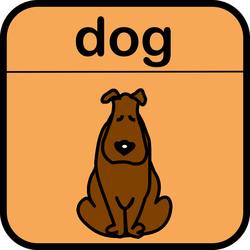
The Learner may have used his/her AAC system to select a word and, if so, there is no real need to teach where the word is located within the system. However, if the Learner did not use the AAC system for some of the words then it is an ideal opportunity to:
- teach/reinforce the concept;
- teach the word recognition;
- teach the spelling;
- teach the symbol
- teach the location within the AAC system.
The symbol and its word can also be produced as a card that can positioned in the book. The symbol and word could be produced as detachable parts such that it becomes a resource for further work. The symbol could be produced with or without colour coding depending upon the needs of the individual Learner.
- teach/reinforce the concept;
- teach the word recognition;
- teach the spelling;
- teach the symbol
- teach the location within the AAC system.
The symbol and its word can also be produced as a card that can positioned in the book. The symbol and word could be produced as detachable parts such that it becomes a resource for further work. The symbol could be produced with or without colour coding depending upon the needs of the individual Learner.
Note that it is possible to purchase ring binders and to use Velcro friendly materials for the pages. Such pages are likely to last longer if being accessed by Learners experiencing physical disabilities and also make it relatively simple to attach the images, words and symbols. In the UK, such systems can be purchased from Ability-World. In the USA they can be purchased from Augmentative Resources.
Books produced in this way become extremely useful resources to assist Learners in all manner of future work. Everything is detachable and re-usable.
Books produced in this way become extremely useful resources to assist Learners in all manner of future work. Everything is detachable and re-usable.
Idea # 72: Create your own books together with the Learner (4)
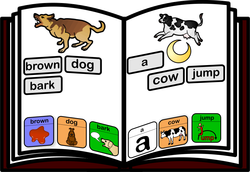
As can be seen, eventually, the words in the book expand. There may only be a few words but they might be used with other words to form new meanings that the Learner ought now to be able to read and, if s/he has a SGD (Speech Generating Device), say. For example, just using the image above, we could generate 'dog jump' and 'brown cow' and even 'brown cow jump dog'!
Note that I have not used the different forms of the verb (jump, jumped, jumps, jumping) as this adds an extra dimension for which the Learner may not yet be ready. At some point we might create verb-ending cards (at least for regular verbs) such that we can teach the Learner 'jump-ed', 'jump-s', 'jump-ing', and 'jump-en' (yes, I know there is no such word!).
However, the next stage is to increase the number of words from two to three on each page by a repetition of the same process as detailed above. Again, it is the Learner that suggests words that can be added to the beginning, end, or even in-between the existing words...
one brown dog, some brown dog(s), brown dog bark, brown dog run, ...
the cow jump, cow jump over, big cow jump, and cow jump, ...
What if the Learner picks a word that does not fit? That is a problem! However,
- you have at least four pages and perhaps the new suggestion will fit well on one of those.
- The word will probably work if you were to suggest another word or words to add in addition (brown dog bike) ... (brown dog
chase bike)(Brown dog ride bike)(Brown dog saw a bike).
In other words, whatever the Learner selects is made to fit into the scheme such that the Learner is central to the book's creation.
Note that I have not used the different forms of the verb (jump, jumped, jumps, jumping) as this adds an extra dimension for which the Learner may not yet be ready. At some point we might create verb-ending cards (at least for regular verbs) such that we can teach the Learner 'jump-ed', 'jump-s', 'jump-ing', and 'jump-en' (yes, I know there is no such word!).
However, the next stage is to increase the number of words from two to three on each page by a repetition of the same process as detailed above. Again, it is the Learner that suggests words that can be added to the beginning, end, or even in-between the existing words...
one brown dog, some brown dog(s), brown dog bark, brown dog run, ...
the cow jump, cow jump over, big cow jump, and cow jump, ...
What if the Learner picks a word that does not fit? That is a problem! However,
- you have at least four pages and perhaps the new suggestion will fit well on one of those.
- The word will probably work if you were to suggest another word or words to add in addition (brown dog bike) ... (brown dog
chase bike)(Brown dog ride bike)(Brown dog saw a bike).
In other words, whatever the Learner selects is made to fit into the scheme such that the Learner is central to the book's creation.
Idea # 73: Create your own books together with the Learner (5)

The next stage is to get the Learner to turn the words into short but complete sentences such that each page will read as a whole. In this way we are not simply remaining with just nouns but may introduce all classes of words... "A big brown dog bark(ed) at the woman". "A cow jump(ed) over the moon"
At each stage, it is important to integrate the work with the use of the Learner's AAC system either in selecting the vocabulary or in teaching where the vocabulary is to found within the system. If the items of vocabulary are not already stored in the Learner's system then it is important to store them. However, the system should not be simply taken away and the vocabulary stored but rather the Learner should be completely involved in that process too: it is another Learning opportunity!
The result is a book that the Learner can read by him/herself and, if the words are taken and put together in new ways, the Learner should still be able to read it out aloud!
At each stage, it is important to integrate the work with the use of the Learner's AAC system either in selecting the vocabulary or in teaching where the vocabulary is to found within the system. If the items of vocabulary are not already stored in the Learner's system then it is important to store them. However, the system should not be simply taken away and the vocabulary stored but rather the Learner should be completely involved in that process too: it is another Learning opportunity!
The result is a book that the Learner can read by him/herself and, if the words are taken and put together in new ways, the Learner should still be able to read it out aloud!
Teaching Letters and Phonological Awareness Skills
Idea # 74: Create your own A,B,C symbol set
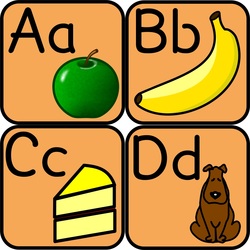
It's a nice idea to create your own A,B,C symbol set that use everyday items to illustrate letter - word correspondence easily for the Learner.
Be sure to use common words that the picture of which the Learner will immediately recognise. It's no use using zi s for zuchini f the Learner has no idea what a zuchini is! Don't use silent letter forms for example - K is for Knife / knee / know. Everyday indigenous animals (but not things like octous or kangaroo unless the Learner does already know these things), external body parts, common household parts and items, everyday food, colour names, etc are all good items.
This is an invaluable resource for literacy learning and can be used again and again so it is worth spending some time creating. Printed symbols should be onto card and laminated for extra protection. If you would like the symbols below then please contact me and I will send them to you for free.
An example set of symbols is produced below. It is NOT designed to be definitive, you are free to use your own ideas: adopt, adapt or reject as you see fit.
Be sure to use common words that the picture of which the Learner will immediately recognise. It's no use using zi s for zuchini f the Learner has no idea what a zuchini is! Don't use silent letter forms for example - K is for Knife / knee / know. Everyday indigenous animals (but not things like octous or kangaroo unless the Learner does already know these things), external body parts, common household parts and items, everyday food, colour names, etc are all good items.
This is an invaluable resource for literacy learning and can be used again and again so it is worth spending some time creating. Printed symbols should be onto card and laminated for extra protection. If you would like the symbols below then please contact me and I will send them to you for free.
An example set of symbols is produced below. It is NOT designed to be definitive, you are free to use your own ideas: adopt, adapt or reject as you see fit.
Idea # 75: ABC ... Accentuate Basic Characters
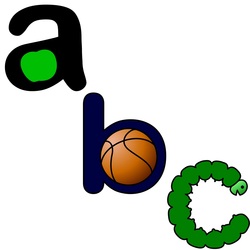
It is possible with a bit of patience and a little skill to draw the letters of the alphabet as characters; to accentuate them such that the drawings each start with the sound of the letter to help the Learner. Once again the set below is not meant to be definitive and you may think that you can improve on many of the ideas illustrated. For example, you may want to create the letter b out of a bat (for the upright and a ball for the circular component. If you would like this set of accentuated alphabet symbols just e-mail and ask using the form at the bottom of the page.
Where the Learner is already accustomed to a particular symbol set, try to accommodate the symbols into the accentuated set so that recognition is almost instantaneous. Otherwise try to use items already known to the Learner such that s/he feels immediately at home with the
Idea # 76: Create an AAC: Alphabetic Advent Calendar

Yes, I know Advent calendars are for Christmas! However, this is an all year round Advent Calendar type approach to letter learning. The idea is a to create an Advent Calendar with (at least) 26 'doors' (one for each letter of the alphabet (or more doors if you want to include common blends such as 'sh' or 'ch' etc). On each door is a letter of teh alphabet. Behind each door is a familiar object (familiar to the Learner) that starts with the letter. Thus, opening the door, reveals something that starts with the letter.
Open each door slowly and ask the Learner to guess what s/he thinks is behind the door. You can have a small favourite treat ready if they get it correct!
To make an AAC you will need two large pieces of card (coloured or white to suit your tastes), a pencil, a large steel rule, some glue or double sided adhesive tape, and a very sharp craft knife.
First you have to mark out your doors as a grid onto each piece of card in exactly the same position. I'll leave the math(s) for you to consider! Try to make the doors as big as possible. Once marked, the second sheet can have each picture attached ... you can use photographs printed from the web, symbols, pictures from magazines etc. Be sure to use objects that are familiar to the learners. If you want to re-use the system and make it even more flexible you can use velcro tabs so that you will be able to change the pictures behind the doors easily if you so wish.
You may wish to laminate the door card before you begin cutting out the doors to protect your work and make it last that bit longer. Cutting round the three sides of the doors will take some time. Be sure to use a very sharp craft knife and a steel rule that you can use as a guide. I should not need to tell you to keep your fingers out of the way of the blade. Be Sure to cut only three sides and ensure that the uncut 'hinge' is on the same side (typically the left) on each occasion. You can lightly score the final fourth 'hinge' side and using a rule bend the flap back and forth to make the door open and shut. You will need to stencil, print, or otherwise mark each door with a separate letter or letter combination.
The final stage is to marry the front card (doors) to the back card (pictures) using either glue or double sided adhesive tape.
Be sure to use common words that the picture of which the Learner will immediately recognise. It's no use using zi s for zuchini f the Learner has no idea what a zuchini is! Don't use silent letter forms for example - K is for Knife. Everyday indigenous animals, external body parts, common household parts and items, everyday food, colour names, etc are all good items.
For example:
A is for apple, B is for ball, C is for cat, D is for dog, E is for egg, F is for foot, G is for girl, H is for hand, I is for ice, J is for jacket,
K is for key, L is for light, M is for man, N is for nut, O is for orange, P is for pig, Q is for queen, R is for rabbit, S is for soap,
T is for toe, U is for umbrella, V is for van, W is for window, X is for xylophone, Y is for yellow, Z is for zip
Idea # 77: Make Use of Nursery Rhymes

There are lots of Nursery Rhymes out there that can be used to teach literacy. Furthermore, it should be a simple matter to mrecord your own MP3s to use on a communication aid. The Rhyme could be recorded a line at a time and as a whole such that the Learner can speak the Rhyme line by line and as a whole.
A knowledge of rhyme is important in learning to read.
Some ideas:
- Can you guess the Nursery Rhymes illustrated below? The titles could be stored in an AAC system and the Learner be asked to match tile to image.
- Say a rhyme but miss out a word. Can the Learner name the missing word?
- Store the rhymes line by line: Facilitator says a line then the Learner says a line ...
- Put the Rhymes in alphabetical order.
- What numbers go with the Rhymes? Learn the words for numbers.
- What colours go with the Rhymes? Learn the words for colours.
- What animals go with the Rhymes? Learn the words for animals.
A knowledge of rhyme is important in learning to read.
Some ideas:
- Can you guess the Nursery Rhymes illustrated below? The titles could be stored in an AAC system and the Learner be asked to match tile to image.
- Say a rhyme but miss out a word. Can the Learner name the missing word?
- Store the rhymes line by line: Facilitator says a line then the Learner says a line ...
- Put the Rhymes in alphabetical order.
- What numbers go with the Rhymes? Learn the words for numbers.
- What colours go with the Rhymes? Learn the words for colours.
- What animals go with the Rhymes? Learn the words for animals.
Idea # 78: Create your own Nursery Rhymes
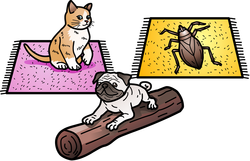
It's important that kids learn that certain groups of letters make similar sounds in different words. One way os doing this is through the use of Nursery Rhymes. It is possible to use exisiting nursery rhymes of course and there are a lot of resources on the web but it may be much more fun for a Learner and a Facilitator to make up their own little rhymes.
For example, here are a few I made and illustrated:
Nat the cat,
Sat on the mat,
And Hug the bug,
Lay on the rug,
But Pog the Dog,
Hogs the log!
For example, here are a few I made and illustrated:
Nat the cat,
Sat on the mat,
And Hug the bug,
Lay on the rug,
But Pog the Dog,
Hogs the log!
|
Jen The Hen Jen the hen, Got out of her pen, But I do not know when, Nor do I ken, How she did it again, It’s now more than ten! What Have You Got? What have you got? I have not got a lot, Not a pan or a pot, Nor plan or a plot, And I’ll tell you what… I don’t care a jot! Noah Met A Boa Noah met a boa, while walking down the street. Said the Boa to Noah, “Are you good to eat?” Said Noah to the Boa, “I can’t say that I am.” Said the Boa to Noah, “Ok, I’ll have some jam!” |
Idea # 79: Teach Lower Case before UPPER case
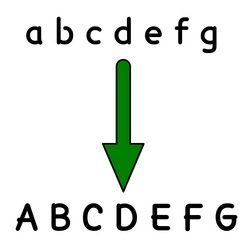
As most words that the Learner will encounter in books and in their communication system are lower case it is a good idea to begin by teaching lower case letters. So the rule is:
i before E except after litera- C!
This is also one of the reasons why text labels on communication boards and in communication systems should be in lower case.
Idea # 80: Teach the most frequently used letters first
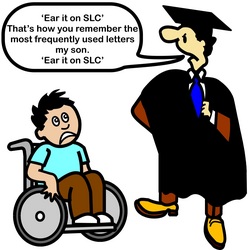
According to Douglas Carnine and others (Carnine, D., Silbert, J., & Kameenui, E. (1997). Direct
Instruction reading (3rd ed.). Upper Saddle River, NJ: Prentice Hall) we should be:
- teaching the most frequently used letters first;
- teaching the letters that are the most dissimilar first;
- teaching short vowels before long vowels (see below)
What are the most frequently used letters?
In the three columns below are listed the relative frequencies for the occurences of the letters in the English language. The first column lists the letters in order of frequncy (highest first). The second column lists the percentage makeup of the letter as a total of the whole when rounded up or down to the nearest whole number (except for the final four). The third column provides the frency of each letter when compared to that of the lette Q which is set at one. Thus, the letter e is 57 times more likely to occur in any given piece of text than q or, to put it another way, there will be 57 letter 'e' for every single 'q' in any given piece of text.
|
LETTER
e a r i o t n s l c u d p m h g b f y w k v x z j q |
|
However, the table has a flaw! It was calculated by taking all the words in OED and then figuring out the letter use. That would be perfect if we used all the words in the OED equally but we already know that we do not do that: some words are used much more frequently that others. The word 'the' is used much more frequently than 'episodic' for example. It word therefore be better to take the texts of several newspapers, books, magazines and transcriptions of spoken conversations and analyse those for the frequency of the letters. However, I was unable to find any web site which listed the alphabet in this way. If you know of one ... please contactt me! However, it will probably be very similar to the
above listing although some letters may swap with their neighbours.
Which are the most dissimilar letters?
a m t s i f d r o g l h u c b n k v e p w j y x z q
In other words, try to choose words with distinct lettering to teach before introducing words that use letters (such as b and d) which are very similar.
Idea # 81: Build your own sound effects collection.
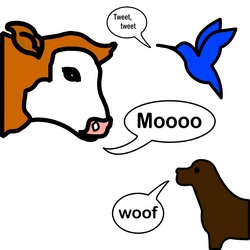
A sound effects collection is a great resource. It is possible to purchase collection of sounds as .mp3 files. Often your local PC store may have a rack of CDs among which may be lurking a collection of sounds at a very cheap price. Sounds can come in handy for doing all sorts of things and are great for adding to Powerpoint presentations to enhance the effect.
Look out (listen out) for sound effects on the internet. Some sites offer free downloads of sound effects for non-commercial use (search for 'free sound effects'). Start building a bank of sound effects for the future right now!. You can even make and record your own sound effects as a session's fun activity. Getting Learners to work with and appreciate the differences between sounds is an important precursor to distinguishing between the sounds of the letters of the alphabet (see idea below).
Idea # 82: Ensure the Learner has sound discrimination

Is the Learner able to discriminate between sounds? Are you certain? Here is something you can do to test.
1. Obtain recordings of typical sounds from the environment. It is a great idea to collect
sounds as .mp3 files on your computer for future use as in the previous idea.
2. Ensure they are very distinct for example:
- a cat meowing
- a car engine
- a bird singing
- a dog barking
- a person whistling
- a drum drumming
- an egg frying
- water from a tap
3. Find symbols or photographs or cuttings from magazines to go with each sound.
4. Play the sound to the Learner.
5. If the learner is able to point and select ask the Learner to pick the sound from the set of available choices. be careful NOT to give cues
to the correct answer by looking at it , for example.
6. If the Learner cannot physically select the answer for him or herself, get another member of staff involved (Staff member B).
Staff member 'A' plays the sound to the Learner while staff member 'B' is out of the room. Staff member 'b' is called into the room.
Staff member B's task is to present the images one by one to allow the Learner to select from among them. Can the Learner select
the correct picture to go with the sound s/he has just heard? Staff member B cannot give any unintentional cues to the answer as
s/he did not hear the sound that was played.
A Learner who cannot discriminate between such sounds is unlikely to be able to discriminate between the letter sounds of the alphabet. It may be that the Learner has a hearing loss in a certain frequency range and, as such, there may need to be some remedial intervention undertaken in advance of any further work. For example, a hearing aid may be required. Some Learners may need to use strategies such as 'feeling' the sounds coming out of a teacher's mouth, so that they can produce the same sounds from their own mouths (by placing their hands in front of their mouths and feeling the sensations). There are also computer programs which display a visual representation of sounds on the screen so that children can learn to produce the same sound by matching the shapes. In addition there are games that can be played on the computer by producing sounds.
Idea # 83: Teach letter-sound and sound-letter correspondence to automaticity
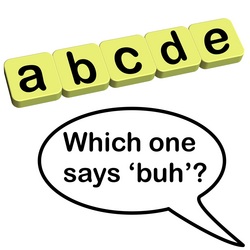
Not only should learners be able to recognise the letters by name they should also be able to pick out the letters from thier sounds and their sounds from the letters.
If a child cannot speak, s/he will not be able to produce the letter sounds. However, AAC devices (SGDs) should be able to do so. It is therefore worthwhile storing the sounds in an SGD on a page specifically constructed for that purpose. You may need to use the phonetic capabilities of the system's speech synthesiser to do this. If the SGD has a recording facility, it may be easier to record the sounds into the system.
If the Learner is able to cope with a greater number of cells on a single board/page then the letters can be duplicated just to give the letter names. The two sets on the same page would have to be distinguished in some way... perhaps by colour encoding or by the addition of an ear symbol to one set (see examples below) or by some other methodology. If the Learner is not capable of coping with so many things on a single page then, the two sets can be stored on separate boards and pages.
It is important that the Learners are able to discriminate between different sounds which is why the previous idea preceded this one!
There are lots of ways you might choose to do assist Learner to improve their knoweldge and skills in letter / sound relationships:
- use 'Scrabble' tiles (for example) as ready made tangible letter forms from which a Learner might select as you say the sound...
" which one says 'buh' as in 'bun'?"
- Create a page of items in Voice Symbol each of which begins with a different sound from the alphabet. Do not use text labels!
Record the initial letter sound sounds into each.
Print out. Cut into separate sections and laminate.
Now create a set of initial letters. Record the NAME of the letter into each.
Print, cut and laminate.
Now the learner can pair the sounds with the letters.
If a child cannot speak, s/he will not be able to produce the letter sounds. However, AAC devices (SGDs) should be able to do so. It is therefore worthwhile storing the sounds in an SGD on a page specifically constructed for that purpose. You may need to use the phonetic capabilities of the system's speech synthesiser to do this. If the SGD has a recording facility, it may be easier to record the sounds into the system.
If the Learner is able to cope with a greater number of cells on a single board/page then the letters can be duplicated just to give the letter names. The two sets on the same page would have to be distinguished in some way... perhaps by colour encoding or by the addition of an ear symbol to one set (see examples below) or by some other methodology. If the Learner is not capable of coping with so many things on a single page then, the two sets can be stored on separate boards and pages.
It is important that the Learners are able to discriminate between different sounds which is why the previous idea preceded this one!
There are lots of ways you might choose to do assist Learner to improve their knoweldge and skills in letter / sound relationships:
- use 'Scrabble' tiles (for example) as ready made tangible letter forms from which a Learner might select as you say the sound...
" which one says 'buh' as in 'bun'?"
- Create a page of items in Voice Symbol each of which begins with a different sound from the alphabet. Do not use text labels!
Record the initial letter sound sounds into each.
Print out. Cut into separate sections and laminate.
Now create a set of initial letters. Record the NAME of the letter into each.
Print, cut and laminate.
Now the learner can pair the sounds with the letters.
Idea # 84: Teach short vowels before long vowels
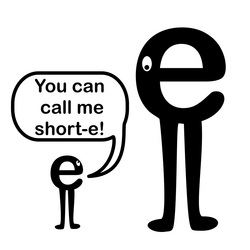
The long ape gave a short act
I bet short are nicer than long wheel-bases
It is short when ice lasts long
Only long for a short pot
I long to use short cups
Short first long later.
Idea # 85: With what letter does it begin?
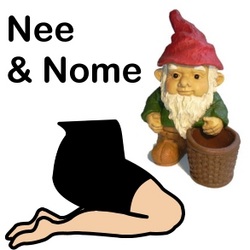
When a learner makes a choice in the course of a day. We can start to ask,. 'With what letter does that choice begin?'
Tea or coffee? Coffee. Do you know with what letter 'coffee' begins?
Make it into a sort of a game. At every opportunity ask for the beginning sound/letter.
Of course, there are some tricky silent letters to get used to as the image (left) suggests but unless Learners start to practice they never will master the skill.
As an awareness of sound letter correspondence is an inmpotant part of literacy, teaching phonological skills is vital. We must do all we can to make Learners aware of the letters of the alphabet, their names and their sounds as well as the sounds of thier blends. Below are a number of ideas to assist with this process.
Idea # 86: Assisting the Learner with Initial Phonemes
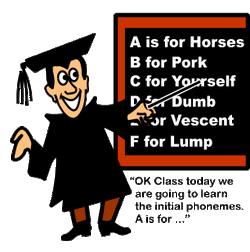
In the teaching of phonological awareness, an idea is to produce four (choose a suitable number) symbol and text cards (using Voice Symbol): for example, Apple, Ball, Cup and Dog.
We then might ask the Learner to point to the symbol that begins with a ‘b’ sound.
The Learner has a one in four chance of getting the answer right accidentally but, continual correct responses, indicate a good understanding of phoneme word correspondence.
At a later stage, we can increase the size of the font on the symbols and reduce the picture cue and repeat the exercise. Eventually we can fade the picture cue altogether leaving just the text from which the Learner must select.
Although three stages are depicted below, the number of stages between the initial smaller text/ larger symbol to the larger text / smaller symbol and the large text / no symbol will very much depend upon the Learner. It could be many more than three. Some Learners may be unable to complete the task once the symbols have been removed altogether and we may have to go back a stage and reduce the symbols in size even further until the Learner is cueing from the text alone.
The symbolschosen and used should be all things of which the Learner is aware: there is no intent to ‘test’ the Learner with complex word forms of which s/he has probably never heard, let alone, comprehends. Using Voice Symboll, the resources are easy to create and then subsequently, using the the V-Pen, the Learner can not only indicate a symbol but, also, say the name of the symbol in question. However, the symbols produced will work equally as well with or without the use of the V-Pen.
Idea # 87: Play Alphabet Symbol Bingo
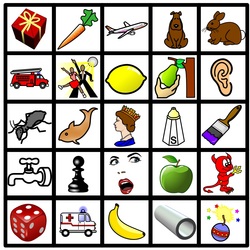
This is a game of Bingo with a twist! Instead of numbers, initial sounds/letters are used. The caller calls out the initial sounds at random. The Learners have to cover those symbols that they can find which begin with that letter (an alternative would be contain the letter or end with the letter).
The boards can be full as in the image or have a lesser number of cells to make it simpler. As these are basically communication boards, they can easily be constructed with the software that you use to make your communication boards (Voice Symbol, Board Maker, etc). You can either build the boards with the text label or without the text label, as you wish.
It is up to you how tough you make the game! For example, if you call out 'P' and they choose to cover the aeroplane because they are calling it a 'plane'. You can insist that the name of the symbols are the names of the symbols as they ae found in the Learners communication systems OR say that, as long as the Learner can justify why s/he has covered a particular symbol, it is OK. Thus, the dice could be 'dice', 'four', 'red', 'game', ... The paintbrush could be 'paintbrush', 'purple', 'brush', 'art', ... It all makes for fun and learning those initial letters!
Idea # 88: Create Symbol Alpha-Boards

There are lots of 'A is for Apple' type books out there that can be readily purchased from bookstores across the world. This idea takes that approach and create your own Alpha-Book BUT comprised of the symbols found in and around the school and the Learner. The symbols selected for inclusion should be:
- meaningful to the Learner (things s/he encounters daily);
- limited in number per page according to the cognitive level of the Learner;
- of a length set by the Learenr's current Literacy Level;
- the same as the symbols used or will be used for any AAC system;
- not confined to nouns but include items from other parts of speech.
The Learner can even help to choose the tiems that go on the boards:
- a selection of symbols beginning with different letters could be placed out on the table;
- the Learner could be asked/helped to find the ones s/he likes beginning with ...
- the chosen symbols can be put to one side to form the board.
Idea # 89: Communication Carpet Choice Columns
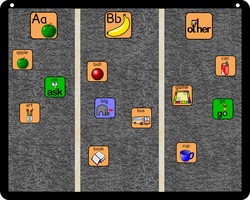
Take a set of symbols which are used or will be used for the Learners AAC system and present the symbols to the Learner one by one. Ask the Learner into which column the symbols should go. On a communication carpet are three columns: A B OTHER (it could be any two letter of your choice with OTHER). The Learner has to sort the symbols by initial sound so that they can be placed on the communication carpet.
Initially the task can be undertaken with symbols that have clear text labels to assist the Learner. However, eventually the task should be performed with the labels removed or covered so as to ensure that the Learner is:
- correctly identifying the symbol;
- selecting the initial sound of the symbol name;
- choosing the correct column into which to put the symbol.
Initially the task can be undertaken with symbols that have clear text labels to assist the Learner. However, eventually the task should be performed with the labels removed or covered so as to ensure that the Learner is:
- correctly identifying the symbol;
- selecting the initial sound of the symbol name;
- choosing the correct column into which to put the symbol.
Idea # 90: Ask Anyone About Alliterative Accounts And Always Attend Answers Assiduously!

Big Bee buzzed by
Cool Caterillars Could Crawl Creepily
David's Dog Dances Differently
Eight Energetic Elephants Easily Eat Enormous Eggs
Five Foxes Found Four French Fries Friday
Giant Giraffes Go Gambling!
Hungry Hippos Have Huge Heads!
If Ill Iguanas Itch, Ivan Is implicated
Jittery Jellyfish Just Jump Joyfully
Kindhearted Kangaroos Keep Kissing Kate's Knobbly Knees!
Let Lions Lie lazily
Many Merry Monkeys Might Make My Macaroni
Nine Nice Newts Need Nothing Now
One Ostrich Opened Our Only Orange Overcoat
Have fun using allliteration! See if the Learners can make up a story using as many words that begin with the chosen letter as possible.
- One Learner starts the process with a single word.
- The next learner gives another word and so on.
- Each word must make sense in the context of the story.
- If the Learner uses a word beginning with the chosen letter they get a point.
Use alliteration in as many fun ways as you can imagine!
- Have an alliterative phrase of the day displayed and read it to the Learners;
- Did you hear about the very messy train stop? A Litter Station!
- Tongue Twisters
As angry Annie Armstrong ate apples, an awfully aggressive ant ate Annie!
Beautiful Betty became bored by Barry's big button book!
Idea # 91: Find Alliterative Freebies For Fun!

There are sources of alliteration that can be downloaded and used. For example: Sister Susie's Sewing Shirts for Soldiers! This musical track from the first world war(1914) can be downloaded from here free of charge. While it's hardly chart material today, it is free to use and the chorus is fun to try!
Apart from Sister Susie who is busy sewing shirts, where else can you find alliteration?
Try HERE and HERE and HERE and HERE
You can also find sources on YouTube:
HERE and HERE and HERE and HERE
Sister Susie's sewing in the kitchen on a Singer,
There's miles and miles of flannel on the floor and up the stairs,
And father says it's rotten getting mixed up with the cotton
And sitting on the needles that she leaves upon the chairs.
And should you knock at our street door, Ma whispers "Come inside"
Then when you ask where Susie is, she says with loving pride:
Sister Susie's sewing shirts for soldiers,
Such skill at sewing shirts our shy young sister Susie shows!
Some soldiers send epistles, say they'd sooner sleep in thistles
Than the saucy soft short shirts for soldiers sister Susie sews.
Lots and lots and lots of shirts she sends off to the soldiers,
But sailors won't be jealous when they see them, not at all,
And when we say her stitching will set all the soldiers itching,
She says our soldiers fight best when their backs are 'gainst the wall,
And little brother Gussie, he who lisps when he says, "Yeth",
Says, "Where'es the cotton gone from off my kite, oh I can gueth!"
Sister Susie's sewing shirts for soldiers,
Such skill at sewing shirts our shy young sister Susie shows!
Some soldiers send epistles, say they'd sooner sleep in thistles
Than the saucy soft short shirts for soldiers sister Susie sews.
I forgot to tell you that our sister Susie's married,
And when she isn't sewing shirts, she's sewing other things,
Then little sister Molly says, "Oh Susie's bought a dolly,
She's making all the clothes for it with pretty bows and strings."
Says Susie, "Don't be silly" as she blushes and she sighs,
Then mother smiles and whispers with a twinkle in her eyes.
Sister Susie's sewing shirts for soldiers,
Such skill at sewing shirts our shy young sister Susie shows!
Some soldiers send epistles, say they'd sooner sleep in thistles
Than the saucy soft short shirts for soldiers sister Susie sews.
Apart from Sister Susie who is busy sewing shirts, where else can you find alliteration?
Try HERE and HERE and HERE and HERE
You can also find sources on YouTube:
HERE and HERE and HERE and HERE
Sister Susie's sewing in the kitchen on a Singer,
There's miles and miles of flannel on the floor and up the stairs,
And father says it's rotten getting mixed up with the cotton
And sitting on the needles that she leaves upon the chairs.
And should you knock at our street door, Ma whispers "Come inside"
Then when you ask where Susie is, she says with loving pride:
Sister Susie's sewing shirts for soldiers,
Such skill at sewing shirts our shy young sister Susie shows!
Some soldiers send epistles, say they'd sooner sleep in thistles
Than the saucy soft short shirts for soldiers sister Susie sews.
Lots and lots and lots of shirts she sends off to the soldiers,
But sailors won't be jealous when they see them, not at all,
And when we say her stitching will set all the soldiers itching,
She says our soldiers fight best when their backs are 'gainst the wall,
And little brother Gussie, he who lisps when he says, "Yeth",
Says, "Where'es the cotton gone from off my kite, oh I can gueth!"
Sister Susie's sewing shirts for soldiers,
Such skill at sewing shirts our shy young sister Susie shows!
Some soldiers send epistles, say they'd sooner sleep in thistles
Than the saucy soft short shirts for soldiers sister Susie sews.
I forgot to tell you that our sister Susie's married,
And when she isn't sewing shirts, she's sewing other things,
Then little sister Molly says, "Oh Susie's bought a dolly,
She's making all the clothes for it with pretty bows and strings."
Says Susie, "Don't be silly" as she blushes and she sighs,
Then mother smiles and whispers with a twinkle in her eyes.
Sister Susie's sewing shirts for soldiers,
Such skill at sewing shirts our shy young sister Susie shows!
Some soldiers send epistles, say they'd sooner sleep in thistles
Than the saucy soft short shirts for soldiers sister Susie sews.
Idea # 92: Alphabetics

1. Get into a circle
2. The first person says a word beginning with the first letter of the alphabet.
3. The next person has to say a word beginning with the next letter in the alphabet that makes a story If it is correct, s/he gets a point.
4. If the next person cannot use the next letter, s/he does not score a point but must give any word that makes sense.
5. The next person has to follow on from number four's beginning letter even though it was incorrect.
4. Go to 3
'All beligerent Catholics don't easily find giving happy Islamic judges knowledge like many nice ordinary Protestants', quipped Roger suddenly taking umbrage violently while x-raying your zebra.
As biologists clearly don't easily find green herbage in January, khaki leaves may not often preserve quite readily, so try using variants with xerophilous yellow zoysia.
As basic conformists don't easily find great happiness, I just know letting many nice orinary people question rebellious scholars ties up very wild xenophobic young zealots
2. The first person says a word beginning with the first letter of the alphabet.
3. The next person has to say a word beginning with the next letter in the alphabet that makes a story If it is correct, s/he gets a point.
4. If the next person cannot use the next letter, s/he does not score a point but must give any word that makes sense.
5. The next person has to follow on from number four's beginning letter even though it was incorrect.
4. Go to 3
'All beligerent Catholics don't easily find giving happy Islamic judges knowledge like many nice ordinary Protestants', quipped Roger suddenly taking umbrage violently while x-raying your zebra.
As biologists clearly don't easily find green herbage in January, khaki leaves may not often preserve quite readily, so try using variants with xerophilous yellow zoysia.
As basic conformists don't easily find great happiness, I just know letting many nice orinary people question rebellious scholars ties up very wild xenophobic young zealots
Idea # 93: Alphabet Songs

There are several songs out there that contain apects of the alphabet that can be used in lessons. There is obviously the children's alphabet song itself but there are others... I will list the ones I know of below. If you know of others please contact me and let me know and I will add them to the list. The following are listed in alphabetical order for the artist and NOT in any order of preference. Some are more suitable for children than others!
Alton Ellis: Alphabetically Yours
Billy Yates: The Alphabet Song
Cliff Richard: Christmas Alphabet
Coline Yacoub (et al): Alphabet
Dickie Valentine: Christmas Alphabet
Hank Snow: The Alphabet
Hank Snow: The Alphabet Song
Hot Chocolate Music Company: You can bet I know my alphabet
McGuire Sisters: Christmas Alphabet
Rosemary Clooney: The Alphabet Song ('A' you're adorable)
Sesame Street: Sing the Alphabet (album)
Idea # 94: Help the Learner to Combine Sounds into Words

We can extend this procedure into develop phoneme blending skills such that a learning has to:
- listen to each (extended) phoneme in a word and
- combine the sounds heard and
- select the target word.
So, for example, using the set of symbols shown above, the facilitator may say,
“dddddddd – ooooooooo - ggggggg'
'Which is the picture of a ddddd – ooooooooo - gggggg?”
Idea # 95: Increase the difficulty as Learner becomes competent

We can make the above task a tad more difficult by selecting four pictures that have similar sounds differentiated by a single phoneme. For example:
'cccccccccc - aaaaaaaaaaaaaa - nnnnnnnnnnnnnnnn'
'Which is the picture of a cccccccccc - aaaaaaaaaaaaaa - nnnnnnnnnnnnnnnn'?
Idea # 96: Test knowledge of simple word forms
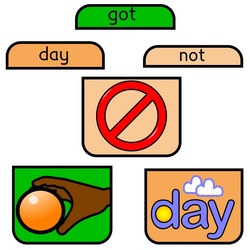
During the teaching of literacy and as the Learner begins to progress, when reading with the Learner using commercially produced books, words will be encountered that are within the Learner’s currrent skill level. It would be an easy matter to look through the book in advance and
prepare a set of resource cards so that, when the words are encountered, the Learner can select the correct symbol from (say) a set of three alternatives (with the V-Pen) and then be reading (at least a little of) the story along with you!
For example, if we are working with ‘We’re going on a bear hunt’ by Michael Rosen and Helen Oxenbury, Our Learner may not be at a llevel which would enable him/her to read every word in the book but, nevertheless, the book might be the one of the child’s particular favourites. Even though the Learner cannot read all the words, there may be some that are within his/her ability level. Let’s assume that, after some initial literacy teaching, the Learner should be able to read simple consonant vowel-consonant-word three-letter word forms. On these pages, there are only four such words: ‘big’, ‘day’, ‘not’ and ‘got’. We can create a set of resource cards to test the Learner’s ability to read these words for him/herself:
prepare a set of resource cards so that, when the words are encountered, the Learner can select the correct symbol from (say) a set of three alternatives (with the V-Pen) and then be reading (at least a little of) the story along with you!
For example, if we are working with ‘We’re going on a bear hunt’ by Michael Rosen and Helen Oxenbury, Our Learner may not be at a llevel which would enable him/her to read every word in the book but, nevertheless, the book might be the one of the child’s particular favourites. Even though the Learner cannot read all the words, there may be some that are within his/her ability level. Let’s assume that, after some initial literacy teaching, the Learner should be able to read simple consonant vowel-consonant-word three-letter word forms. On these pages, there are only four such words: ‘big’, ‘day’, ‘not’ and ‘got’. We can create a set of resource cards to test the Learner’s ability to read these words for him/herself:
The reader reads the story, pointing to each word with his/her finger as s/he reads. When one of the target words is reached in the story, the Reader will pause and ask the Learner if s/he knows what the next word is. The context of the story will act to help the Learner in this task.
Displaying a set of three symbol options, the Reader can say the name of each and then ask the Learner can look at the word in the text and choose the option that matches. The resources can be prepared with or without the text label. However, it advisable to prepare resources with a text label as it is a simple matter to cover up text labels on resource cards if necessary! It also saves time in duplicating resources with and without text labels. Remember, the resources can be cut into two separate parts to create a label and symbol matching pair.
As the words in the examples are different parts of speech, they have been colour coded differently: adjectives are blue, nouns are orange, and verbs are green (Fitzgerald code). Such colour coding may, if not already, eventually be used within the Learner’s own AAC system and help to distinguish one category of words from another.
As you can see, it is not difficult to take the standard reading schemes for children and make them accessible to a Learner requiring AAC. Once resources have been created, they can be used again and again. Remember, using Voice Symbol you can produce any size of symbol and text, up to that of which your printer is capable (typically A4 size). You can produce whole sheets of symbols and then cut them into individual resource cards. It’s as simple as ... design– build – save - print – cut – laminate – organise - store.
Design:
Figure out what words, letters, symbols, etc you need for your literacy scheme. It is better if you do this in small sections:
that way, it won’t seem so large and daunting a task.
Build:
Use either Voice Symbol or Voice Ink (or both!) to create your resources.
Save:
Save your work so that you can use it again in the future. Remember to keep a back up copy on an external disk too!
Print:
Print your work. Remember to ‘Print With Code’. Check the printed materials with the V-Pen to ensure that is working
before progressing.
Cut:
Cut the paper print out into individual resources cards. This won’t be necessary if you have created extra large resources:
one per page.
Laminate:
You should always laminate your resources to protect them and to make them more durable so that they will last longer.
The V-Pen system will still work through laminated sheets.
Organise:
Organise the resulting resource cards in a manner that makes them easy for you to locate.
Store:
Store your newly created resources for lots and lots of future use!
Displaying a set of three symbol options, the Reader can say the name of each and then ask the Learner can look at the word in the text and choose the option that matches. The resources can be prepared with or without the text label. However, it advisable to prepare resources with a text label as it is a simple matter to cover up text labels on resource cards if necessary! It also saves time in duplicating resources with and without text labels. Remember, the resources can be cut into two separate parts to create a label and symbol matching pair.
As the words in the examples are different parts of speech, they have been colour coded differently: adjectives are blue, nouns are orange, and verbs are green (Fitzgerald code). Such colour coding may, if not already, eventually be used within the Learner’s own AAC system and help to distinguish one category of words from another.
As you can see, it is not difficult to take the standard reading schemes for children and make them accessible to a Learner requiring AAC. Once resources have been created, they can be used again and again. Remember, using Voice Symbol you can produce any size of symbol and text, up to that of which your printer is capable (typically A4 size). You can produce whole sheets of symbols and then cut them into individual resource cards. It’s as simple as ... design– build – save - print – cut – laminate – organise - store.
Design:
Figure out what words, letters, symbols, etc you need for your literacy scheme. It is better if you do this in small sections:
that way, it won’t seem so large and daunting a task.
Build:
Use either Voice Symbol or Voice Ink (or both!) to create your resources.
Save:
Save your work so that you can use it again in the future. Remember to keep a back up copy on an external disk too!
Print:
Print your work. Remember to ‘Print With Code’. Check the printed materials with the V-Pen to ensure that is working
before progressing.
Cut:
Cut the paper print out into individual resources cards. This won’t be necessary if you have created extra large resources:
one per page.
Laminate:
You should always laminate your resources to protect them and to make them more durable so that they will last longer.
The V-Pen system will still work through laminated sheets.
Organise:
Organise the resulting resource cards in a manner that makes them easy for you to locate.
Store:
Store your newly created resources for lots and lots of future use!
Idea # 97: Post it!

1. Obtain some empty but sturdy cardboard boxes.
2. Cover each box in a different colour paper or spray them a different colour at least on the face side.
3. Using a craft knife (very carefully) cut out a post box slit near the top of the box. The slots should be large enough to enable all the Learners to make use of the system not just those with fine motor skills. If particular Learners cannot physically manage to do it, pair them with a peer who can help them. However, blindfold the peer so that it cannot be them and not the Learner who takes the decision on posting into any particular box!
4. Label each box with the type of word cards that can be posted in this box: for example, 'Sh' words, 'Sl words' , 'Th' words. You could also chose word categories such as 'Clothes', 'Transport', Animals, etc. Indeed, any idea of which you can think!
5. Get the Learners to sort word cards by posting them into the correct box. If cards have symbols it makes the task easier but, at some point, when you think the Learner is ready, the cards should be the words alone.
6. Eventually, to increase the difficulty of the task, both the cards and the box should only be labelled with text!
If the Learner cannot physically post the cards, s/he can be asked to indicate into which box the item should be posted. If you are doing this task with a Learner ensure that you cannot see the card on which s/he is currently working. In that way, you cannot unintentionally 'cue' the Learner into selecting the correct box (for example, by eye pointing). You can check the card once it has been posted!
Idea # 98: Where in the wor(l)d?

A word on a symbol card is presented to the Learner. It may remain on the desk or table top in front of the Learner. The staff member then makes a sound of a particular letter or letter combination and ask the Learner,
"Where in the word does that sound come?"
A choice of three symbol cards permits the Learner to select the beginning, the middle, or the end as an answer. Thus, the symbol cards form a TRV (see earlier, this page) from which the Learner may select. The staff member may also provide a fourth option 'again' meaning that the Learner wants to hear the sound once more.
It is for the staff member to decide whether the word is spoken out for the Learner to hear before the exercise or if the Learner is expected to read the word from the card themselves. There are obviously several versions of the technique which can be used to make the task simpler or progressively more difficult:
1. Symbol card with word
2. Symbol card without word
3. Word card without symbol
4. Staff member reads the word to the Learner
5. Staff member does not read the word to the Learner
and combinations thereof.
If a Learner appears to be failing at the task, changing the above parameters might help him/her to succeed. Once successful, the task can be progressively made a little more difficult.
There are a number of symbols that could be used for START/BEGINNING MIDDLE END. Some suggestions appear below.
or, of course, symbol choices from any other symbol set that you are using.
Idea # 99: Create Carpet Games

Old square carpet tiles are ideal backdrops for velcro! It sticks to them very nicely and, thus, they can be used to create all manner of things. One idea is to use carpet tiles to form the squares on a giant game board: each carpet square being one square on the board. The squares can be labelled with laminated card that is attached with velcro. Larger moveable 'player pieces' can be almost any item: toy cars, small teddy bears or dolls, tin cans, labelled sticks on bases, etc.
Once the pieces have been assembled, the most difficult part is to think of an idea for a game to reinforce the particular aspect of literacy on which the Learner is currently working. As well as testing/reinforcing previously learned concepts.
One idea would be to have some squares which are question squares. Landing on a question square means that a question card is taken from the top of the question pile. If the learner gets the answer correct then all is OK. If, however, the answer is wrong, some penalty has to be paid such as moving back three squares!
Some squares could be spelling squares, others could be rewards (another shake of the dice, move forward a square, etc)
Good use can be made of different coloured carpet squares if you can find them.
Example questions could be:
- Name any word beginning with the letter 't'.
- Name any word ending in the letter 'g'.
- Spell 'dog'.
- Name any word that contains both the letter 'a' and the letter 'e'
- What is the word 'tar' when it is spelt backwards?
Idea # 100:
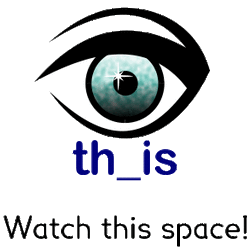
In development
Idea # 102: Use commercial software such as Clicker 5 to reinforce your work

There is a lot of commercial software out there which can be used to reinforce work in almost any area, too much to review or to attempt to list. However, if I come across any really nice piece of software on my travels or you send me in a recommended name I will begin to list those that are seemingly wothy! The first one I shall add to the list is Clicker 5 (or whatever version is current at the point at which you read this if I haven't updated it!) from Crick Software. Clicker is a DIY piece of software with which you can create all manner of support materials for the computer for literacy (as when as many other curricular areas). It supports alternative means of access too. Click on the symbol to move to the Crick website.
Another good piece of software is SimpleAAC available for the iPad from the Apple Store. Simple AAC provides multiple overlay configurations each of which is easy to program. It can be used for building story pages in a one overlay format by using what they call 'Momentum Mode'.
Idea # 103: Research Sources of Further Information
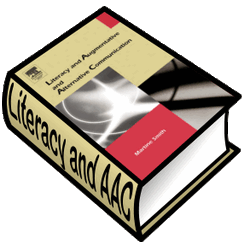
There is a rapidly growing amount of available material in publications (such as the ISAAC Journal), in books (such as Literacy and AAC by Martine Smith) and, of course, on the web (such as the Call Scotland's SAIL pages).
Papers, Presentations, References and Resources:
Ackerman, D. & Mount, H. (1991). Literacy for All: a ‘Whole Language Approach’ to the English National Curriculum for Pupils with Severe and Complex Learning Difficulties. London: David Fulton.
Addison Stone, C., Silliman, E.R., Ehren, B.J., & Apel, Ken. (2004). Handbook of Language And Literacy: Development And Disorders, Guilford Press
Agan, J. P. (2009). The Literacy Landscapes of Literate Males with Severe Speech Disabilities, UMI
Alant, E. (1994). The use of Blissymbols as a first step into literacy, South African Journal of Communication Disorders, Volume 41, pp 23 - 32
Allington, R. (1996), Classrooms that work: They can all read and write, 5th Symposium on Literacy and developmental
disability, January 25-26, 1996, Omni Durham Hotel & Durham Civic Centre, Durham, North Carolina
Allington, R. & Koppenhaver, D.A. (1996), Instruction to help them read and write, 5th Symposium on Literacy and developmental
disability, January 25-26, 1996, Omni Durham Hotel & Durham Civic Centre, Durham, North Carolina
Andrews, J.F. & Mason, J.M. (1991). Strategy usage among deaf and hearing readers, Exceptional Children, Volume 57 (6), pp. 536 - 545.
Andrews, J.F. & Zmijewski, G. (1997). How parents support home literacy with deaf children, Early Child Development and Care, 127 - 8, 131 - 139.
Antonius, K. (1996), Literacy in adolescents: Nonliterate or preliterate? Presentation at 7th Biennial ISAAC Conference, Communication ...... naturally
American Speech-Language-Hearing Association. (2001). Roles and responsibilities of speech-language pathologists with respect to reading and writing in children and adolescents (position statement, executive summary of guidelines, technical report). ASHA Supplement, Volume 21, pp. 17 – 27.
Appleton, M. (2000). Reading and its relationship to language development: a comparison of pre-school children with Down syndrome, hearing impairment or typical development. Unpublished MPhil Thesis, University of Portsmouth.
Arter, C. & Mason, H. (1994). ‘Spelling for the visually impaired child’, British Journal of Visual Impairment, Volume 12 (1), pp. 17 - 20.
Arter, C., McCall, S. and Bowyer, T. (1996). ‘Handwriting and children with visual impairments’, British Journal of Special Education, Volume 21 (1), pp. 25 - 29.
Ashcroft, S.C. (1961). ‘Errors in oral reading of Braille at elementary grade levels.’ In: American Foundation for the Blind Proceedings of Conference on Research Needs in Braille. New York, NY: American Foundation for the Blind.
Bagley, C. & Mallick, K. (1996). ‘Towards achievement of reading skill potential through peer tutoring in mainstreamed 13-year-olds’, Disability & Society, Volume 11 (1), pp. 83 - 89.
Bahr, C.M., Kinzer, C.K. & Rieth, H.J. (1991). ‘An analysis of the effects of teacher training and student grouping on reading comprehension skills among mildly handicapped high school students using computer-assisted instruction’, Journal of Special Education Technology, Volume 11 (3), pp. 136 - 154.
Bailet, L.L., Repper, K., Murphy, S., Piasta, S., & Zettler-Greeley, C. (2013). Emergent literacy intervention for prekindergarteners at risk for reading failure: years 2 and 3 of a multiyear study. Journal of Learning Disabilities, Volume 46 (2), pp. 133 - 153.
Baker, B. & Erickson, K.A. (1996). Language, Literacy, and Semantic Compaction, Proceedings 7th Biennial Conference of the
International Society for Augmentative and Alternative Communication (ISAAC), Vancouver, Canada, pp. 214-215, August, 1996
Baker, B. & Erickson, K.A. (1996). Teaching a pictorial language system to enhance emerging literacy skills, Proceedings 17th Southeast Augmentative Communication Conference (SEACC), Birmingham, Alabama, pp. 47- 56, October, 1996
Baker, B. & Erickson, K.A. (1996). Reading and Graphics: How learning a picture system can enhance emergent reading skills,
Closing the Gap, Minneapolis, Minnesota, October, 1996
Baker L. (1993). An educator’s perspective of combining literacy development and communication independence using the Minspeak system, 8th Annual Minspeak Conference Proceedings, October 6th - 7th, Birmingham, Alabama, Wooster, OH: PRC, pp. 10.1 - 10.5
Baker, L. (2003). The Role of Parents in Motivating Struggling Readers. Reading and Writing Quarterly, Volume 19: pp. 87-106.
Baker, L. & Scher, D. (2002). Beginning Reader's Motivation for Reading in Relation to Parental beliefs and Home Reading Experiences. Reading Psychology, Volume 23: pp. 239-269.
Banks, J., Fraser, P., Fyfe, R., Grant, J., Gray, M., Macaulay, M., & Williams, S. (1989). ‘Teaching deaf children to read: a pilot study of a method’, Journal of the British Association of Teachers of the Deaf, Volume 13 (5), pp.129 - 141.
Banks, J., Gray. C., Fyfe, R., & Morris, A. (1991). ‘An investigation of story schemata in deaf children using a new picture arrangement test’, Journal of the British Association of Teachers of the Deaf, Volume 15 (1), pp. 9 -19.
Banks, J., Macaulay, M., & Gray. C. (1991). ‘The use of semantic mapping and cloze inferencing in the reading instruction of deaf children: an exploratory study’, Journal of the British Association of Teachers of the Deaf, Volume 15 (2), pp. 46 - 59.
Barsch, R.H., & Rudell, B. (1962). A study of reading development among 77 children with cerebral palsy. Cerebral Palsy Review, Volume 23 (2), pp. 3-12.
Barudin, S.I., & Hourcade, J.J. (1990). Relative effectiveness of the three methods of reading instruction in developing specific recall and transfer skills in learners with moderate and severe retardation. Education and Training in Mental Retardation, Volume 25 (3), pp. 286-291.
Baumgart, D., & Van Walleghem, J. (1987). Teaching sight words: A comparison between computer-assisted and teacher-taught models. Education and Training in Mental Retardation, Volume 22, pp. 56-65.
Bedrosian, J. . (1996). Efficacy of emergent literacy interventions for children with severe speech and physical impairments, 5th Symposium on Literacy and developmental disability, January 25-26, 1996, Omni Durham Hotel & Durham Civic Centre, Durham, North Carolina
Bedrosian, J. (1996). Efficacy of emergent literacy intervention with young AAC system users, Presentation at 7th Biennial ISAAC Conference, Communication ...... naturally
Bedrosian, J., Lasker, J., Speidel, K., & Polisch, A. (2003). Enhancing the written narrative skills of an AAC student with autism: Evidence-based research issues. Topics in Language Disorders, Volume 23 (4), pp. 305-324.
Belch, P.J. (1978). Improving the reading comprehension scores of secondary level educable mentally handicapped students through selective teacher questions. Education and Training of the Mentally Retarded, Volume 13, pp. 385-389.
Berger, A., Henderson, J., & Morris, D. (1999). Implementing the Literacy Hour for Pupils with Learning Difficulties. London: David Fulton.
Berninger, V.W., & Gans, B.M. (1986). Language profiles in nonspeaking individuals of normal intelligence with severe cerebral palsy. Augmentative and Alternative Communication, volume 2, pp. 45-50.
Beukelman, D.R., Wolverton, R., & Hiatt, E. (1988), Augmented literacy for nonspeaking/non-writing Persons, Presentation at the Biennial International Conference on AAC: Animations of the mind: October, Disneyland Hotel, Anaheim, California
Bingham, G. E., Hall-Kenyon, K. M. & Culatta, B. (2010), Systematic and Engaging Early Literacy: Examining the Effects of Paraeducator Implemented Early Literacy Instruction. Communication Disorders Quarterly, Volume 32 (1): pp. 38-49.
Bird, J., Bishop, D.V.M. & Freeman, N. (1995). Phonological awareness and literacy development in children with expressive phonological impairments. Journal of Speech and Hearing Research, Volume 38 (2), pp. 446 - 462.
Bishop, D.V.M. (1985). Spelling ability in congenital dysarthia: Evidence against articulatory coding in translating between phonemes and graphemes. Cognitive Neuropsychology, Volume 2, pp. 29-251.
Bishop, D.V.M., & Robson, J. (1989). Unimpaired short-term memory and rhyme judgement in congenitally speechless individuals: Implications for the notion of “articulatory coding." The Quarterly Journal of Experimental Psychology, Volume 41A, pp. 123-140.
Bishop, D.V.M., & Robson, J. (1989). Accurate non-word spelling despite congenital inability to speak: Phoneme-grapheme conversion does not require subvocal articulation. British Journal of Psychology, Volume 80, pp. 1-13.
Bishop, D.V.M., & Adams, C. (1990). A prospective study of the relationship between specific language impairment, phonological
disorders and reading retardation. Journal of Child Psychology and Psychiatry, Volume 31, pp. 1027–1050.
Bishop, D.V M., Brown, B.B., & Robson, J. (1990). The relationship between phoneme discrimination, speech production, and language comprehension in cerebral-palsied individuals. Journal of Speech and Hearing Research, Volume 33, pp. 210-219.
Bishop, J., & Gregory, S. (1985). ‘Mothers and teachers looking at books with deaf children’, Child Language Teaching and Therapy, Volume 1 (2), pp. 149 - 161.
Bishop, K., Rankin, J., & Mirenda, P. (1984). Impact of graphic symbol use on reading acquisition. Augmentative and Alternative Communication, Volume 10, pp. 113 -125.
Blachman, B.A. (1991). Early intervention for children’s reading problems: Clinical applications of the research in phonological awareness. Topics in Language Disorders, Volume 12 (5), pp. 1-65.
Blackman, L.S., & Holden, E.A., Jr. (1963). Support vs. non-support in an auto-instructional word program for educable retardates. American Journal of Mental Deficiency, Volume 67, pp. 592-600.
Blackstone, S. (1989) ACN's guidelines for teaching literacy skills. Augmentative Communication News. January
Blackstone, S. (1996). Identifying clinical and research issues in literacy studies for persons who use AAC, 5th Symposium on Literacy and developmental disability, January 25-26, 1996, Omni Durham Hotel & Durham Civic Centre, Durham, North Carolina
Bligh,S. (1996). The syndrome of hyperlexia, 5th Symposium on Literacy and developmental disability, January 25-26, 1996, Omni Durham Hotel & Durham Civic Centre, Durham, North Carolina
Blischak, D.M. (1994). Phonological awareness: Implications for individuals with little or no functional speech. Augmentative and Alternative Communication, Volume 10, pp. 245-254.
Blischak, D.M. (1995). Thomas the writer: Case study of a child with severe physical, speech and visual impairments. Language, Speech..and Hearing Services in Schools, Volume 26 (1), pp. 11-20.
Blischak, D.M. & Schlosser, R. (2003). Use of technology to support independent spelling by students with autism. Topics in Language Disorders, Volume 23 (4), pp. 293 - 304.
Blischak, D.M., Shah, S.D., Lombardino, L.J., & Chiarella, K. (2004). Effects of phonemic awareness instruction on the encoding skills of children with severe speech impairment. Disability and Rehabilitation, Volume 26, pp. 1295-1304.
Block, J.D. (1978). Teaching reading and writing skills to a teenaged spastic cerebral palsied person: A long-term case study. Perceptual and Motor Skills, Volume 46, pp. 31-41.
Blockberger, S. (2005). Continuous Improvement: Promoting Literacy Instruction for AAC users in inclusive educational environments. Figuratively Speaking, The National Newsletter of the Canadian Chapter of the International Society for Augmentative and Alternative Communication, Number 26, pp. 4-5.
Bochner, S., Outhred, L., & Pieterse, M. (2001). A study of functional literacy skills in young adults with down syndrome. International Journal of Disability, Development and Education, Volume 48 (1), pp. 67-89.
Boudreau, D.M., & Hedberg, N.L. (1999). A comparison of early literacy skills in children with specific language impairment and their typically developing peers. American Journal of Speech-Language Pathology, Volume 8, pp. 249–260.
Breit-Smith, A., Cabell, S. Q., et al. (2010), Home Literacy Experiences and Early Childhood Disability: A Descriptive Study Using the National Household Education Surveys (NHES) Program Database. Language, Speech & Hearing Services in Schools, Volume 41 (1): pp. 96-107.
Breit-Smith, A., & Justice, L.M. (2010). Building emergent literacy skills in children with Autism Spectrum Disorders (ASD). In C. Carnahan and P. Williamson (Eds.), Quality literacy instruction for students with Autism Spectrum Disorders (pp. 219 - 252). Shawn Mission, KS: Autism Asperger Publishing Company.
Brooks, G. (2002) What Works for Children with Literacy Difficulties? DfES: RR380.
Brooks, G., Benefield, P., et al. (2000) Literacy and Special Education Needs: A Review of the Literature. DfEE: Research Brief No.27.
Browder, D. and Xin, Y. (1998) A meta-analysis and review of sight word research and its implications for teaching functional reading to individuals with moderate and severe disabilities. Journal of Special Education, Volume 32 (3), pp. 130-153.
Browder, D. M., Courtade-Little, G. R., Wakeman, S., & Rickelman, R. (2006). From sight words to emergent literacy. In D. Browder & F. Spooner (Eds.), Teaching reading, math, and science to students with significant cognitive disabilities (pp. 63-91). Baltimore, MD: Brookes Publishing.
Browder D.M., & Spooner, F. (Eds.)(2006), Teaching reading, math, and science to students with significant cognitive disabilities. Baltimore, MD: Brookes Publishing.
Browder, D. M., Wakeman, S. Y., Spooner, F., Ahlgrim-Delzell, L., & Algozzine, B. (2006). Research on reading instruction for individuals with significant cognitive disabilities. Exceptional Children, Volume 72, pp. 392-408.
Browder, D.M., Ahlgrim-Delzell, L. et al. (2008), Evaluation of the Effectiveness of an Early Literacy Program for Students with Significant Developmental Disabilities. Exceptional Children, Volume 75 (1): pp. 33-52
Brown, L., & Perlmutter, L. (1971). Teaching functional reading to trainable level retarded students. Education and Training of the Mentally Retarded, Volume 6, pp. 74-84.
Browning, N. (2002). Literacy of children with physical disabilities: A literature review. Canadian Journal of Occupational Therapy, pp. 176-182.
Bryant, P., Nunes, T., & Bindman, M. (1998). ‘Awareness of language in children who have reading difficulties: historical comparisons in a longitudinal study’, Journal of Child Psychology and Psychiatry, Volume 39 (4), pp. 501 - 510.
Buckley, S. (1985). ‘Attaining basic educational skills: reading, writing and number.’ In: Lane, D. and Stratford, B. Current Approaches to Down’s Syndrome. Eastbourne: Holt, Rinehart &Winston.
Buckley, S., Emslie, M., Haslegrave, G., & Leprevost, P. (1986). The Development of Language and Reading Skills in Children with Down's Syndrome. Portsmouth: Portsmouth Polytechnic.
Buckley, S. (1993). ‘Improving the expressive grammar of teenagers with Down's syndrome.’ In: Clibbens, J. and Pendleton, B. (Eds) Proceedings of the Child Language Seminar. Plymouth: University of Plymouth.
Buckley, S., & Bird, G. (1993). ‘Teaching children with Down syndrome to read’, Down Syndrome: Research and Practice, Volume 1 (1), pp. 34 - 39.
Buckley, S. (1995). ‘Teaching children with Down syndrome to read and write.’ In: Nadel, L. and Rosenthal, D. (Eds) Down Syndrome: Living and Learning in the Community. New York, NY: Wiley
Buckley,S. (1996). Improving the expressive syntax of teenagers with Down Syndrome using reading activities, 5th Symposium on Literacy and developmental disability, January 25-26, 1996, Omni Durham Hotel & Durham Civic Centre, Durham, North Carolina
Buckley, S. (1996) Reading before talking: learning about mental abilities from children with Down Syndrome. Down Syndrome Association
Buckley, S., Bird, G., & Byrne, A. (1996). ‘Reading acquisition by young children with Down syndrome.’ In: Gunn, P. and Stratford, B. (Eds) New Approaches to Down Syndrome. Second edition. London: Cassell.
Buckley, S., Bird, G., Sacks, B.I., & Archer, T. (2000). ‘A comparison of mainstream and special school education for teenagers with Down syndrome: effects on social and academic development’, Down Syndrome: Research and Practice, Volume 7 (1).
Burden, V. and Campbell, R. (1994). ‘The development of word-coding skills in the born-deaf: an experimental study of deaf school-leavers’, British Journal of Developmental Psychology, Volume 12 (3), pp. 331 - 349.
Buskin, L., & Petty, L. (1996). Addressing the literacy needs of the visually impaired AAC user, Presentation at 7th Biennial ISAAC Conference Communication ...... naturally, August 1996, Vancouver, Canada
Butler, K.G. (2003). Developing Literacy Skills, Topics in Language Disorders, Volume 23 (4), pp. 267-268
Buultjens, M., Aitken, S., Ravenscroft, J., & Carey, K. (1999). ‘Size counts: the significance of size, font and style of print for readers with low vision sitting examinations’, British Journal of Visual Impairment, Volume 17 (1), pp. 5 - 10.
Byrne, A., Buckley, S., MacDonald, J., & Bird, G. (1995). Investigating the literacy, language and memory skills of children with Down’s syndrome, Down Syndrome: Research and Practice, Volume 3 (2), pp. 53 - 58.
Byrne, A., MacDonald, J., & Buckley, S. (1996). A cognitive analysis of reading strategies in Down’s syndrome. Paper presented at the BPS Cognitive Psychology Section 13th Annual Conference, University of Keele, 16-18 September.
Byrne, A. (1997). The development of reading skills in children with Down syndrome. Unpublished Ph.D. thesis, University of Portsmouth.
Cabell, S.Q., Justice, L.M., Zucker, T.A., & McGinty, A.S. (2009). Emergent Name-Writing Abilities of Preschool-Age Children With
Language Impairment, Language, Speech, and Hearing Services in Schools, Volume 40, January, pp. 53 – 66
Calhoun, M.L. (1985). Typing contrasted with handwriting in language arts instruction for moderately mentally retarded students. Education and Training of the Mentally Retarded, Volume 20, pp. 48-52.
Card, R., & Dodd, B. (2006) The phonological awareness abilities of children with cerebral palsy who do not speak. Augmentative and Alternative Communication, Volume 22, pp. 149-159
Cardinal, D. (1996). Investigating previously undisclosed literacy through facilitated communication, 5th Symposium on Literacy and developmental disability, January 25-26, 1996, Omni Durham Hotel & Durham Civic Centre, Durham, North Carolina
Carlson, B., McLaughlin, T.F. et al. (2009). Teaching Preschool Children with Autism and Developmental Delays to Write. Electronic Journal of Research in Educational Psychology, Volume 7 (1): pp. 225-238.
Carpenter, B. & Detheridge, T. (1994). Writing with symbols, Support for Learning, Volume 9 (1), pp. 27 - 32.
Casteel, C.A. (1988). Effects of chunked reading among learning disabled students: an experimental comparison of computer and traditional chunked passages, Journal of Educational Technology Systems, Volume 17 (2), pp. 115 - 121.
Catts, H.W., & Kamhi, A.G. (1986). The linguistic basis of reading disorders: Implications for the speech-language pathologist. Language, Speech, and Hearing Services in Schools, Volume 17, pp. 329–341.
Catts, H.W., & Kamhi, A.G. (1999). Language and reading disabilities. Boston: Allyn & Bacon.
Catts, H.W., Fey, M.E., Tomblin, J.B., & Zhang, X. (2002). Longitudinal investigation of reading outcomes in children with language impairment. Journal of Speech Language and Hearing Research, 45, 1142–1157.
Catts, H.W., Bridges, M.S., Little,T.D., & Tomblin, J.B. (2008), Reading Achievement Growth in Children With Language Impairments,
Journal of Speech Language and Hearing Research, Volume 51 (6): pp. 1569 - 1579.
Center, Y. & Freeman, L. (1997). ‘The use of a structured literacy program to facilitate the inclusion of marginal and special education students into regular classes’, Australasian Journal of Special Education, Volume 21 (1), pp. 45 - 62.
Chandler-Olcott, K. &. Kluth, P.M. (2008). Mother's voice was the main source of learning: Parents role in supporting the literacy development of students with autism. Journal of Literacy Research, Volume 40 (4): pp. 461-492.
Chang, S.Q., Williams, R L., & McLaughlin, T.F. (1983). Differential effects of oral reading to improve comprehension and severe learning disabled and educable mentally handicapped students. Adolescence, Volume 18 (71), pp. 619-626.
Chard, D., Vaughn, S. et al. (2002) A Synthesis of research on Effective Interventions for Building reading Fluency with Elementary Students with Learning Disabilities. Journal of Learning Disabilities, Volume 35 (5), pp. 386-406.
Chen, D. & Downing, J. (2006). Tactile strategies for children who have visual impairments and multiple disabilities. New York, NY: AFB Press.
Churchill, S. (1997). How the new Lightwriter range caters for acquired dysphasia, emerging literacy, severe physical, visual
and cognitive disabilities. Presentation at Communication Matters National Symposium, Lancaster University, 22nd - 23rd September 1997
Clark, J., Kozarchuk, D., Toews, D., & Friesen, C. (1996). Literacy program development for adults with developmental disabilities
Presentation at 7th Biennial ISAAC Conference, Communication ...... naturally, August 1996, Vancouver, Canada
Cobrinik, L. (1974). Unusual reading ability in severely disturbed children. Journal of Autism and Childhood Schizophrenia, Volume 4, pp. 163-175.
Coleman, P. (1991). Literacy lost: a qualitative analysis of the early literacy experiences of preschool children with severe speech and physical impairments, Unpublished Doctoral Dissertation, University of North Carolina at Chapel Hill
Coleman, P. (1991). Literacy in AAC, Presentation at the 3rd Biennial State of the Art Conference on Augmentative and Alternative
Communication and Crossroads Conference on Communication Disorders, Purdue University, October 1991
Coleman, P., Koppenhaver, D.A., & Yoder D. (1991). Emerging literacy activities for preschool augmentative communicators, Available from Center for Literacy and Developmental Disabilities, Chapel Hill, NC, University of North Carolina at Chapel Hill
Coleman-Martin, M. B., Heller, K. W., Cihak, D. F., & Irvine, K. L. (2005). Using computer-assisted instruction and the nonverbal reading approach to teach word identification. Focus on Autism and Other Developmental Disabilities, Volume 20, pp. 80-90.
Compton, D.L., Fuchs, L.S., Fuchs, D., Lambert, W., & Hamlett, C. (2012), The Cognitive and Academic Profiles of Reading and Mathematics Learning Disabilities, Journal of Learning Disability, Volume 45 (1): pp. 79 - 95.
Conners, F.A. (1990). Aptitude by treatment interactions in computer-assisted word learning by mentally retarded students. American Journal on Mental Retardation, Volume 94, pp. 387-397.
Conners, F.A., & Detterman, D.K. (1987). Information processing correlates of computer assisted word learning by mentally retarded students. American Journal of Mental Deficiency, Volume 91, pp. 606-612.
Copeland, S.R., & Keefe, E.B. (Eds.)(2007). Effective literacy instruction for students with moderate or severe disabilities. Baltimore, MD: Brookes Publishing Company.
Corley, G. & Pring, L. (1993). ‘The oral reading errors of partially sighted children’, British Journal of Visual Impairment, Volume 11 (1), pp. 24 - 27.
Corley, G. & Pring, L. (1993). ‘Reading strategies in partially sighted children’, International Journal of Rehabilitation Research, Volume 16 (3), pp. 209 - 220.
Corley, P. & Remz, A. (1996). The write tools: Case studies of using technology to support writing, 5th Symposium on Literacy and developmental disability, January 25-26, 1996. Omni Durham Hotel & Durham Civic Centre, Durham, North Carolina
Cossu, G., Rossini, F., & Marshall, J.C. (1993). ‘When reading is acquired but phonemic awareness is not: a study of literacy in Down’s syndrome’, Cognition, Volume 46 (2), pp.129 - 138
Cousin, P.T., Weekley, T., & Gerard, J. (1993). The functional uses of language and literacy by students with severe language and learning problems. Language Arts, Volume 70, pp. 548-556.
Craig, C.J. (1996). Family support of the emergent literacy of children with visual impairments. Journal of Visual Impairment & Blindness, Volume 90 (3): pp. 194.
Craig, C.J., Depriest, L., & Harnack, K. (1997). ‘Teachers’ perspectives on selecting literacy media for children with visual impairments’, Journal of Visual Impairment and Blindness, Volume 91 (6), pp. 539 - 545.
Craig, C.J. (1999). Home Literacy Experiences of a Child with a Visual Impairment. Journal of Visual Impairment & Blindness, Volume 93 (12): pp. 794.
Cromer, H. & O’Neill, J. (1997). Engineering the PMH environment for communication and literacy, 18th Annual Southeast Augmentative
Communication Conference Proceedings, pp. 25 - 29, October 3rd - 4th, Wynfrey Hotel, Birmingham, Alabama
Crossland, C.L. (1981). A comparison of retarded and non-retarded on the ability to use context in reading. Journal for Special Educators, Volume 17, pp. 234-241.
Crossley, R. (1993). Literacy and facilitative communication training, Communicating Together, Volume 11, Number 2, June 1993, pp. 16 - 17
Culatta, B., Hall, K., Kovarsky, D. & Theadore, G. (2007), Contextualized Approach to Language and Literacy (Project CALL): Capitalizing on Varied Activities and Contexts to Teach Early Literacy Skills, Communication Disorders Quarterly, Volume 28 (4): pp. 216 - 235.
Cumming, C.E., Grove, C., & Rodda, M. (1985). ‘A note on reading comprehension in hearing-impaired adolescents’, Journal of the British Association of Teachers of the Deaf, Volume 9 (3), pp. 57 - 60.
Cunningham, J., Erickson, K., (1996). Assessment to help us teach them all to read and write, 5th Symposium on Literacy and developmental disability, January 25-26, 1996, Omni Durham Hotel & Durham Civic Centre, Durham, North Carolina
Cunningham, J., Erickson, K., Spadorcia, S., Koppenhaver, D., Cunningham, P. Yoder, D., and McKenna, M. (1999). Assessing decoding from an onset-rime perspective. Journal of Literacy Research, Volume 31 (4), pp. 391-414.
Dahlgren Sandberg, A. & Hjelmquist, E. (1996). Phonologic awareness and literacy abilities in nospeaking preschool children with cerebral palsy. Augmentative and Alternative Communication, Volume l2, pp. 138- 153.
Dahlgren Sandberg, A. & Hjelmquist, E. (1997). Language and Literacy in nonvocal children with CP. Reading and Writing: An Interdisciplinary Journal, Volume 9, pp. 107-133
Dahlgren Sandberg, A. (2001). Reading and spelling, phonological awareness, and working memory in children with severe speech impairments: A longitudinal study. Augmentative and A!ternative Communication, Volume 17, pp.11-26.
Dahlgren Sandberg, A (2002). Reading and spelling abilities in nonvocal children with CP during a six year period. Paper presented at the ISAAC Biennial Conference, Denmark.
Dahlgren Sandberg, A. (2006). Reading and spelling abilities in children with severe speech impairments and cerebral palsy at 6, 9, and 12 years of age in relation to cognitive development: A longitudinal study. Developmental Medicine and Child Neurology, Volume 48, pp. 629 – 634.
Dahlgren Sandberg, A., Smith, M., & Larsson, M. (2010). An Analysis of Reading and Spelling Abilities of Children Using AAC: Understanding a Continuum of Competence, Augmentative and Alternative Communication, Volume 26 (3), pp. 191-202
Davidson, J., Elcock, J., & Noyes, P. (1996). ‘A preliminary study of the effect of computer-assisted practice on reading attainment’, Journal of Research in Reading, Volume 19 (2), pp. 102 - 110.
Davies, J. (1989). ‘Reading schemes for partially sighted beginning readers’, British Journal of Visual Impairment, Volume 7 (1), pp. 19 - 21.
Day, J. N., McDonnell, A. P. et al. (2005). Enhancing Emergent Literacy Skills in Inclusive Preschools for Young Children with Visual Impairments. Young Exceptional Children, Volume 9 (1): pp. 20-28.
DeBaun P. (1990). Storytime: Stories, symbols and emergent literacy: activities for young special needs children. Acworth, Georgia
DeCoste, D. (1996). The literacy continuum: Assessment, reading and writing strategies for children and adolescents with cognitive impairments. 5th Symposium on Literacy and developmental disability, January 25-26, 1996, Omni Durham Hotel & Durham Civic Centre, Durham, North Carolina
DeCoste, D. (1997). The role of literacy in augmentative and alternative communication. In Glennen, S.L. & DeCoste, D.C.(Eds). The handbook of augmentative and alternative communication (pp. 414-444). San Diego, CA: Singular Publishing Group.
De Hoop, W. (1965). Listening comprehension of cerebral palsied and other crippled children as a function of two speaking rates. Exceptional Children, Volume 31, pp. 233-240.
Denton, C.A., Vaughn, S. et al. (2003) Bringing Research-Based Practice in Reading Intervention to Scale. Learning Disabilities Research and Practice, Volume 18 (3), pp. 201-211.
Deshler, D.D., Schumaker, J.B., Lenz, B.K., Bulgren, J.A., Hock, M.F., Knight, J., & Ehren, B.J. (2001). Ensuring content-area learning by secondary students with learning disabilities. Learning Disabilities Research and Practice, Volume 16, pp. 96-108.
Detheridge, T. and Detheridge, M. (2002) Literacy through Symbols: improving access for children and adults. London: David Fulton Publishers.
Devereux, K., & Van Oosterom, J. (1984). Learning with Rebuses: Read, Think and Do. Stratford upon Avon: National Council for Special Education.
Diehl, S. F. & Vaughn, B. (2010). Clinical Discourse and Engagement during Shared Storybook Reading in Preschool Groups. Seminars in Speech & Language, Volume 31 (2): pp. 111-121.
Dodd, B. (1980). The spelling abilities of profoundly, prelingually deaf children. In: Frith, U. (Ed) Cognitive Process in Spelling. London: Academic Press.
Dodd, S., Hupp, S.D.A., et al. (2008). Using Parents and Siblings during a Social Story Intervention for Two Children Diagnosed with PDD-NOS. Journal of Developmental & Physical Disabilities, Volume 20 (3): pp. 217-229.
Dorman, C., Hurley, A.D., & Laatsch, L. (1984). Prediction of spelling and reading performance in cerebral palsied adolescents using neuropsychological tests. International Journal of Clinical Neuropsychology, Volume 6, pp. 142-145.
Dorman, C. (1987) Verbal, perceptual and intellectual factors associated with reading achievement in adolescents with CP. Perceptual and Motor Skills, Volume 64, pp. 671-678
Dorry, G.W., & Zeaman, D. (1973). The use of a fading technique in paired associate teaching of a reading vocabulary with retardates. Mental Retardation, Volume 11 (6), pp. 3-6.
Dorry, G.W., & Zeaman, D. (1975). Teaching a simple reading vocabulary to retarded children: Effectiveness of fading and non-fading procedures. American Journal of Mental Deficiency, Volume 79, pp. 711-716.
Dorry, G.W. (1976). Attentional model for the effectiveness of fading in training reading vocabulary with retarded persons. American Journal of Mental Deficiency, Volume 81, pp. 271-279.
Douglas, G., & Dickens, J. (1996). ‘The development of early tactile reading skills.’ In: Bozic, N. and Murdoch, H. (Eds) Learning Through Interaction: Technology and Children with Multiple Disabilities. London: David Fulton.
Douglas, G., McLinden, M., McCall, S., Pavey, S., Ware, J., & Farrell, A. (2011). Access to print literacy for children and young people with visual impairment: findings from a review of literature. European Journal of Special Needs Education, Volume 26 (1), pp. 25-38.
Douglas, G., McLinden, M., Farrell, A., Ware, J., McCall, S., & Pavey, S. (2011). Access to print literacy for children and young people with visual impairment: policy and practice. European Journal of Special Needs Education, Volume 26 (1), pp. 39-46.
Downing, J. (2005), Teaching Literacy to Students With Significant Disabilities, Corwin Press
Duffen, L. (1976). ‘Teaching reading to children with little or no language’, Remedial Education, Volume 11 (3), pp. 139 - 142.
Duran, E. (1985). Teaching functional reading in context to severely retarded autistic adolescents of limited English proficiency. Adolescence, Volume 20 (8), pp. 433-440.
Durando, J. (2008). A survey on literacy instruction for students with multiple disabilities. Journal of Visual Impairment & Blindness, Volume 102(1), pp. 40-45.
Durando, J. (2008), Home Literacy Experiences of Children with Visual Impairments and Multiple Disabilities, UMI
Dyson, A. (1990). Weaving possibilities: Rethinking metaphors for early literacy development. The Reading Teacher, Volume 44 (3), pp. 202-213.
Dziwulski, M. (1994). Developing literacy skills for persons with developmental disabilities: some considerations, Available from Chapel Hill, NC: University of North Carolina, Clinical Center for the study of Development and Learning
Elbaum, B., Vaughn, S., Hughes, M., & Moody, S.W. (1999). ‘Grouping practices and reading outcomes for students with disabilities’, Exceptional Children, Volume 65 (3), pp. 399 - 415.
Embrey, J. & Sauers, J. (1994). Linking literacy with the Mega wolf, Proceedings: 15th Southeast Augmentative Communication Conference, Birmingham, Alabama: SEAC
Erickson, K.A., Koppenhaver, D.A., Pierce, P.P., & Steelman, J.D. (1993), The role of literacy in employment for Augmented Communicators, The 1st Annual Pittsburgh Employment Conference for Augmented Communicators Proceedings
Erickson, K.A., Koppenhaver, D.A., Pierce, P.P., & Steelman, J.D. (1993, August). The role of literacy in employment for augmented communicators. Paper presented at The Pittsburgh Employment Conference, Pittsburgh, PA.
Erickson, K.A. (1994). Helping to promote literacy in AAC users: More Parent Articles. Tucson, AZ: Communication Skill Builders
Erickson, K.A., Koppenhaver, D.A. & Yoder, D. (1994). Adult literacy and AAC users: Research findings and future directions
Presentation at 6th Biennial ISAAC Conference, Maastricht, October 9 -13, 1994
Erickson, K.A., Koppenhaver, D.A. & Yoder, D. (1994). Literacy and adults with developmental disabilities, NCAL Technical report Number 94-15, National Center on Adult Literacy, University of Pennsylvania, Philadelphia
Erickson, K.A. & Koppenhaver, D.A. (1994). A literacy program for children with severe disabilities, Presentation at 6th Biennial ISAAC Conference, Maastricht, October 9 -13, 199, pp. 260 - 261
Erickson, K.A. & Staples, A. (1994). A sound decision. Team Rehab Report, Volume 5, Number 8, pp. 20 - 23
Erickson, K.A. (1994). Who are adults with developmental disabilities? Available from Center for Literacy and Developmental disabilities, Chapel Hill, NC.
Erickson, K.A. (1995). Literacy and inclusion for a student with severe speech and physical impairments. Unpublished Doctoral Dissertation
University of North Carolina at Chapel Hill
Erickson, K.A. & Koppenhaver, D.A. (1995). Living books and talking book strips: Interactive reading lessons for children with developmental disabilities, Presentation at Closing The Gap, Minneapolis, Minnesota, October 19th - 21st, 1995
Erickson, K.A. & Koppenhaver, D.A. (1995). Developing a literacy program for children with severe disabilities. Reading Teacher. Volume 48 (8), pp. 676-684.
Erickson, K.A. & Staples, A. (1995). Multiple learning influences and a classroom in transition, The ISAAC Bulletin, Number 41, August 1995, page 4
Erickson, K.A. (1996). From picture producers to real language and literacy: a practical guide, 10th Annual Minspeak Conference Proceedings, July 12-13th, 1996, Wooster, Ohio. pp. 92 - 103, Wooster, OH: PRC
Erickson, K.A. (1996). Emergent literacy kits for early intervention, Presentation at 7th Biennial ISAAC Conference, Communication ...... naturally, August 1996, Vancouver, Canada
Erickson, K.A. & Baker, B. (1996), Language. Literacy and Semantic Compaction, Presentation at 7th Biennial ISAAC Conference,
Communication ...... naturally, August 1996, Vancouver, Canada
Erickson, K.A. & Baker, B. (1996). Teaching a pictorial language system to enhance literacy skills, Proceedings of the 17th Annual Southeast Augmentative Communication Conference, pp. 47 - 56, Birmingham, Alabama:SEAC publications
Erickson, K.A. & Koppenhaver, D.A. (1996). Technology supports for literacy in a student with severe speech and physical impairments,
Available from Center for Literacy and Developmental disabilities, Chapel Hill, NC.
Erickson, K.A., Koppenhaver, D.A., Yoder, D.E., & Nance, J. (1997). Integrated communication and literacy instruction for a child with multiple disabilities. Focus on Autism and Other Developmental Disabilities, Volume 12 (3), pp. 142-150.
Erickson, K.A. & Koppenhaver, D.A. (1998).Using the “Write Talknology" with Patrick. Teaching Exceptional Children, September/October, pp. 58-64.
Erickson, K.A. (2000). All children are ready to learn: An emergent versus readiness perspective in early literacy assessment. Seminars in Speech and Language, 2! (3), 193-203.
Erickson, K.A. (2002). The Adolescent Literacy Learning Link: An AlternativeTeaching Model. Paper presented at the ISAAC Biennial Conference, Denmark.
Erickson, K.A. (2003). Reading comprehension in AAC. The ASHA Leader, Volume 8 (12), pp. 6-9.
Erickson, K.A. et al. (2005). Toward positive literacy outcomes for students with significant developmental disabilities. Assistive Technology Outcomes and Benefits, Volume 2 (1): pp. 45-54.
Erickson, K.A., & Hatton, D. (2007). Expanding Understanding of Emergent Literacy: Empirical Support for a New Framework. Journal of Visual Impairment & Blindness, Volume 101 (5): pp. 261-277.
Erickson, K.A., & Hatton, D., et al. (2007). Literacy in Early Intervention for Children with Visual Impairments: Insights from Individual Cases. Journal of Visual Impairment & Blindness, Volume 101 (2): pp. 80-95.
Erickson, K.A. & Sachse, S. (2010). Reading Acquisition, AAC and the Transferability of English Research to Languages with More Consistent or Transparent Orthographies, Augmentative and Alternative Communication, Volume 26 (3), pp. 177-190
Evans, L., & Edwards, D. (1987). A “look and sign” approach to reading for deaf children, Journal of the British Association of Teachers of the Deaf, Volume 11 (5), pp. 137 - 142.
Evans, M.A. and Schmidt, F. (1991). Repeated observations of maternal book reading with a language-normal and language-impaired preschooler. First Language, Volume 11, pp. 269 - 287.
Evans, R. (1994). Phonological awareness in children with Down’s syndrome, Down’s Syndrome: Research and Practice, Volume 2 (3), pp. 102 - 105.
Ezell, H.K., & Justice, L.M. (1998). Pilot investigation of parents questions about print and pictures to preschoolers with language delay. Child Language Teaching and Therapy, Volume 14, pp. 273 - 278
Ezell, H.K., & Justice, L.M. (2000). Increasing the print focus of adult-child shared book reading through observational Learning. American Journal of Speech Language Pathology, Volume 9, pp. 36 - 47
Ezell, H.K., Justice, L.M., & Parsons, D. (2000). Enhancing the emergent literacy skills of preschoolers with communication disorders: A pilot investigation. Child Language Teaching and Therapy, Volume 16, pp. 121–140.
Ezell, H.K., Kohler, F.W., & Strain, P.S. (1994). ‘A program description and evaluation of academic peer tutoring for reading skills of children with special needs’, Education and Treatment of Children, Volume 17 (1), pp. 52 - 67.
Fallon, K.A., Light, J., McNaughton, D., Drager, K., & Hammer, C. (2004). The effects of direct instruction on the single-word reading skills of children who require augmentative and alternative communication. Journal of Speech, Language and Hearing Research, Volume 47 (6), pp. 1424-1439.
Farley, J.W., Jr. (1986). An analysis of written dialogue of educable mentally retarded writers. Education and Training of the Mentally Retarded, Volume 21, pp. 181-191.
Farrall, J. (2002). Interactive Storytime: Including All Students in Guided Reading. Paper presented at the ISAAC Biennial Conference, Denmark.
Fellenius, K. (1996). ‘Reading competence of visually impaired pupils in Sweden’, Journal of Visual Impairment and Blindness, Volume 90 (3), pp. 237-56.
Fellenius, K. (1999). ‘Swedish 9-year-old readers with visual impairments: a heterogeneous group’, Journal of Visual Impairment and Blindness, Volume 93 (6), pp. 370 - 380.
Fenwick, M. (2005). Multisensory sensitive stories, Eye Contact, Summer 2005, Volume 42, p12-14
Ferreira, J., Ronnberg, J. & Gusafson, S. (2002). Compot-computerised phonological training promoting literacv among children with CP. Paper presented at the ISAAC Biennial Conference, Denmark.
Fey, M. E., Catts, H. W., Proctor-Williams, K., Tomblin, J. B., & Zhang, X. (2004). Oral and written story composition skills of children
with language impairment. Journal of Speech, Language, and Hearing Research, Volume 47, pp. 1301 – 1318.
Fey, M.E., Cleave, P.L., & Long, S.H. (1997). Two models of grammar facilitation with language impairments: Phase 2. Journal of Speech Language and Hearing Research, Volume 40, pp. 5–19.
Finch, A., & Scherz, J. (2002). Tips for Developing Literacy for Users of AAC. Perspectives on Augmentative and Alternative Communication, Volume 17, pp.78-83
Flax, J. F., Realpe-Bonilla, T., Hirsch, L. S., Brzustowicz, L. M., Bartlett, C. W., & Tallal, P. (2003). Specific language impairment in
families: Evidence for co-occurrence with reading impairments. Journal of Speech, Language, and Hearing Research, Volume 46, pp. 530 – 543.
Fletcher-Campbell, F. (ed.) (2000). Literacy and Special Educational Needs: A Review of the Literature. Research Report No. 227. London: DfEE.
Foley, B.E. (1989). Phonological recoding and congenital dysarthia. Unpublished doctoral dissertation, University of Massachusetts, Amherst, Massachusetts.
Foley, B.E. (1993). The development of literacy in individuals with severe congenital speech and motor impairments. Topics in Language Disorders, Volume l3 (2), pp.16-32.
Foley, B.E. & Smith M. (1994). Phonological awareness in children with SSPI: Assessment and intervention issues, Presentation at 6th Biennial ISAAC Conference, Maastricht, October 9 -13, 1994
Foley, B.E. & Sumple, P. (1994). Phonological awareness in children with SSPI: Assessment and intervention issues. Workshop presented at the Child Development and Rehabilitation Centre, Oregon Health Science, University, Portland Oregon
Foley, B.E. (1996). A test of phonological awareness for children with SSPI, Presentation at 7th Biennial ISAAC Conference, Communication ...... naturally, August 1996, Vancouver, Canada
Foley, B.E. (1996). Creating community and communication through literacy events, Presentation at 7th Biennial ISAAC Conference,
Communication ...... naturally, August 1996, Vancouver, Canada
Foley, B.E., & Pollatsek, A. (1999). Phonological processing and reading abilities in adolescents and adults with severe congenital speech impairments. AAC: Augmentative and Alternative Communication, Volume 15, pp. 156-173.
Foley, B.E. & Staples, A.H. (2003). Developing Augmentative and Alternative Communication (AAC) and Literacy Interventions in a Supported Employment Setting, Topics in Language Disorders, Volume 23 (4), pp. 325–343
Foorman, B. & Torgeson, J. (2001). Critical elements of classroom and smallgroup instruction promote reading success in all children. Learning, Disabilities Research and Practice, Volume 16 (4), pp. 203-212.
Fried-Oken, M. & Bersani, H.A.Jr. (Eds.)(200). Speaking up & spelling it out. Baltimore: Brookes Publishing Co.
Frith, U., & Snowling, M. (1983). Reading for meaning and reading for sound in autistic and dyslexic children. British Journal of Developmental Psychology, Volume 1, pp. 329-342.
Frumkin, J.R., Awad, R., & Levatino, J. (1996). Student learning and development of the reading process within full inclusive classrooms
5th Symposium on Literacy and developmental disability, January 25-26, 1996, Omni Durham Hotel & Durham Civic Centre, Durham, North Carolina
Fuchs, D., Fuchs, L. S., Power, M. H., & Dailey, A. M. (1985). Bias in the assessment of handicapped children. American Educational Research Journal, Volume 22, pp. 185-198.
Fuchs, L., Fuchs, D., & Bishop, N. (1992). Teacher planning for students with learning disabilities: Differences between general and special educators. Learning Disabilities Research and Practice, Volume7, pp. 120-128.
Fuchs, D., Fuchs, L. S., Thompson, A., Al Otaiba, S., Yen, L., Braun, M., & O’Connor, R. E. (2001). Is reading important in reading-readiness programs? A randomized field trial with teachers as program implementers. Journal of Educational Psychology, Volume 93, pp. 251 - 267.
Fuchs, D. Fuchs, L., Thompson, A. Al Otaiba, S., Yen, L. Yang, N., Braun, M., & O'connor, R. (2002). Exploring the importance of reading programs for kindergartners with disabilities in mainstream classrooms. Exceptional Children. Volume 68 (3), pp. 295-311.
Fulk, B., & Stormont-Spurgin, M. (1995) Spelling interventions for students with disabilities: a review, Journal of Special Education, Volume 28 (4), pp. 488 - 513.
Fyfe, C. (2001) Gulliver’s Travels: A Multisensory Approach, London: Bag Books
Gale, E., & Schick, B. (2008). Symbol-infused joint attention and language use in mothers with deaf and hearing toddlers. American Annals of the Deaf, Volume 153 (5): pp. 484-503.
Gandell, T. (1991). Telecommunications: Its effect on the reading and communication skills of adult augmentative communicators who are severely disabled. Unpublished doctoral dissertation, McGill University, Montreal, Canada.
Gately, S. E. (2004). Developing concept of word: The work of emergent readers. Teaching Exceptional Children, Volume 36 (6): pp. 16-22.
Geers, A. and Moog, J. (1989) Factors predictive of the development of literacy in profoundly hearing impaired adolescents. Volta Review, Volume 91, pp. 69-86.
Gersten, R., & Fuchs, L.S. (2001) Teaching reading comprehension strategies to students with learning disabilities: A Review of Research. Review of Educational Research, Volume 71 (2), pp. 279-320.
Gillam, R.B., & Johnston, J.R. (1985). Development of print awareness in language-disordered preschoolers. Journal of Speech and Hearing Research, Volume 28, pp. 521 – 526.
Gillam, R.B., & Johnston, J.R. (1992). Spoken and written language relationships in language/learning-impaired and normally achieving school age children. Journal of Speech and Hearing Research, Volume 35, pp. 1303 – 1315.
Gillam, R.B., & Carlile, R.M. (1997). Oral reading and story retelling of students with specific language impairment, Language, Speech and Hearing Services in Schools, Volume 28 (1), pp. 30 - 42.
Gillespie, C.W., & Twardosz, S. (1997). A group story-book reading intervention with children at a residential school for the deaf, American Annals of the Deaf, Volume 142 (4), pp. 320 - 332.
Gillette, Y. & Hoffman, J. L. (1996). Pictures to print: Organizing, selecting, representing vocabulary to facilitate literacy, Presentation at 7th Biennial ISAAC Conference, Communication ...... naturally, August 1996, Vancouver, Canada
Gillette, Y. (1997). Logical language: Inclusion software that supports literacy and AAC, Presentation at the CSUN Conference, Los Angeles, CA
Gillette, Y. (2006). Assistive Technology and Literacy Partnerships, Topics in Language Disorders, Volume 26 (1), pp. 70-84
Gillam, R.B., & Johnston, J.R. (1985). Development of print awareness in language-disordered preschoolers. Journal of Speech and Hearing Research, Volume 28, pp. 521–526.
Gillon, G. (2002) Follow-up study investigating the benefits of phonological awareness intervention for children with spoken language impairment. International Journal of Language and Communication Disorders, Volume 37 (4), pp. 381-400.
Gipe, J.P., Duffy, C.A., & Richards, J.C. (1993). Helping a nonspeaking adult male with cerebral palsy achieve literacy. Journal of Reading, Volume 36 (5), pp. 380-389.
Goin, R.P., Nordquist, V.M., et al. (2004). Parental accounts of home-based literacy processes: Contexts for infants and toddlers with developmental delays. Early Education and Development, Volume 15 (2): pp. 187-214.
Goldberg, T.E. (1987). On hermanic reading abilities. Journal of Autism and Developmental Disorders, Volume 17 (1), pp. 29-44.
Graham, S. (1999) Handwriting and Spelling Instruction for Students with Learning Disabilities: A Review. Learning Disability Quarterly, Volume 22 (2), pp. 78-98.
Greenhalgh, K.S., & Strong, C.J. (2001). Literate language features in spoken narratives of children with typical language and children with language impairments. Language, Speech, and Hearing Services in Schools, Volume 32, pp. 114–125.
Grenier, D., & Giroux, N. (1997). A comparative study of spelling performance of sighted and blind students in senior high school, Journal of Visual Impairment and Blindness, Volume 91 (4), pp. 393 - 400.
Grove, N. (1996) Life quilts, Talking Sense, Volume 42 (2) www.sense.org.uk/publications/allpubs/magazine/tsarticles/1996/lifequilts.htm
Grove, N. & Park, K. (1996). Odyssey Now, Jessica Kingsley Publishers
Grove, N. (1998) Literature for All, Developing Literature in the Curriculum for Pupils with Special Educational Needs, David Fulton Publishers
Grove, N. & Park, K. (2001). Social Cognition Through Drama And Literature for People with Learning Disabilities:Macbeth in Mind, Jessica Kingsley Publishers
Grove, N. (2005) Ways into Literature London: David Fulton
Grove, N. (2009) Learning to tell: a handbook for inclusive storytelling. Kidderminster: BILD publication.
Grove, N. (2010) The big book of Story sharing: At home, in school. London: SENJIT/Institute of Education.
Grove, N. (Ed) (2012) Using Storytelling to Support Children and Adults with Special Needs. Transforming lives through telling tales. Taylor and Francis.
Hall, T., Hughes, C. et al. (2000) Computer Assisted Instruction in reading for Students with Learning Disabilities: A Research Synthesis. Education and Treatment of Children, Volume 23 (2), pp.173-193.
Hall-Kenyon, K. M., Bingham, G. E., & Korth, B. B. (2009). How do linguistically diverse students fare in full and half-day kindergarten? Examining academic achievement, instructional quality, and attendance. Early Education and Development, Volume 20 (1), pp. 25-52
Harrington N. (1996). Organization of a dynamic display system for language and literacy learning, Presentation at 7th Biennial ISAAC Conference, Communication ...... naturally, August 1996, Vancouver, Canada
Harris, M., & Beech, J.R. (1997). ‘The prelingually deaf young reader: a case of reliance on direct lexical access?’ Journal of Research in Reading, Volume 20 (2), pp. 105 - 121.
Harrison-Harris, O. (2002). AAC, literacy, and bilingualism. ASHA Leader, Volume 7 (20).
Hart, P., Scherz, J., Apel, K., & Hodson, B. (2007). Analysis of spelling error patterns of individuals with complex communication needs and physical impairments, Augmentative and Alternative Communication, Volume 23, pp. 16 – 29.
Hassell, J. (1990). Marks, setting and context (Resource Pack Part Four: Reading), Special Children, Volume 38, (insert, 5-6).
Hayward, D., & Schneider, P. (2000). Effectiveness of teaching story grammar knowledge to pre-school children with language impairment: An exploratory study. Child Language Teaching & Therapy, Volume 16, pp. 255–284
Heimann, M., Nelson, K., Tjus, T., & Gillberg, C. (1995). Increasing reading and communication skills in children with autism through an interactive multimedia computer program, Journal of Autism and Developmental Disorders, Volume 25 (5), pp. 459 - 480.
Heller, K.W., Fredrick, L.D., Tumlin, J., & Brineman, D.G. (2002). Teaching decoding for generalization using the nonverbal reading approach. Journal of Developmental and Physical Disabilities, Volume 14, pp.19-35.
Hetzroni, O.E. (2004). AAC and literacy, Disability and Rehabilitation, Volume 26 (21) , pp. 1305-1312
Higgins, J., Baker, B., & Zabala, J. (1992). Let’s get integrated: Facilitating literacy skills through interactive communication, 13th Southeast Annual Augmentative Communication Conference Proceedings, pp. 44 - 50, Birmingham, Alabama: SEAC
Hine, M.S., Goldman, S.R., & Cosden, M.A. (1999). Error monitoring by learning handicapped students engaged in collaborative microcomputer-based writing, The Journal of Special Education, Volume 23 (4), pp. 407 - 422.
Hjelmquist, E. & Sandberg, A.D. (1996). Literacy as cultural practice: Implications for non speaking people, Presentation at 7th Biennial ISAAC Conference, Communication ...... naturally, August 1996, Vancouver, Canada
Hoffman, J. (1997). Developmental literacy and AAC logical Language for dynamic screen software, 18th Annual Southeast Augmentative
Communication Conference Proceedings, pp. 75 - 79, October 3rd - 4th, Wynfrey Hotel, Birmingham, Alabama
Hoogeveen, F.R., Kouwenhoven, J.A., & Smeets, P.M. (1989). Establishing sound blending in moderately mentally retarded children: Implication of verbal instruction and pictorial prompting. Research in Developmental Disabilities, Volume 10, pp. 333-348.
Hoogeveen, F.R., Smeets, P.M., & Van Der Houven, J.E. (1987). Establishing letter sound correspondences in children classified as trainable mentally retarded. Education and Training in Mental Retardation, Volume 22 (2), pp. 77-84.
Howard, J., Greyrose, E., & Kehr, K. (1996). Teacher-facilitated microcomputer activities: enhancing social play and affect in young children with disabilities, Journal of Special Education Technology, Volume 13 (1), pp. 36 - 47.
lacono, T. (2002). Web-based Materials for Reading Assessment and Intervention. Paper presented at the ISAAC Biennial Conference, Denmark.
Iacono, T. (2004). Accessible reading intervention: A work in progress. Augmentative and Alternative Communication, Volume 20, pp. 179-190.
lacono, T. & Cupples, L. (2004). Assessment of phonemic awareness and word reading skills of people with complex communication needs. Journal of Speech, Language and Hearing Research, Volume 47 (2), pp. 437-449.
Jeffree D.M., & Skeffington M. (1980), Let Me read. Souvenir Press Ltd;
Johnson, E., Bornman, J., & Alant, E. (2010). Parents' Perceptions of Home Reading Activities: Comparing Children with and without Learning Disability. Perspectives in Education, Volume 28(1): pp. 34-43.
Johnston, S., Buchanan, S., & Davenport, L. (2009). Comparison of Fixed and Gradual Array When Teaching Sound-Letter Correspondence to Two Children with Autism who Use AAC, Augmentative and Alternative Communication, Volume 25 (2) , pp.136-144
Johnston, S., Davenport, L., Kanarowski, B., Rhodehouse, S. & McDonnell, A.P. (2009). Teaching Sound Letter Correspondence and Consonant-Vowel-Consonant Combinations to Young Children who Use Augmentative and Alternative Communication, Augmentative and Alternative Communication, Volume 25 (2) , pp. 123-135
Jones, M.H., Dayton, G.O., Jr., Berstein, L., Strommen, E.A., Osborne, M., & Watanabe, K. (1966). Pilot study of reading problems in cerebral palsied adults. Developmental Medicine and Neurology, Volume 8, pp. 417-427.
Justice, L. M., Chow, S., Capellini, C., Flanigan, K., & Colton, S. (2003). Emergent literacy intervention for vulnerable preschoolers:
Relative effects of two approaches. American Journal of SpeechLanguage Pathology, Volume 12, pp. 320 – 332.
Justice, L.M., & Ezell, H.K. (2000). Enhancing children's print and word awareness through home-based parent intervention. American Journal of Speech Language Pathology, Volume 9, pp. 257 - 269
Justice, L.M., & Ezell, H.K. (2002). Use of storybook reading to increase print awareness in at-risk children. American Journal of Speech-Language Pathology, Volume 11, pp 17–29,
Justice, L.M., Invernizzi, M.A., & Meier, J. (2002). Designing and implementing an early literacy screening protocol: Suggestions
for the speech-language pathologist. Language, Speech, and Hearing Services in Schools, Volume 33, pp. 84–101.
Justice, L.M., & Kaderavek, J. (2002). Using Shared storybook reading to promote emergent literacy. Teaching Exceptional Children, March/April, pp. 9-13.
Justice, L.M., & Lankford, C. (2002). Preschool Children’s Visual Attention to Print During Storybook Reading. Communication Disorders Quarterly, Volume 24 (1), pp. 11 - 21
Justice, L.M., Skibbe, L.E., McGinty, A.S., Piasta, S.B., & Petrill, S. (2011). Feasibility, efficacy, and social validity of home-based storybook reading intervention for children with language impairment. Journal of Speech, Language, and Hearing Research, Volume 54 (2), pp. 523 - 538.
Kaderavek, J.N., & Sulzby, E. (1998). Low versus high orientation towards literacy in children. Paper presented at the Annual Convention of the American Speech-Language-Hearing Association, San Antonio, Texas.
Kaderavek, J.N., & Sulzby, E. (2000). Narrative productions by children with and without specific language impairment: Oral narratives and emergent readings. Journal of Speech, Language, and Hearing Research, Volume 43, pp. 34–49.
Kaderavek, J.N., & Sulzby, E. (2002).Using shared storybook reading to promote emergent literacy, Teaching Exceptional Children. March-April 2002. pp. 8 - 13
Kaderavek, J. N., & Rabidoux, P. (2004). Interactive to Independent Literacy: A Model for Designing Literacy Goals for Children with Atypical Communication. Reading & Writing Quarterly, Volume 20: pp. 237-260.
Kaderavek, J. N. & Pakulski, L.A. (2007). Mother-Child Story Book Interactions: Literacy Orientation or Pre-Schoolers with Hearing Impairment. Journal of Early Childhood Literacy, Volume 7(1): pp. 49-72.
Kahmi, A. G., Lee, R. F., & Nelson, L. K. (1985). Word, syllable, and sound awareness in language-disordered children. Journal of Speech and Hearing Disorders, Volume 30, pp. 207 – 212.
Kamps, D.M., Barbetta, P.M., Leonard, B.R., & Delquardri, J. (1994). Classwide peer tutoring: an integration strategy to improve reading skills and promote peer interactions among students with autism and general education peers, Journal of Applied Behavior Analysis, Volume 27 (1), pp. 49 - 61.
Karsh, K.G., Repp, A.C., & Lenz, M.W. (1990). A comparison of the Task Demonstration Model and the Standard Prompting Hierarchy in teaching word identification to persons with moderate retardation. Research in Developmental Disabilities, Volume 11, pp. 395-410.
Katims, D.S. (1991). Emergent literacy in early childhood special education: Curriculum and instruction. Topics in Early Childhood Special Education, Volume 11 (1), pp. 69-84.
Katims, D.S., & Pierce, P.L. (1995). Literacy-rich environments and the transition of young children with special needs. Topics
in Early Childhood Special Education, Volume 15, pp. 219–234.
Kelford Smith, A. & Lageer, N. (1988). Introducing literacy to children who use AAC systems, Presentation at the Biennial International Conference on AAC: Animations of the mind: October, Disneyland Hotel, Anaheim, California
Kelford Smith, A., Thurston, S., Light, J., Parnes, P., & O’Keefe, B. (1989). The form and use of written communication produced by physically disabled individuals using microcomputers. Augmentative and Alternative Communication, Volume 5 (2), pp. 115 - 124.
Kemp, C. (1996). Does teaching young children with disabilities to read facilitate their language development? A critical review of current theory and empirical evidence, International Journal of Disability, Development and Education, Volume 43 (2), pp.175 - 187.
Kent-Walsh, J., & Rosa-Lugo, L. (2006). Communication partner interventions for children who use AAC: Storybook reading across culture and language. The ASHA Leader, Volume 11 (3), pp. 6-7
Kent-Walsh, J. (2008). Communication Partner Interventions for Students Who Use AAC, Perspectives on Augmentative and Alternative Communication, Volume 17 (1), pp. 27-32
Kent-Walsh, J., Light, J., & McNaughton, D. (2008). The effects of paraprofessional training on the communicative turns of students who use AAC during story reading interactions. Manuscript submitted for publication.
King, C.M., & Quigley, S.P. (1985). Reading and Deafness. London: Taylor & Francis.
King-DeBaun, P. (1990). Storytime stories, symbols and emergent literacy activities for young, special needs children, Park City, Utah: Creative Communicating
King-DeBaun, P. (1991). Storytime, Mayer Johnson Company, P.O. Box 1579, Solana Beach, CA 92075
King-DeBaun, P. (1991). Stories, symbols and emergent literacy activities for young special needs children, 12th Southeast Annual Augmentative Communication Conference Proceedings, pp. 80 - 86, Birmingham, Alabama: SEAC
King-DeBaun, P. (1993). Storytime, just for fun! P.O. Box 3358 Park City, UT 84060, Creative Communicating
King-DeBaun, P. (1994). Storytime for Holidays! Park City, UT: Creative Communicating
King-DeBaun, P. & Musslewhite, C. (1994). Magic tricks: Creative intervention yields creative kids! Presentation at ISAAC Conference
Maastricht, Netherlands, October 1994
King-DeBaun, P. (1995). Systematic transitions: A clinical perspective and overview, 9th Annual Minspeak Conference Proceedings
July 14-15th, 1995, Wooster, Ohio. pp. 16 - 19, Wooster, OH: PRC
King-DeBaun, P. (1995). We’ve done that and been there: Beyond repetitive lines, Presentation at ‘Closing the Gap’ Conference
Minneapolis, Minnesota, October 19th - 21st, 1995
King-DeBaun, P. (1995). Babes in bookland: Enhancing beginning communication for cognitively young children, Presentation at ‘Closing the Gap’ Conference, Minneapolis, Minnesota, October 19th - 21st, 1995
King-DeBaun, P. (1996), Babes in bookland, 5th Symposium on Literacy and developmental disability, January 25-26, 1996, Omni Durham Hotel & Durham Civic Centre, Durham, North Carolina
King-DeBaun, P. (1996). Starting early: Enhancing early communication / literacy experiences in infants and toddlers, Presentation at 7th Biennial ISAAC Conference, Communication ...... naturally, August 1996, Vancouver, Canada
King-DeBaun, P. & Musslewhite, C. (1997). Phonics Phun: Phonics, Literacy, and AAC, 18th Annual Southeast Augmentative
Communication Conference Proceedings, pp. 89 - 97, October 3rd - 4th, Wynfrey Hotel, Birmingham, Alabama
King-DeBaun, P. (2000). Books Made Easy, Park City Utah, Creative Communicating.
King-DeBaun, P. (2002). Autism, ACC and Emergent Literacy: Tools that Work! Paper presented at the ISAAC Biennial Conference, Denmark.
Klenk, Laura. (1994). Case study in reading disability: An emergent literacy perspective. Learning Disability Quarterly, Volume 17 (1), pp. 33-56.
Kliewer, C. (1998). Citizenship of the literate community: Down syndrome, communication and the written word. In: Kliewer, C. Schooling Children with Down Syndrome: Towards an Understanding of Possibility. New York, NY: Teachers College Press.
Kliewer, C. (2008). Joining the Literacy Flow: Fostering Symbol and Written Language Learning in Young Children with Significant Developmental Disabilities through the Four Currents of Literacy. Research & Practice for Persons with Severe Disabilities, Volume 33 (3): pp.103-121.
Kluwin, T.N., & Kelly, A.B. (1992). Implementing a successful writing program in public schools for students who are deaf, Exceptional Children, Volume 59 (1), pp. 41- 53.
Koenig, A.J. & Farrenkopf, C. (1997). Essential Experiences to Undergird the Early Development of Literacy. Journal of Visual Impairment & Blindness, Volume 91 (1)
Koke, S., & Neilson, J. (1987). The effect of auditory feedback on the spelling of nonspeaking physically disabled individuals. Unpublished master’s thesis, University of Toronto, Canada.
Koppenhaver, D.A., & Yoder, D.E. (1988). Literacy and the AAC user, Presentation at the Biennial International Conference on AAC: Animations of the mind: October, Disneyland Hotel, Anaheim, California
Koppenhaver, D.A., & Yoder, D.E. (1988). Independent reading practice, Aug-Communique: N.C. Augmentative Communication Association Newsletter, Volume 6, Number 3, pp. 9 - 11
Koppenhaver, D.A. (1989). Writing as problem solving: Lessons from a silent child, In - Writing in trust: A tapestry od teachers’ voices
Watson, S. (Ed.), pp. 79 - 8, Raleight, NC: Southeastern Educational Improvement Laboratory
Koppenhaver, D.A., & Yoder, D.E. (1989). Study of a spelling strategy for physically disabled augmentative communication users
Communication Outlook, Volume 10, Number 3, Winter 1989, pp. 10 - 12
Koppenhaver, D.A. (1990). Assessing developmental spelling, Aug-Communique: N.C. Augmentative Communication Association Newsletter, Volume 8, Number 2, pp. 4 - 5
Koppenhaver, D.A., & Yoder, D.E. (1990). Classroom interaction, literacy acquisition, and nonspeaking children with physical impairments Presentation at ISAAC biennial meeting, Stockholm, Sweden, August, 1990
Koppenhaver, D.A., & Yoder, D.E. (1990). A descriptive analysis of classroom reading and writing instruction for adolescents with severe
speech and physical impairments Presentation at the International Special Education Conference, Cardiff, Wales, July-August 1990
Koppenhaver, D.A. (1991). A descriptive analysis of classroom literacy instruction provided to children with severe speech and physical impairments, Unpublished Doctoral Dissertation, University of North Carolina at Chapel Hill
Koppenhaver, D.A. (1991). Literacy in AAC, Presentation at the 3rd Biennial State of the Art Conference on AAC and Crossroads Conference on Communicative Disorders, Purdue University , October 1991
Koppenhaver, D.A., Coleman, P., Kalman, S. & Yoder, D. (1991). The implications of emergent literacy research for children with developmental disabilities. Journal of Speech Language Pathology. Volume 1 (1), pp. 38-44.
Koppenhaver, D.A., Coleman, P., Steelman, J. & Yoder, D. (1991). Enhancing literacy learning in children and adults, Available from The Center for Literacy and Disability Studies, Chapel Hill, NC.
Koppenhaver, D.A., Evans, D. & Yoder, D.E. (1991). Childhood reading and writing experiences of literate adults with severe speech and motor impairments, Augmentative and Alternative Communication , Volume 7, March 1991, Number 1, pp. 20 - 33.
Koppenhaver, D.A., Pierce., P., Steelman, J. & Yoder, D. (1991). Enhancing literacy learning in children and adults, Available from the Centre for Literacy and Disability Studies, Chapel Hill NC.
Koppenhaver, D.A. (1992). Early written language learning and instruction of AAC users, Presentation at National Institute on Disability and Rehabilitation Research Consensus Validation Conference on AAC, Arlington, Virginia, March 1992
Koppenhaver, D.A. (1992). Literacy issues related to AAC intervention, Paper submitted to the National Institute on Disability and Rehabilitation Research Consensus Validation Conference on AAC, Arlington, Virginia, March 1992
Koppenhaver, D.A., Coleman, P., Steelman, J. & Yoder, D. (1992). The emergence of literacy research in AAC: Methodological issues and research priories, Paper presented at the biennial meeting of ISAAC, August 1992, Philadelphia, PA
Koppenhaver, D.A., Hendrick, W., Abraham L., & Yoder D. (1992). Social and academic organization of literacy lessons for AAC users (Abstract), Augmentative and Alternative Communication, Volume 8, pp. 144
Koppenhaver, D.A., Hendrick, W., Abraham L., & Yoder D. (1992). Social and academic organization of literacy lessons
for AAC users Paper presented at the biennial meeting of ISAAC, August 1992, Philadelphia, PA
Koppenhaver, D.A. & Pierce., P., (1992). Literacy and AAC: Communicating every which way we can, 13th Southeast Annual Augmentative Communication Conference Proceedings, pp. 71 - 93, Birmingham, Alabama: SEAC
Koppenhaver, D.A., & Yoder, D.E. (1992). Literacy issues in persons with severe speech and physical impairments. In R. Gaylord-Ross (Ed.). Issues and research in special education (pp. 156-201). NY: Teachers College Press.
Koppenhaver, D.A., & Yoder, D.E. (1992). Three reasons for literacy learning difficulties in children with SSPI and how to address them
Paper presented at the Second Annual Meeting of the Carolina Symposium for Literacy and Persons with Severe Speech and Physical Impairments, Research Triangle Park
Koppenhaver, D.A., & Yoder, D.E. (1992). Literacy learning of children with severe speech and physical impairments in school settings,
Seminars in Speech and Language, Volume 13, Number 2, pp. 143 - 153
Koppenhaver, D.A., Steelman, J.D., Pierce, P., Yoder, D.E., & Staples, A. (1993). Developing augmentative and alternative communication technology in order to develop literacy. Technology and Disability, Volume 2 (3), pp. 32-41.
Koppenhaver, D.A., & Yoder, D.E. (1993). Classroom literacy instruction for children with severe speech and physical impairments (SSPI): What is and what might be. Topics in Language Disorders, Volume 13, pp. 1 - 15.
Koppenhaver, D.A., & Erickson, K. (1994). Reading strategies for children with disabilities, Fourth Annual Symposium on Literacy and
Developmental Disabilities, Research Triangle Park, NC
Koppenhaver, D.A. & Pierce, P.L. (1994). Written Language Development Research in AAC. Paper for the International Society for Augmentative and Alternative Communication Research Symposium, Maastricht, Holland
Koppenhaver, D.A., Pierce, P.L., Steelman, J.D., Staples, A., Erickson, K., & Yoder, D. (1994). The literacy literature revisited: What we have learned since 1990, Presentation at 6th Biennial ISAAC Conference, Maastricht, October 9 -13, 1994
Koppenhaver, D.A., Pierce, P.L., Steelman, J.D., Staples, A., Erickson, K., & Yoder, D. (1994). Literacy issues in AAC, Chapel Hill, NC: Center for Literacy and Disability Studies
Koppenhaver, D.A., Pierce, P.L., Steelman, J.D., & Yoder, D. (1994). Contexts of early literacy intervention for children with developmental disabilities, In - Language intervention Volume 5: preschool through elementary years, Fey, M., Windsor, J., & Warren, S. (Eds.), pp. 241 - 274: Baltimore: Paul H. Brookes
Koppenhaver, D.A., Pierce, P.L., & Yoder, D. (1994). AAC, FC, and the ABCs: Issues and relationships, American Journal of Speech-Language Pathology, Volume 4, Number 4, pp. 5 - 14
Koppenhaver, D.A., Staples, A., Pierce, P.L., Erickson, K., & Steelman, J.D.(1994). Uses of technology in promoting literacy in children with disabilities, Presentation at 6th Biennial ISAAC Conference, Maastricht, October 9 -13, 1994
Koppenhaver, D.A. (1995). Clinical issues in literacy and augmentative communication: An overview, The ISAAC Bulletin, Number 41, August 1995, page 1
Koppenhaver, D.A., Pierce, P.L., & Yoder, D. (1995). AC, FC and the ABCs: Issues and relationships, American Journal of Speech Language Pathology, Volume 4, Number 4, pp. 5 15
Koppenhaver, D.A. (1996). Emergent literacy in nonspeaking preschoolers with autism, Presentation at 7th Biennial ISAAC Conference,
Communication ...... naturally, August 1996, Vancouver, Canada
Koppenhaver, D.A., & Erickson, K. (1996). Literacy assessment lessons learned from children with developmental disabilities,
Presentation at 7th Biennial ISAAC Conference, Communication ...... naturally, August 1996, Vancouver, Canada
Koppenhaver, D.A., Spadorcia, S. & Erickson, K.A. (1998). How do we provide inclusive early literacy instruction for children with disabilities? In S. B. Neuman & K.A. Roskos (Eds.) Children. Achieving: Best practices in early literacy (pp. 77-97), Newark, DE: International Reading Association.
Koppenhaver, D.A. (2000). Classroom literacy instruction for children with severe speech and physical impairments Literacy in AAC: What should be written on the envelope we push? Augmentative and Alternative Communication, Volume16, (4) , pp. 270-279
Koppenhaver, D.A., Erickson, K.A., Harris, B., McLellan J., Skotko, B., & Newton, R.A. (2001). Storybook-based Communication Intervention for Girls with Rett Syndrome and their Mothers. International Journal on Disability and Rehabilitation, Volume 23, pp. 149-159.
Koppenhaver, D.A. & Erickson, K.A. (2003). Natural Emergent Literacy Supports for Preschoolers with Autism and Severe Communication Impairments. Topics in Language Disorders, Volume 23 (4): pp. 283-292.
Koppenhaver, D.A., & Williams, A. (2010). A Conceptual Review of Writing Research in Augmentative and Alternative Communication,
Augmentative and Alternative Communication, Volume 26 (3) , pp. 158-176
Kovach, T. (1992). Enhancing emerging literacy for AAC users, 7th Annual Minspeak Conference Proceedings, pp. 28 - 34, Wooster, Ohio: PRC
Kovach, T. & Moore, S. (1993). Strategies for caregivers that enhance language and literacy development in young nonspeaking AAC
device learners, 8th Annual Minspeak Conference Proceedings, October 6th - 7th, Birmingham, Alabama, Wooster, OH: PRC, pp. 17.1 - 17.9
Kraft, A., Henry, K., & Sinteff, B. (1996). (Lit-her-at-sea): Tales of student voyages with Dynavox, 5th Symposium on Literacy and developmental disability, January 25-26, 1996, Omni Durham Hotel & Durham Civic Centre, Durham, North Carolina
Kummerer, S.E., Lopez-Reyna, N.A. & Hughes, M.T. (200&), Mexican Immigrant Mothers' Perceptions of Their Children's Communication Disabilities, Emergent Literacy Development, and Speech-Language Therapy Program, American Journal of Speech Language Pathology, Volume 16 (3): pp. 271 - 282.
Kuoch, H. & Mirenda, P. (2003). Social Story Interventions for Young Children with Autism Spectrum Disorders. Focus on Autism & Other Developmental Disabilities, Volume 18 (4): pp. 219-227.
Lacey, P. (2006) Inclusive Literacy, PMLD-Link, Volume 18 (3), pp. 11-13
Lacey, P.J., Layton, L., & Miller, C.J. (2002). The Literacy Hour: including or excluding children with Special Educational Needs? Report to Nuffield Foundation, The University of Birmingham, School of Education.
Lacey, P., Layton, L., Miller, C., J Goldbart, J., & Lawson, H. (2007). What is literacy for students with severe learning difficulties? Exploring conventional and inclusive literacy, Journal of Research in Special Educational Needs, Volume 7 (3), pp. 149‐160. ISSN: 1471‐3802.
Lafferty, A.E., Gray, S. & Wilcox, M.J. (2005), Teaching alphabetic knowledge to pre-school children with developmental language delay and with typical language development, Child Language Teaching and Therapy, Volume 21 (3): pp. 263 - 277.
Lanquetot, R. (1984). Autistic children and reading, The Reading Teacher, Volume 38 (2), pp. 182 - 186.
Lariviere, J. (1996). Integrating technology into literacy programs for improved access and participation, Presentation at 7th Biennial ISAAC Conference, Communication ...... naturally, August 1996, Vancouver, Canada
Lartz, M.N., & Lestina, L.J. (1995). Strategies deaf mothers use when reading to their young deaf or hard of hearing children, American Annals of the Deaf, Volume 140 (4), pp. 358 - 362.
Laws, G., Buckley, S., Bird, G., MacDonald, J., & Broadley, I. (1995). The influence of reading instruction on language and memory development in children with Down’s syndrome, Down’s Syndrome: Research and Practice, Volume 3 (2), pp. 59 - 64.
Lawson, H., Layton, L., Goldbart, J., Lacey, P. & Miller, C. (2012) "Conceptualisations of literacy and literacy practices for children with severe learning difficulties", Literacy Early view
Layton, C.A., & Koenig, A.J. (1998). Increasing reading fluency in elementary students with low vision through repeated readings, Journal of Visual Impairment and Blindness, Volume 92 (5), pp. 276 - 292.
Leffert, S.W. & Jackson, R.M. (1998). The effect of the home environment on the reading achievement of children with low vision. Journal of Visual Impairment & Blindness, Volume 92 (5): pp. 293-301.
Lewis, A. (1999). Integrated Learning Systems and pupils with low attainments in reading, British Journal of Special Education, Volume 26 (3), pp. 153 - 157.
Lewis, M., Wray, D., & Rospigliosi, P. (1994). Making reading for information more accessible to children with learning difficulties, Support for Learning, Volume 9 (4), pp. 155 - 161.
Lewis, S. (1996) The reading achievements of a group of severely and profoundly hearing impaired school leavers educated within a natural aural approach. Journal of the British Association of Teachers of the Deaf, Volume 20 (1), pp. 1-7.
Lewis, S. (1998). ‘Reading and writing within an oral/aural approach.’ In: Gregory, S., Knight, P., McCracken, W., Powers, S. and Watson, L. (Eds) Issues in Deaf Education. London: David Fulton.
Light, J.C., & Kelford Smith, A. (1993). The home literacy experiences of preschoolers who use augmentative communication systems and of their non-disabled peers. Augmentative and Alternative Communication, Volume 9 (1) , pp. 10-25.
Light, J.C., & McNaughton, D. (1993). Literacy and augmentative and alternative communication (AAC): The expectations and priorities of parents and teachers. Topics in Language Disorders, Volume l3 (2), pp. 33-46.
Light, J.C., Binger, C. & Kelford Smith, A. (1994). Story Reading interactions between preschoolers who use AAC and their mothers, Augmentative and Alternative Communication, Volume 10 (4), pp. 255-268
Light, J.C. (1997). "Let's go star fishing": Reflections on the contexts of language learning for children who use aided AAC. Augmentative and Alternative Communication, Volume 13, pp. 158-171.
Light, J.C., & Kent-Walsh, J. (2003). Fostering emergent literacy for children who require AAC. The ASHA Leader , Volume 8, pp. 4-5, 28-29.
Light, J.C., & McNaughton, D. (2006). Maximizing the literacy skills of individuals who require AAC. Free webcast available at http://mcn.ed.psu.edu/dbm/Light_Reading/index.htm
Light, J.C., & McNaughton, D. (2007). Evidence-based literacy intervention for individuals who require AAC. Seminar presented at the Annual convention of the American Speech Language Hearing Association, Boston, MA.
Light, J.C., & McNaughton, D. (2008). Literacy and AAC. Website at http://aacliteracy.psu.edu
Light, J., McNaughton, D., Weyer, M., & Karg, L. (2008). Evidence-based literacy instruction for individuals who require augmentative and alternative communication: A case study of a student with multiple disabilities. Seminars in Speech and Language, Volume 29, pp. 120-32.
Light, J., & McNaughton, D. (2009). Meeting the demands of the curriculum for conventional and advanced readers and writers who require AAC. In Soto, G., & Zangari, C. (Eds.), Practically speaking: Language, literacy, and academic development for students with AAC needs. Baltimore, MD: Brookes Publishing Co.
Light, J., & McNaughton, D. (2010). Evidence-based literacy intervention for individuals with autism. Presenation at the American Speech and Hearing Association, Phildelphia, PA. November
Liles, B. Z., Duffy, R. J., Merritt, D. D., & Purcell, S. L. (1995). Measurement of narrative discourse ability in children with language
disorders. Journal of Speech and Hearing Research, Volume 38, pp. 415 – 425.
Limbrick, E., McNaughton, S., & Clay, M.M. (1992). ‘ime engaged in reading: a critical factor in reading achievement, American Annals of the Deaf, Volume 137 (4), pp. 309 - 314.
Loeb, D.F., Gillam, R.B., Hoffman, l., Brandel, J. & Marquis, J. (2009), The Effects of Fast ForWord Language on the Phonemic Awareness and Reading Skills of School-Age Children With Language Impairments and Poor Reading Skills, American Journal of Speech-Language Pathology, Volume 18(4): pp. 376 - 387.
Lorenz, S., Sloper, T., & Cunningham, C. (1985). Reading and Down syndrome, British Journal of Special Education, Volume 12 (2), pp. 65 - 67.
Lovett, M.W., Barron, R.W., Forbes, J.E., Cuskts, B., & Steinbach, K.A. (1994). Computer-based training of literacy skills in neurologically impaired children: a controlled evaluation, Brain and Language, Volume 47 (1), pp. 117 - 154.
Luckner, J.L., & Isaacson, S.L. (1990). Teaching expressive writing to hearing-impaired students, Journal of Childhood Communication Disorders, Volume 13 (2), pp. 135 - 152.
Luetke-Stahlman, B., Hayes, P., & Nielsen, D. (1996). Essential practices as adults read to meet the needs of deaf or hard of hearing students, American Annals of the Deaf, Volume 141 (4), pp. 309 - 320.
Lund, S.K., & Light, J.C. (2006). Long-term outcomes for individuals who use augmentative and alternative communication: Part I--what is a "good" outcome? Augmentative and Alternative Communication, Volume 22, pp. 284-299.
Lundberg, I. (1995). The computer as a tool of remediation in the education of students with reading disabilities- -a theory-based approach, Learning Disability Quarterly, Volume 18 (2), pp. 89 - 99.
Lyon, R. (1998). The NICHD Research program in reading Development, reading Disorders and reading Instruction: A Summary of research findings. Keys to Successful Learning. National Center of Learning Disabilities.
MacArthur, C.A., & Haynes, J. (1995). Student Assistant for Learning from Text (SALT): a hypermedia reading aid, Journal of Learning Disabilities, Volume 28 (3), pp. 150 - 159
MacArthur, C.A., Steven, G., & Schwartz, S.S. (1995). Evaluation of a writing instruction model that integrated a process approach, strategy instruction, and word processing, Learning Disability Quarterly, Volume 18 (4), pp. 278 - 291.
Magnusson, E., & Naucler, K. (1990). Reading and spelling in language disordered children—linguistic and metalinguistic prerequisites: Report on a longitudinal study. Clinical Linguistics and Phonetics, Volume 4, pp. 49 – 61.
Magnusson, E., & Naucler, K. (1993). The development of linguistic awareness in language-disordered children. First Language, Volume 13, pp. 93 – 111.
Mander, R., Wilton, K.M., Townsend, M.A.R., & Thomson, P. (1995). Personal computers and process writing: a written language intervention for deaf children, British Journal of Educational Psychology, Volume 65 (4), pp. 441 - 453.
Mann, K. (1988). Accessing Literacy: A whole language approach for Augmentative and Alternative Communicators, Presentation at the Biennial International Conference on AAC: Animations of the mind: October, Disneyland Hotel, Anaheim, California
Mandel Morrow, L. (1990). Preparing the classroom environment to promote literacy during play. Early Childhood Research Quarterly, Volume 5, 537 - 554.
Marston, D., Deno, S.L., Kim, D., Diment, K., & Rogers, D. (1995). Comparison of reading intervention approaches for students with mild disabilities, Exceptional Children, Volume 62 (1), pp. 20 - 37.
Marvin, C. (1994). Home literacy experiences of preschool children with single and multiple disabilities. Topics in Early Childhood Special Education, Volume 4, pp. 436 - 454
Mayer, C., & Moskos, E. (1998). Deaf children learning to spell, Research in the Teaching of English, Volume 33 (2), pp. 158 - 180.
McCall, S. & McLinden, M.T. (1996). Literacy: A foot in the door, Eye Contact. ISSN: 0967-8719.
McCall, S., & McLinden, M.T. (1997). Towards an Inclusive Model of Literacy for People Who Are Blind and Have Additional Difficulties. British Journal of Visual Impairment, Volume 15 (3), pp. 117 - 121.
McCall, S. & McLinden, M.T. (2001). Literacy and children who are blind and who have additional disabilities – the challenges for teachers and researchers. International Journal of Disability, Development, and Education. Volume 48 (4), pp. 355 - 375.
McCartney, E., & Wilson, S. (1994). Research report: early literacy and children with severe speech and physical impairment: a review, European Journal of Special Needs Education, Volume 9 (2), pp. 200 - 214.
McGee, G.G., Krantz, P.J., McClannahan, L.E. (1986). An extension of incidental teaching procedures to reading instruction for autistic children, Journal of Applied Behavior Analysis, Volume 19 (2), pp. 147 - 157.
McGinty, A.S., Justice, L.M., Zucker, T.A., Gosse, C., & Skibbe, L.E. (2012). Shared-reading dynamics: mothers’ question use and the verbal participation of children with specific language impairment. Journal of Speech Language and Hearing Research, Volume 55 (4), pp. 1039 - 1052
McKenzie, A.R. (2009). Emergent Literacy Supports for Students Who Are Deaf-Blind or Have Visual and Multiple Impairments: A Multiple-case study. Journal of Visual Impairment & Blindness, Volume 103 (5): pp. 291-302.
McKenzie, A.R. & Davidson, R. (2007). The Emergent Literacy of Preschool Students Who Are Deaf-Blind: A Case Study. Journal of Visual Impairment & Blindness, Volume 101 (11): pp. 720-725.
McLinden, M.T., & McCall, S. (2000). Accessing the National Literacy Strategy: the use of Moon with Children Who Are Blind in Combination with Severe Learning Difficulties, British Journal of Visual Impairment. (Publication No. 004683)
McNairn, P. (1992). Literacy for nonverbal children, Paper presented at the Annual National Educational Computing Conference, Dallas, Texas, June 1992
McNairn, P., & Shioleno, C. (1992). Using the language of the learner: Literacy skills for nonverbal children, Paper presented at the Annual Texas Speech and Hearing association, San Antonio, Texas, April 1992
McNairn, P., & Shioleno, C. (1992), Literacy skills for nonverbal children, Augmentative and Alternative Communication, June 1992, Volume 8, Number 2
McNairn, P., & Shioleno, C. (1992c). Using the language of the learner: Augmentative instruction for outcome-based student performance
13th Southeast Annual Augmentative Communication Conference Proceedings, pp. 94 - 98, Birmingham, Alabama: SEAC
McNairn, P., & Shioleno, C. (1993). Quick tech activities for literacy, Don Johnston Incorporated
McNairn, P., & Shioleno, C. (1994). Readable, repeatable stories and activities, Solana Beach, CA: Mayer-Johnson Co.
McNairn, P. (1995). Freedom and success, 3rd Annual Pittsburgh Employment Conference, pp. 73 - 77, Pittsburgh: Shout Press
McNairn, P., & Shioleno, C. (1996), Quick-tech magic: Music-based literacy activities, Presentation at 7th Biennial ISAAC Conference,
Communication ...... naturally, August 1996, Vancouver, Canada
McNaugton, D. (1991). An investigation of the effect of two spelling instruction techniques on the spelling performance of nonspeaking physically disabled adults, Master’s thesis, Pennsylvania State University
McNaughton, D., & Tawney, J. (1992). Spelling instruction for adults who use augmentative and alternative communication. Augmentative and Alternative Communication, Volume 9, pp. 72-82.
McNaugton, D., & Tawney, J. (1993). Comparison of two spelling instruction techniques for adults who use augmentative and alternative
communication, Augmentative and Alternative Communication, Volume 9, June 1993, Number 2, pp. 72 - 82
McNaughton, D., & Light, J. (2009). Literacy program produces exciting results for children who struggle with speech. Exceptional Parent - OnLine
McNaughton, S. (1989), Blissymbols and literacy, Communicating Together, Volume 7, Number 3, September 1989, pp. 12 - 13
McNaughton, S. (1990). Literacy and Blissymbolics, Presentation at the Fourth Biennial International ISAAC Conference on AAC, October 1990
McNaughton, S. (1993). Graphic representational systems and literacy learning, Topics in Language Disorders, Volume 13 (2), pp. 58-75
McNaughton, S., & Tawney, J. (1993). Comparison of two spelling instruction techniques for adults who use AAC, Augmentative and Alternative Communication, Volume 9, pp. 72 - 82
McNaughton, S. (1994). The relationship between graphic representational processing and word representation acquisition, Presentation at 6th Biennial ISAAC Conference, Maastricht, October 9 -13, 1994
McNaughton, S. & Lindsay, P. (1995). Approaching literacy with AAC graphics, Augmentative and Alternative Communication, Volume 11 (4), pp. 212-228
McNaughton, S. (1998). Reading acquisition of adults with severe congenital speech and physical impairments, theoretical infrastructure, empirical investigation, educational application. National Library of Canada
Mercieca, D. & Mercieca, D.P. (2009). Literacy with parents for children with profound and multiple learning difficulties. Educational and Child Psychology, Volume 26 (4): pp. 55-64.
Merrils, J.D., Underwood, G., & Wood, D.J. (1994). The word recognition skills of profoundly, prelingually deaf children, British Journal of Developmental Psychology, Volume 12 (3), pp. 365 - 384.
Merry, R., & Peutrill, I. (1994). Improving word recognition for children with reading difficulties, British Journal of Special Education, Volume 21 (3), pp. 121 - 123.
Meyers, L. (1983). The use of microprocessors to promote acquisition of beginning language and literacy skills in young handicapped children, Proceedings of the American Association for the Advancement of Science Conference on Computers and the Handicapped,
Washington, DC: American Association for the Advancement of Science
Millar, D.C. (2001). Exemplary Practices in Writing Instruction for Young Children Who Use Augmentative and Alternative Communication. Pennsylvania State Univ
Millar, D.C. & Light, J. (2001). Exemplary practices in writing instruction for young children who use augmentative and alternative communication. Grant report to the US Department of Education (ERIC Document Reproduction Service No. ED463614).
Millar, D.C., Light, J., & McNaughton, D. (2004). The effect of direct instruction and writers workshop on the early writing skills of children who use augmentative and alternative communication. Augmentative and Alternative Communication, Volume 20, pp. 164-178.
Millar, S.V. (1995). The CALL centre SAIL Kit, The ISAAC Bulletin, Number 41, August 1995, page 2
Millar, S.V. & Kerr, J. (1995). Augmentative communication and literacy: The SAIL kit approach, Widening the perspective: Augmentative Communication in Practice: Scotland, Study Day- Collected Papers, 1995, pp. 23 - 31. Edinburgh: CALL Centre
Millar, S.V. (1996). Special Access to Interactive Literacy: The SAIL Kit approach, Presentation at 7th Biennial ISAAC Conference,
Communication ...... naturally, August 1996, Vancouver, Canada
Miller, C.A., Lacey, P.J., & Layton, L. (2003). Including children with special educational needs in the Literacy Hour: a continuing challenge, British Journal of Special Education, Volume 30 (1), pp. 13‐20
Miller, J.C. (1994). Early education special education: Communication delay and literacy. Day Care & Early Education. Volume 22 (1), pp. 40-42.
Mirenda, P. (2003). “He’s not really a reader…”: Perspectives on supporting literacy development in individuals with autism. Topics in Language Disorders, Volume 23 (4), pp. 271-282.
Mogford-Bevan, K. & Summersall, J. (1997) Emerging literacy in children with delayed speech and language development: assessment and intervention. Child language teaching and therapy, Volume 13 (2), pp. 143-159.
Moni, K. & Jobling, A. (2001). Reading-related literacy learning of young adults with down syndrome: Findings from a three year teaching and research program. International Journal of Disability, Development and Education, Volume 48 (4), pp. 377-393.
Moore, J. (1987). Spiders, arrows and trees: how a greater knowledge of reading comprehension skills can improve the reading of learning-impaired children, Journal of the British Association of Teachers of the Deaf, Volume 11 (2), pp. 37 - 41.
Moore, S., Kovach, T., & Sementelli, C. (1992). Enhancing emerging literacy for young AAC learners, 7th Annual Minspeak Conference Proceedings, August 4th - 5th, Harrisburg, PA. pp. 28 - 32, Wooster, OH: PRC
Moran, H., Smith, K., Meads, J. and Beck, M. (1996). “Let’s try that word again in a new way!” Helping failed readers to learn high frequency words, British Journal of Special Education, Volume 23 (4), pp. 172 - 175.
Morris, R. & Raghavendra, P. (2002). Comparison of Feedback Conditions for Spelling Instruction in AAC. Paper presented at the ISAAC Biennial Conference, Denmark.
Murphy, J. L., Hatton, D. et al. (2008). Exploring the Early Literacy Practices of Teachers of Infants, Toddlers, and Preschoolers with Visual Impairments. Journal of Visual Impairment & Blindness, Volume 102 (3): pp. 133-146.
Musselman, C. (2000). How do children who can't hear learn to read an alphabetic script? A review of literature on reading and deafness. Journal of Deaf Education and Deaf Studies, Volume 5 (1), pp. 9 - 31.
Musselwhite, C. (1991). Early literacy and children with cognitive delays, Proceedings of the 2nd Annual Symposium of the Carolina Literacy Centre, pp. 1 - 37, University of North Carolina at Chapel Hill, available from the Carolina Literacy Centre
Musselwhite, C. (1992). Emergent literacy and AAC users: Singing, cooking and playing to read, Proceedings: 13th Southeast Augmentative Communication Conference, pp. 99 - 107, Birmingham, Alabama: SEAC
Musselwhite, C. (1992). Early Words Strategy and emergent literacy, 7th Annual Minspeak Conference Proceedings, August 4th - 5th, Harrisburg, PA. pp. 20 - 27, Wooster, OH: PRC
Musslewhite, C. (1993). RAPS: Reading Activities Project for Older Students. Phoenix, AZ: Southwest Human Development.
Musselwhite, C. (1994). Emergent literacy fun, Southeast Augmentative Communication Clinician Series, 2430 11th Avenue North, Birmingham, AL 35234
Musselwhite, C. & King-Debaun, P. (1994). Magic tricks: Creative literacy for AAC users, Presentation at 6th Biennial ISAAC
Conference, Maastricht, October 9 -13, 1994
Musslewhite, C. (1995), Transitioning to words for young children: Minspeak meets the whole language, 9th Annual Minspeak Conference Proceedings, July 14-15th, 1995, Wooster, Ohio. pp. 20 - 28, Wooster, OH: PRC
Musslewhite, C. & Kempka, D. (1995). Emergent literacy for older students: Learning through life, literature, and leisure activities,
Presentation at ‘Closing the Gap’ Conference, Minneapolis, Minnesota, October 19th - 21st, 1995
Musselwhite, C. & King-Debaun, P. (1995). Emergent Literacy fun: Merging technology and whole language, Birmingham: Southeast Augmentative Communication Conference Publications
Musslewhite, C. (1996). Language, Literacy, and Life! Reading and writing in children with severe communication difficulties, One day workshop, Communication Matters, Wednesday 25th September 1996, Lancaster University
Musslewhite, C. (1996). Emergent literacy and AAC: Technology, whole language and interaction, Presentation at 7th Biennial ISAAC Conference, Communication ...... naturally, August 1996, Vancouver, Canada
Musslewhite, C. (1996). Developing emergent literacy materials for older students, Presentation at 7th Biennial ISAAC Conference,
Communication ...... naturally, August 1996, Vancouver, Canada
Musselwhite, C. & King-Debaun, P. (1997) Emergent Literacy Success: Merging Technology and Whole Language for Students with Disabilities. Park City Utah: Creative Communicating
Musslewhite, C. (1999). Singing to Learn: Using Music to Jump-Start Language, Literacy, and Live! Part 1: Songs for Enrichment. Closing the Gap, Volume 18 (2), pp. 8-14.
Musslewhite, C. (1999). Singing to Learn: Using Music to Jump-Start Language, Literacy, and Live! Part 1: Songs for Learning. Closing the Gap, Volume 18 (3) pp. 1-37.
Nathan, L., Stackhouse, J., Goulandris, N., & Snowling, M.J. (2004). The development of early literacy skills among children with speech
difficulties: A test of the “critical age” hypothesis. Journal of Speech, Language, and Hearing Research, Volume 47, pp. 377 – 391.
Nelson, K. & Camarata, S. (1996). Improving English literacy and speech acquisition learning conditions for children with severe to profound hearing impairments. Volta Review, Volume 98, pp. 17 - 42.
Nelson, V. (1995). Language, Literacy, Liberator, 9th Annual Minspeak Conference Proceedings, July 14-15th, 1995, Wooster, Ohio. pp. 77 - 84, Wooster, OH: PRC
Newell, A.F. & Booth, L. (1991). The use of lexical and spelling aids with dyslexics, In - Computers and literacy skills, Singleton, N C. (Ed.), pp. 35 - 44, The British Dyslexia Association, Computer Resource Centre
Newell, A.F., Booth, L., & Beattie, W. (1991). Predictive text entry with PAL and children with learning difficulties, British Journal of Educational Technology, Volume 22 (1), pp. 23 - 40.
Norris, C. & Dattilo, J. (1999). Evaluating Effects of a Social Story Intervention on a Young Girl with Autism. Focus on Autism and Other Developmental Disabilities, Volume 14 (3): pp. 180-86.
Nunes Da Ponte, M. (1995). Access to Literacy in a Portuguese Preschool, The ISAAC Bulletin, Number 41, August 1995, page 2
Nunes Da Ponte, M. & Carpenter. B. (1995). AAC approaches to promote literacy in young children with severe speech and physical impairments, The proceedings of the European Conference on the Advancement of Rehabilitation Technology - ECART 3 - The future today, Lisbon, 10 - 13 October 1995, pp. 114 - 116
Nunes Da Ponte, Andres, P., & King-Debaun, P. (1996). Different languages, similar needs: Ideas for translating early literacy materials, Presentation at 7th Biennial ISAAC Conference, Communication ...... naturally, August 1996, Vancouver, Canada
O’Connor, R.E., Jenkins, J.R., Leicester, N., & Slocum, T.A. (1993). Teaching phonological awareness to young children with
learning disabilities. Exceptional Children, Volume 59, pp. 532–546.
O’Connor, R. E., Notari-Syverson, N., & Vadasy, P. (1996). Ladders to literacy: The effects of teacher-led phonological activities for kindergarten children with and without disabilities. Exceptional Children, Volume 63, pp. 117 - 130.
O’Connor, R. E., Notari-Syverson, A., & Vadasy, P. (1998). Ladders to literacy: A kindergarten activity book. Baltimore: Paul H. Brookes.
Oelwein, P.L. (1995). Teaching Reading to Children with Down Syndrome: a Guide for Parents and Teachers. Bethesda, MD: Woodbine House.
Olsen, R.K., Foltz, G. & Wise, B. (1986) Reading instruction and remediation with the aid of computer speech. Behavior Research Methods, Instruments, and Computers, Volume 18, pp. 93-99.
Orton, S.T. (1989). Reading, Writing, and Speech Problems in Children and Selected Papers. Austin, TX: Pro-Ed.
Otaiba, S. A., Lewis, S., et al. (2009). Home Literacy Environments of Young Children with Down Syndrome. Remedial & Special Education, Volume 30 (2): pp. 96-107.
Oxley, J., Civils, C. & Williams, M. (2002). Using Speech Synthesis to Promote Active Participation in Literacy Education. Paper presented at the ISAAC Biennial Conference, Denmark.
Pampoulou, E., & Detheridge, C. (2007) "The role of symbols in the mainstream to access literacy", Journal of Assistive Technologies, Volume 1 (1), pp.15 - 21
Park, K. (1998), Focus on Practice: Dickens for All: Inclusive Approaches to Literature and Communication with People with Severe and Profound Learning Disabilities, British Journal of Special Education, Volume 25, Issue 3, September 1998, Pages: 114–118,
Park, K. (2001). Focus on Practice: Oliver Twist: an exploration of interactive storytelling and object use in communication, British Journal of Special Education, Volume 28, Issue 1, March 2001, Pages: 18–23
Park, K. (2004). Interactive Storytelling: From the Book of Genesis, British Journal of Special Education, Volume 31, Issue 1, March 2004, Pages: 16–23
Parker, A.T., & Pogrund, R.L. (2009). Literacy research for student with visual impairments and additional disabilities: An exploration of relevant studies. Journal of Visual Impairments and Blindness. Volume 103 (10), pp. 635-648.
Parkins, S. (1997). Literacy: A door to the world? Communicating Together, Volume 14, Number 1, March 1997, pp 16 - 17
Paul, P.V. (1997). Reading for students with hearing impairments: research review and implications, The Volta Review, Volume 99 (2), pp. 73 - 87.
Paul, P.V. (1998). Literacy and Deafness: the Development of Reading, Writing and Literate Thought. Needham Heights, MA: Allyn & Bacon.
Pebley, M. (1991). Strategies for fostering literacy: a reading program for students using Minspeak’s Interaction, Education, and Play,
6th Annual Minspeak Conference Proceedings, October 14th -15th, Minneapolis, MN., Wooster, OH: PRC
Petrill, S.A., Logan, J.A., Sawyer, B.E., & Justice, L.M. (2012). It depends: Conditional correlation between frequency of storybook reading and emergent literacy skills in children with language impairments. Journal of Learning Disabilities. Advance online publication.
Phillips, G. & McNaughton, S. (1990) The practice of story book reading to preschool children in mainstream New Zealand families. Reading Research Quarterly, Volume 25, pp. 196-212.
Pierce, P.L. & Kublin, K. (1993). Literacy training. Expanding vocational potential through computers, Team Rehab Report, Volume 4, Number 5, pp. 13 - 17
Pierce, P.L. & McWilliam, P.J. (1993). Emerging literacy and children with severe speech and physical impairments (SSPI): Issues and possible intervention strategies. Topics in Language Disorders, Volume 13 (2), pp. 47-57.
Pierce, P.L. (1994). Technology integration into early childhood curricula: Where we’ve been, Where we are, Where we should go
Available form Centre for Literacy and Developmental Disabilities, Chapel Hill, NC
Pierce, P.L. (1996). The SLP and literacy: It takes two to tango, 5th Symposium on Literacy and developmental disability, January 25-26, 1996, Omni Durham Hotel & Durham Civic Centre, Durham, North Carolina
Rabidoux, P.C., & MacDonald, J.D. (2000). An interactive taxonomy of mothers and children during storybook interactions. American Journal of Speech Language Pathology, Volume 9, pp. 331 - 344
Rankin, J.L. Harwood, K., & Mirenda, P. (1984). Influence of graphic symbol use on reading comprehension. Augmentative and Alternative Communication, Volume 10, pp. 269-281.
Reitsma, P. (1988). Reading practice for beginners: Effects of guided reading, reading-while-listening, and independent reading with computer-based speech feedback. Reading Research Quarterly, Volume 23 (2), pp. 219-235.
Rosa-Lugo, L.I. & Kent-Walsh, J. (2008). Effects of Parent Instruction on Communicative Turns of Latino Children Using Augmentative and Alternative Communication During Storybook Reading. Communication Disorders Quarterly, Volume 30 (1): pp. 49-61.
Roth, F.P., & Speckman, N.J. (1986). Narrative discourse: Spontaneously generated stories of learning-disabled and normally achieving students. Journal of Speech-Language-Hearing Pathology, Volume 51, pp. 8–23.
Ruppar, A.L., Dymond, S. K., & Gaffney, J. S. (2011), Teachers' Perspectives on Literacy Instruction for Students With Severe Disabilities Who Use Augmentative and Alternative Communication, Research and Practice for Persons with Severe Disabilities, Volume 36, Numbers 3-4, Fall-Winter 2011 , pp. 100-111
Ryan, M. & Bloomfield, B. (1996). Interactive literacy materials for augmentative communication users with autism, 5th Symposium on Literacy and developmental disability, January 25-26, 1996, Omni Durham Hotel & Durham Civic Centre, Durham, North Carolina
Rytter, K.M. (2008). Improving pre-literacy experiences of toddlers with disabilities. Dissertation Abstracts International: Section B: The Sciences and Engineering. US, ProQuest Information & Learning. 68.
Saint-Laurent, L., Giasson, J., & Couture, C. (1998). Emergent Literacy and Intellectual Disabilities. Journal of Early Intervention, Volume 21 (3): pp. 267-81.
Sandberg, A.D. & Hjelmquist, E. (1996). Phonological awareness and literacy abilities in nonspeaking preschool children with cerebral
palsy, Augmentative and Alternative Communication, Volume 12 (3), Sept 1996, pp. 138 - 153
Sandberg, A.D. & Hjelmquist, E. (1996). A comparative, descriptive study of reading and writing skills among non-speaking children,
European Journal of Disorders of Communication, Volume 31
Sandberg, A.D. & Hjelmquist, E. (1996). Why is literacy difficult for children who use Bliss? Presentation at 7th Biennial ISAAC Conference, Communication ...... naturally, August 1996, Vancouver, Canada
Schery, T., & O’Connor, L. (1997). Language intervention: computer training for young children with special needs, British Journal of Educational Technology, Volume 28 (4), pp. 271 - 279.
Schleper, D.R. (1995).Reading to deaf children: learning from deaf adults,Perspectives in Education and Deafness, Volume 13 (4), pp. 4 - 8.
Schmidt, R., Rozendal, M. et al. (2002) Reading instruction in the inclusion classroom: research based practices. Rase: Remedial and Special Education, Volume 23 (3), pp. 130-140.
Scott, C.M., & Windsor, J. (2000). General language performance measures in spoken and written narrative and expository discourse of school age children with language learning disabilities. Journal of Speech, Language, and Hearing Research, Volume 43, pp. 324 – 339.
Sen, R. (1995). Literacy intervention issues for a child with multiple disabilities, The ISAAC Bulletin, Number 41, August 1995, page 3
Seymour, P.H., & Elder, L. (1986). Beginning reading without phonology, Cognitive Neuropsychology, Volume 3 (1), pp. 1 - 36.
Sheehy, K. (2002) The Effective Use of Symbols in Teaching Word Recognition to Children with Severe Learning Difficulties: a comparison of word alone, integrated picture cueing and the handle technique. International Journal of Disability,Development and Education, Volume 49 (1).
Shepherd, T.R. (1984). Using experience language (LEA variation) to teach an autistic-like child with a visual disorder to read (and write and talk) (ED243289). Paper presented at the Conference of the Great Lakes Regional International Reading Association, Springfield, Illinois, 5-8 October.
Silliman, E.R. (1992). Three perspectives of facilitated communication; Unexpected literacy, Clever Hans, or enigma, Topics in Language Disorders, 12, 4, 60
Silliman, E.R., Wilkinson, L.C., & Hoffman, L.P. (1993). Documenting authentic progress in language and literacy learning: Collaborative assessment in classrooms, Topics in Language Disorders, Volume 14 (1), pp. 58-71
Simkin, Z. & Conti-Ramsden, G. (2006), Evidence of reading difficulty in subgroups of children with specific language impairment, Child Language Teaching and Therapy, Volume 22 (3): pp. 315 - 331.
Simmons, T. & Young, C. (1994). Tools for literacy and communication:A collection of stories, Solana Beach, CA: Mayer-Johnson Co.
Simpson, P.A., Harrison, D.R., & Stuart, A. (1992). The reading abilities of a population of hearing-impaired children, Journal of the British Association of Teachers of the Deaf, Volume 16 (2), pp. 47 - 53.
Skibbe, L.E. (2006). Maternal use of instructional supports during phonological awareness intervention for children with specific language
impairment. (Doctoral dissertation, University of Virginia, 2006). Dissertation Abstracts International, 67, 3293. (UMI No. 3235082)
Skibbe, L.E., Behnke, M., & Justice, L. (2004). Parental scaffolding of children’s phonological awareness: Interactions between mothers and their preschoolers with language difficulties. Communication Disorders Quarterly, Volume 25 (4), pp. 189 - 203.
Skibbe, L.E., Grimm, K.J., Stanton-Chapman, T., Justice, L.M., Pence, K.L., & Bowles, R.P. (2008). Reading trajectories of children with language difficulties from preschool through grade five. Language, Speech, and Hearing Services in Schools, Volume 39, pp. 475 - 486.
Skibbe, L.E., Justice, L. M., McGinty, A., & Zucker, T. (2008). Relations among maternal literacy beliefs, home literacy practices, and
the emergent literacy skills of preschoolers with language impairment. Early Education and Development, Volume 19, pp. 68 - 88
Skoto, B.G., Koppenhaver, D.A. et al. (2004). Parent reading behaviors and communication outcomes in girls with Rett syndrome. Exceptional Children, Volume 70 (2): pp. 145-166.
Smith Heine, K. (1995). Using the AlphaTalker to promote literacy, Deliberations, July - September Issue, 1995, Swinstead, England: Liberator Ltd.
Smith, M.(1992). Reading abilities of nonspeaking students: Two case studies. Augmentative and Alternative Communication, Volume 8, pp. 57-66.
Smith, M., & Blischak, D.M. (1997). Literacy. In Lloyd, L., Fuller, D.R., & Arvidson, H.H. (Eds.), Augmentative and alternative communication: A handbook of principles and practices (pp. 414–444). Boston: Allyn & Bacon.
Smith, M. (2001). Simply a Speech Impairment? Literacy challenges for individuals with severe congenital speech impairments. International Journal Of Disability, Volume 48 (4), pp. 331-353.
Smith, M. (2004), Literacy and Augmentative and Alternative Communication. San Diego, CA: Academic Press.
Snow, C.E., Burns, M.S., & Griffin, P. (Eds) (1998). Preventing Reading Difficulties in Young Children. Washington, DC: National Academy Press.
Soederbergh, R. (1985). Early reading with deaf children, Prospects, Volume 15 (10, pp. 77 - 85.
Soto, G., & Hartmann, E. (2006). Analysis of narratives produced by four children who use augmentative and alternative communication. Journal of Communication Disorders, Volume 39, pp. 456-480.
Soto, G., Hartmann, E., & Wilkins, D.P. (2006). Exploring the elements of narrative that emerge in the interactions between an 8-year-old child who uses an AAC device and her teacher. Augmentative and Alternative Communication, Volume 22, pp. 231-241.
Soto, G., & Zangari, C. (Eds.)(2009), Practically speaking: Language, literacy, and academic development for students with AAC needs. Baltimore, MD: Brookes Publishing Co.
Spiegel, S.A., Krichbaum, S., Currie, A., & Spiegel, B. (1992). The communication connection: Language, Learning, and Literacy
7th Annual Minspeak Conference Proceedings. August 4th - 5th, Harrisburg, PA. pp. 139 - 143, Wooster, OH: PRC
Spooner, F., Rivera, C.J. et al. (2009). Teaching Emergent Literacy Skills Using Cultural Contextual Story-Based Lessons. Research & Practice for Persons with Severe Disabilities, Volume 34 (3/4): pp. 102-112.
Stanton-Chapman, T., Justice, L.M., Skibbe, L.E., & Grant, S.(2007). Social and behavioral characteristics of preschoolers with specific language impairment. Topics in Early Childhood Special Education, Volume 27, pp. 98 – 109
Staples, A. & Koppenhaver, D. (1995). Project TILLT: Technology, Interaction, Literacy Learning, and Teaching. Final Report, Available from Center for Literacy and Disability Studies, Chapel Hill, NC.
Staples, A. & McLellan, J. (1996). Including children with special needs in best practice literacy instruction: Some case examples
5th Symposium on Literacy and developmental disability, January 25-26, 1996, Omni Durham Hotel & Durham Civic Centre, Durham, North Carolina
Steelman, J., Coleman, P., & Koppenhaver, D.A. (1992). Minspeak: a tool for developing Literacy, 7th Annual Minspeak Conference Proceedings, August 4th - 5th, Harrisburg, PA. pp. 1 - 14, Wooster, OH: PRC
Steelman, J., Pierce, P., Alger, M., Shannon, J., Koppenhaver, D.A., & Yoder, D. (1992-1993). Developing an emergent literacy curriculum for children with developmental disabilities, The Clinical Connection, pp. 10 - 15
Steelman, J., Pierce, P. & Koppenhaver, D.A. (1993). The role of computers in promoting literacy in children with severe speech and physical impairments. Topics in Language Disorders, Volume13 (2), pp. 76-88.
Strassman, B. (1997). Metacognition and reading in children who are deaf: a review of the research, Journal of Deaf Studies and Deaf Education, Volume 2 (3), pp. 139 - 149.
Stratton, J.M. & Wright, S. (1991). On the way to literacy: Early experiences for young visually impaired children. RE:view, Volume 23 (2): pp. 55-63.
Sturm, J. (2002). Literacy Instructional Practices of General Education: Implications for. AAC Users. Paper presented at the ISAAC Biennial Conference, Denmark.
Sturm, J. (2002). Supporting. Personal Experiences and Topic Choice in Literacy Activities. Paper presented at the ISAAC Biennial Conference, Denmark.
Sturm, J, & Clendon, S. (2004). Augmentative and Alternative Communication, Language, and Literacy: Fostering the Relationship , Topics in Language Disorders, Volume 24 (1), pp. 76-91
Sturm, J., Mirenda, P. & Beukelman, D. (2005). Literacy Development of Children Who Use AAC. In Beukelman, D. & Mirenda, P. (Eds.) Augmentative and Alternative Communication for Children and Adults with Complex Communication Needs, Baltimore, MD: Paul H. Brookes Publishing Co.
Sturm, J. M., Spadorcia, S. A., Cunningham, J. W., Cali, K. S., Staples, A., Erickson, K., et al. (2006). What happens to reading between first and third grade? Implications for students who use AAC. Augmentative and Alternative Communication, Volume 22, pp. 21-36.
Swanwick, R. (1998). The teaching and learning of literacy within a sign bilingual approach. In: Gregory, S., Knight, P., McCracken, W., Powers, S. and Watson, L. (Eds) Issues in Deaf Education. London: David Fulton.
Talla, P. (2004). Improving language and literacy is a matter of time. Nature Reviews Neuroscience, Volume 5, pp. 721-728
Taylor, D. & Burke, C. (1993). Augmentative communication and literacy: Developing and implementing early interaction activities,
14th Southeast Annual Augmentative Communication Conference Proceedings, pp. 109 - 125, Birmingham, Alabama: SEAC
Tjus, T., Heimann, M, & Nelson, K. (1998). Gains in literacy through the use of a specially developed multimedia computer strategy: positive findings from 13 children with autism, Autism, Volume 2 (2), pp. 139 - 156.
Topping, K.J. (1989). Parents as reading tutors for children with special needs. In: Jones, N. (Ed) Special Educational Needs Review, Volume 1. London: Falmer Press.
Topping, K.J. (1990). Outcome evaluation of the Kirklees Paired Reading Project. Unpublished Ph.D. thesis, University of Sheffield.
Topping, K.J., & Lindsay, G.A. (1992).‘Paired reading: a review of the literature, Research Papers in Education, Volume 7 (3), pp. 199 - 246.
Utay, C., & Utay, O. (1997). Peer-assisted learning: the effects of cooperative learning and cross-age peer tutoring with word processing on writing skills of students with learning disabilities, Journal of Computing in Childhood Education, Volume 8, 2-3, pp. 165 - 185.
Van Balkoma, H., & Verhoeven, L. (2010). Literacy Learning in Users of AAC: A Neurocognitive Perspective, Augmentative and Alternative Communication, Volume 26 (3), pp. 149-157
Van Kleeck, A., Gillam, R.B., & McFadden, T.U. (1998). A study of classroom-based phonological awareness training for preschoolers with speech and/or language disorders. American Journal of Speech-Language Pathology, Volume 7, pp. 65–76.
Vandervelden, M. (1992). Phonological recoding and phonological analytical skill in early literacy learning: A developmental approach,
Unpublished Doctoral dissertation, University of Toronto
Vandervelden, M., & Siegel, L. (1999). Phonological processing and literacy in AAC users and students with motor speech impairments. Augmentative and Alternative Communication, Volume 15, pp.191 - 211.
Vogel, S.A., & Reder, S.M. (1998), Learning disabilities, literacy, and adult education, P.H. Brookes Pub. Co
Vogler-Elias, D. (2009). A parent-implemented shared storybook reading intervention for preschoolers with autism spectrum disorders. Dissertation Abstracts International: Section B: The Sciences and Engineering. US, ProQuest Information & Learning. 70.
Von Tetzchner, S., Rogne, S. and Lilleeng, M. (1997). ‘Literacy intervention for a deaf child with severe reading disorder’, Journal of Literacy Research, Volume 29 (1), pp. 25 - 46.
Walker, M. (1996). Enabling communication, language, and literacy with Makaton, symbols, and signs, Presentation at 7th Biennial ISAAC Conference, Communication ...... naturally, August 1996, Vancouver, Canada
Walsh, B.F., & Lamberts, F. (1979). Errorless discrimination and picture fading as techniques for teaching sight words to TMR students, American Journal of Mental Deficiency, Volume 83 (5), pp. 473 - 479.
Watson, L., Layton, T., Pierce, P., & Abraham, L. (1994). Facilitating emergent literacy in a language preschool. Language, Speech, and Hearing Services in Schools, Volume 25, pp. 136 - 145
Watson, L.M. (1999). Literacy and deafness: the challenge continues, Deafness and Education International, Volume 1 (2), pp. 96 - 107.
Watson, L.M., Douglas, G., Hodges, E., McLinden, M., & Hall. N. (2004). Current conceptions of literacy – insights from work with children and older learners with sensory needs, Journal of Research in Special Educational Needs, Volume 4 (2), pp. 82‐90.
Webster, A. (1986). Deafness, Development and Literacy. London: Methuen.
Webster, A. (1988). Deafness and learning to read 2: teaching strategies, Journal of the British Association of Teachers of the Deaf, Volume 12 (5), pp. 93 - 101.
Whitley, K. (1996). Speaking dynamically: Dynamic display applications in augmentative communication and emerging literacy. 5th Symposium on Literacy and developmental disability, January 25-26, 1996. Omni Durham Hotel & Durham Civic Centre, Durham, North Carolina
Williams, B. (1996). Increasing literacy: Curing the greatest crippler of people with developmental disabilities, 5th Symposium on Literacy and developmental disability, January 25-26, 1996. Omni Durham Hotel & Durham Civic Centre, Durham, North Carolina
Williams, B. (2000). More than an exception to the rule. In Fried-Oken, M. & Bersani, H.A.Jr. (Eds.), Speaking up & spelling it out (pp. 246 - 254). Baltimore: Brookes Publishing Co.
Williams, C.L. (1994). The language and literacy worlds of three profoundly deaf preschool children, Reading Research Quarterly, Volume 29 (2), pp. 124 - 155.
Williams, C.L., & McLean, M.M. (1997). Young deaf children’s response to picture book reading in a preschool setting, Research in the Teaching of English, Volume 31 (3), pp. 337 - 366.
Wilson, J., & Simmons, K. (1989). Right to read? Shared reading and children with severe learning difficulties, Educational Psychology in Practice, Volume 5 (1), pp. 30 - 33.
Wilson, T., & Hyde, M. (1997). ‘The use of signed English pictures to facilitate reading comprehension by deaf students’, American Annals of the Deaf, Volume 142 (4), pp. 333 - 341.
Wimisner, S., & Arnold, P. (1986). ‘The spelling strategies of deaf, partially hearing and hearing children’, Journal of the British Association of Teachers of the Deaf, Volume 10 (6), pp. 146 - 152.
Windfur, K.L., Faragher, B. and Conti-Ramsden, G. (2002) Lexical learning skills in young children with specific language impairments. International Journal of Language and Communication Disorders, Volume 37 (4), pp. 415-432.
Wolter, J. A., Self, T. & Apel, K. (2011), Initial Mental Graphemic Representation Acquisition and Later Literacy Achievement in Children With Language Impairment: A Longitudinal Study. Journal of Learning Disability, Volume 44 (6): pp. 543 - 555.
Wolter, J.A. & Apel, K. (2010), Initial Acquisition of Mental Graphemic Representations in Children with Language Impairment
Journal of Speech Language and Hearing Research, Volume 53 (1): pp. 179 - 195.
Woltosz, W. (1996). Literacy, assistive technology, multimedia, and Windows ‘95, 5th Symposium on Literacy and developmental
disability, January 25-26, 1996. Omni Durham Hotel & Durham Civic Centre, Durham, North Carolina
Wolverton, R., Beukelman, D., Haynes, R., & Sesow, D. (1992). Strategies in augmented literacy using microcomputer based approaches, Seminars in Speech and Language, Volume 13, Number 2
Wood, L. & Lowry, J. (1992). Reading can be fun: eliminating pressure and increasing literacy, 13th Southeast Annual Augmentative
Communication Conference Proceedings, pp. 152 - 161, Birmingham, Alabama: SEAC
Worral, N., & Singh, Y. (1983). Teaching TMR children to read using integrated picture cueing, American Journal of Mental Deficiency, Volume 87 (4), pp. 422 - 429.
Wright, A., Read, P., & Anderson, M. (1992). Contrasting computer input devices for teaching children with severe learning difficulties to read, British Journal of Educational Technology, Volume 23 (2), pp. 106 - 112.
Wright, S. & Stratton, J.M. (2007). On the Way to Literacy: Early Experiences for Children with Visual Impairments. (2nd ed.), Louisville, KY: American Printing House for the Blind.
Yoshinaga-Itano, C., & Downey, D.M. (1996).The effect of hearing loss on the development of metacognitive strategies in written language, The Volta Review, Volume 98 (1), pp. 97 - 143.
Young, P. & Tyre, C. (1983). Dyslexia or illiteracy: Realizing the right to read. Oxford University Press
Zhang, Y., Brooks, D.W., Frields, T., & Redelfs, M. (1995). Quality of writing by elementary students with learning disabilities, Journal of Research on Computing in Education, Volume 27 (4), pp. 483 - 499.
Talksense tries to be comprehensive but does not claim to be definitive/exhaustive. There may be important sources of information missing from the above of which the reader is aware. If so, please contact Talksense and let us know and we will add it to the listing.
Back to Home or Top of Page
Click on the Left Arrow below to return to the Home Page or hit the Up Arrow to return to the top of this page.
